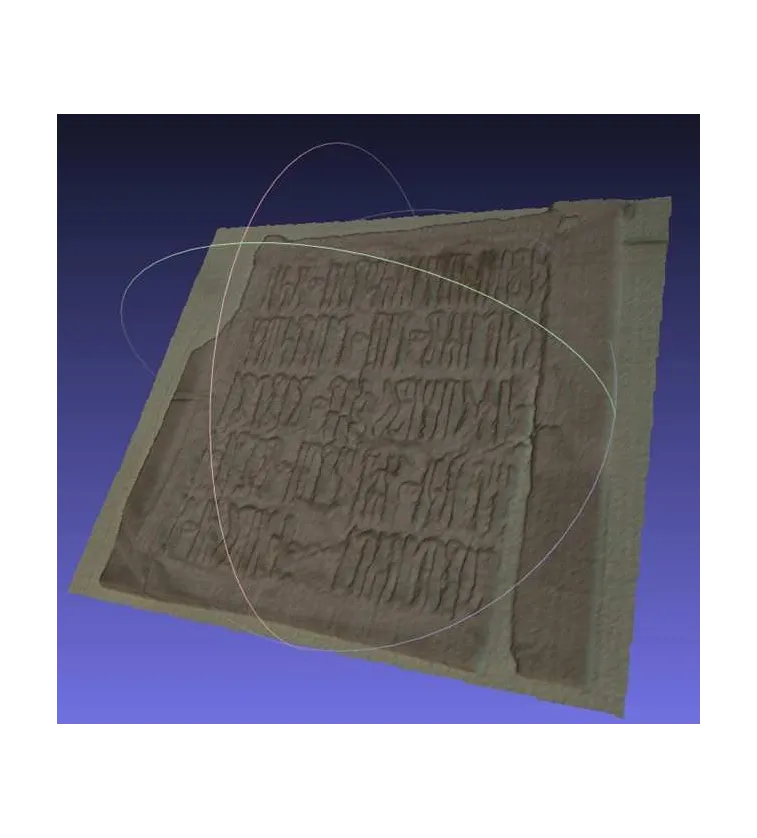
3D-Digitizing of Glaser Squeezes
Many of the original inscriptions of ancient South Arabia are lost or inaccessible, but survived in squeezes made by Eduard Glaser. A new database with 3D-images will preserve them for the future.

Many of the original inscriptions of ancient South Arabia are lost or inaccessible, but survived in squeezes made by Eduard Glaser. A new database with 3D-images will preserve them for the future.

ABaC:us is a thematic collection of literary texts of the baroque era dealing with death.
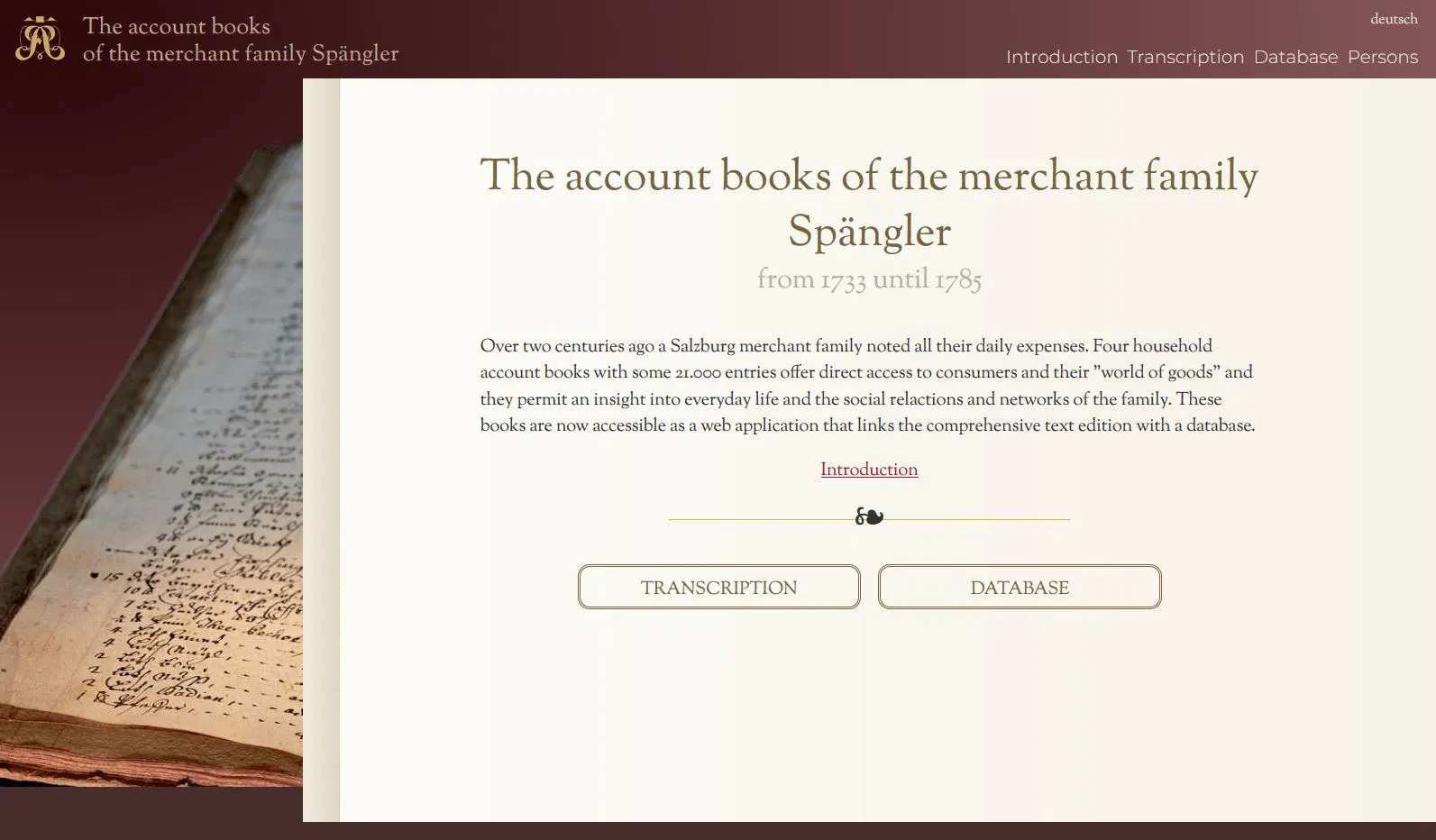
This digital edition allows an insight into the consumption, daily life and the social relations of a merchant family in Salzburg during the 18th century.
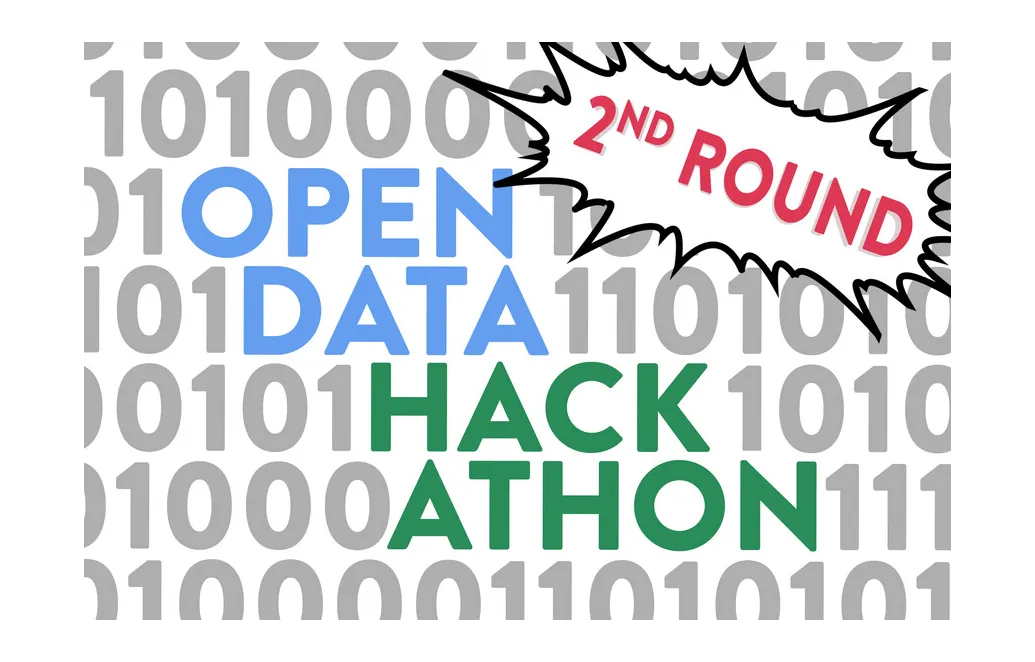
The ACDH-CH organized a virtual Hackathon with the data of the DH Course Registry, a platform that provides an overview of DH teaching activities worldwide. The task was to develop a visualization this data. Here the 4 winning projects are presented.

Digital Edition of the Annals of Abbot Gerhard Hörger for the monastery of Aldersbach

There's still a general lack of knowledge about how algorithms surround us and determine everyday life in our cities and in many areas of human activity, invisibly and secretly operating through our digitized contexts.
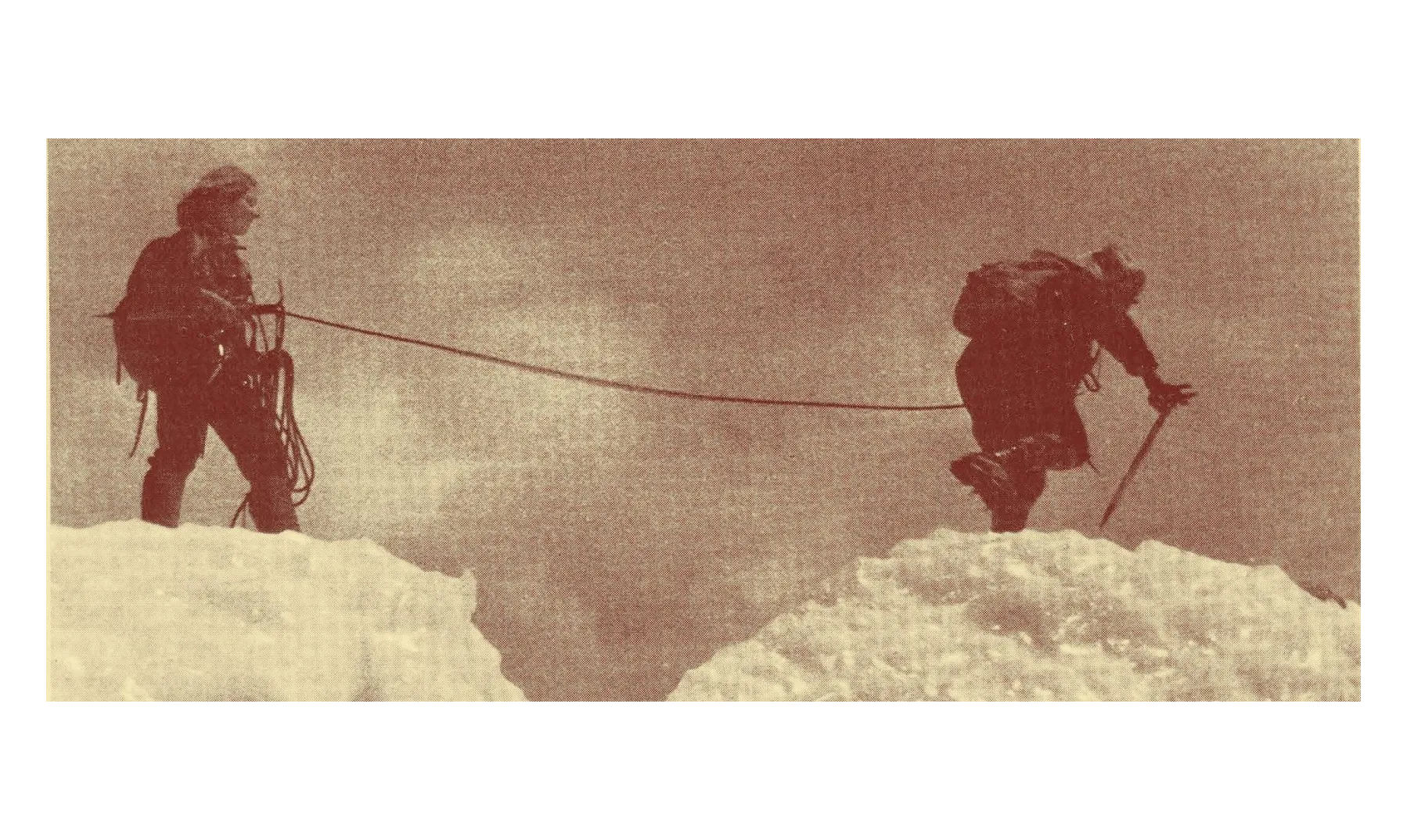
Digitized and annotated corpus of the almanac of the Austrian alpine club 1872 – 1998.
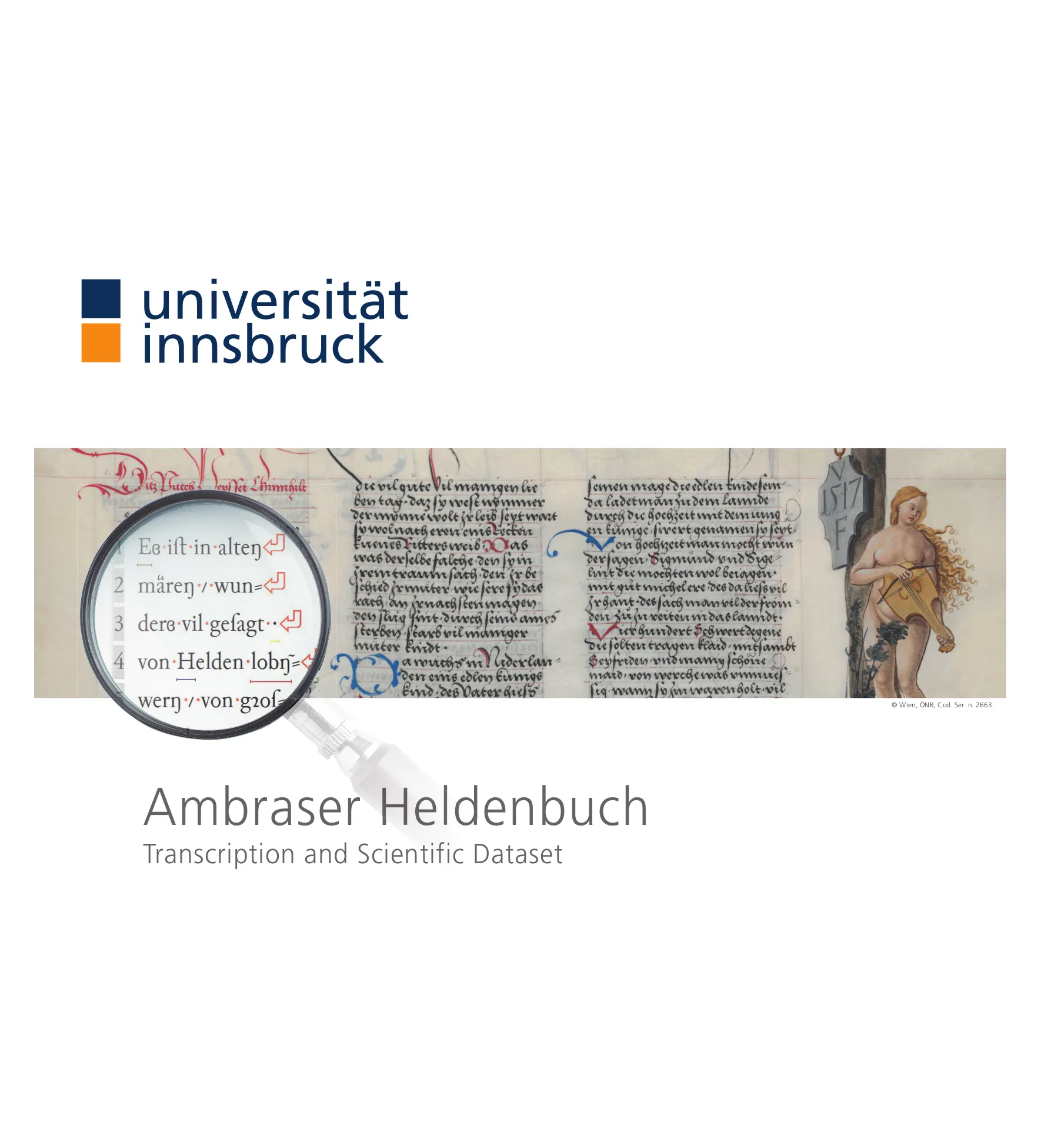
Complete transcription of the 'Ambraser Heldenbuch' for the first time
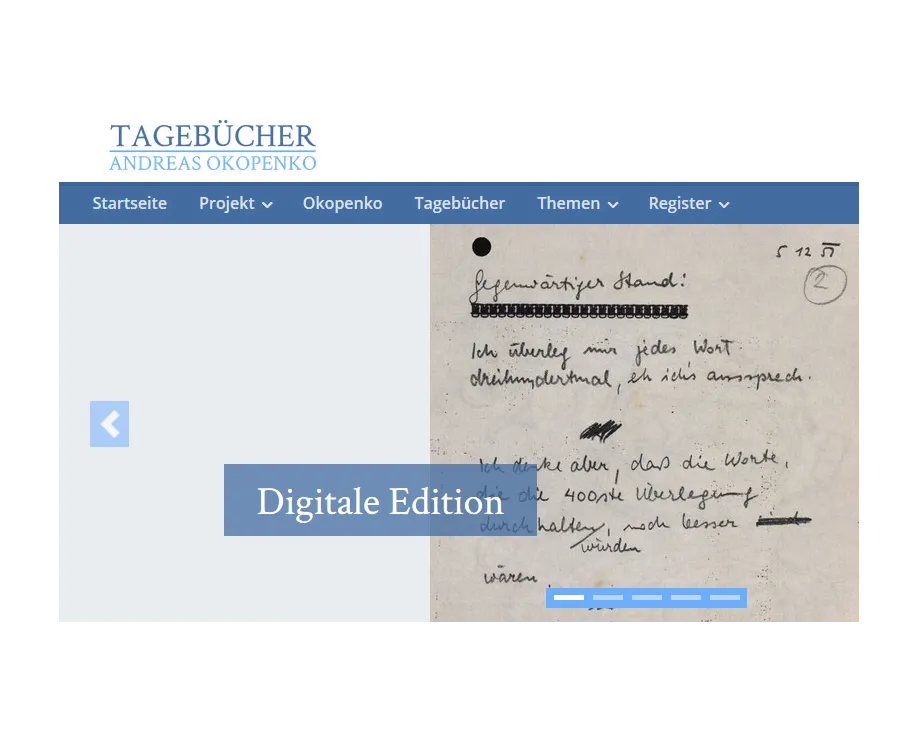
The digital edition of Andreas Okopenko's early diaries brings to life the beginnings of Austrian avantgarde poetry and testifies to his role as hypertext-pioneer.
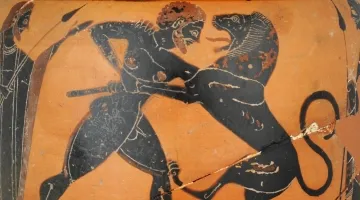
Die Original- und Abgusssammlung des Instituts für Archäologie der Karl-Franzens-Universität.
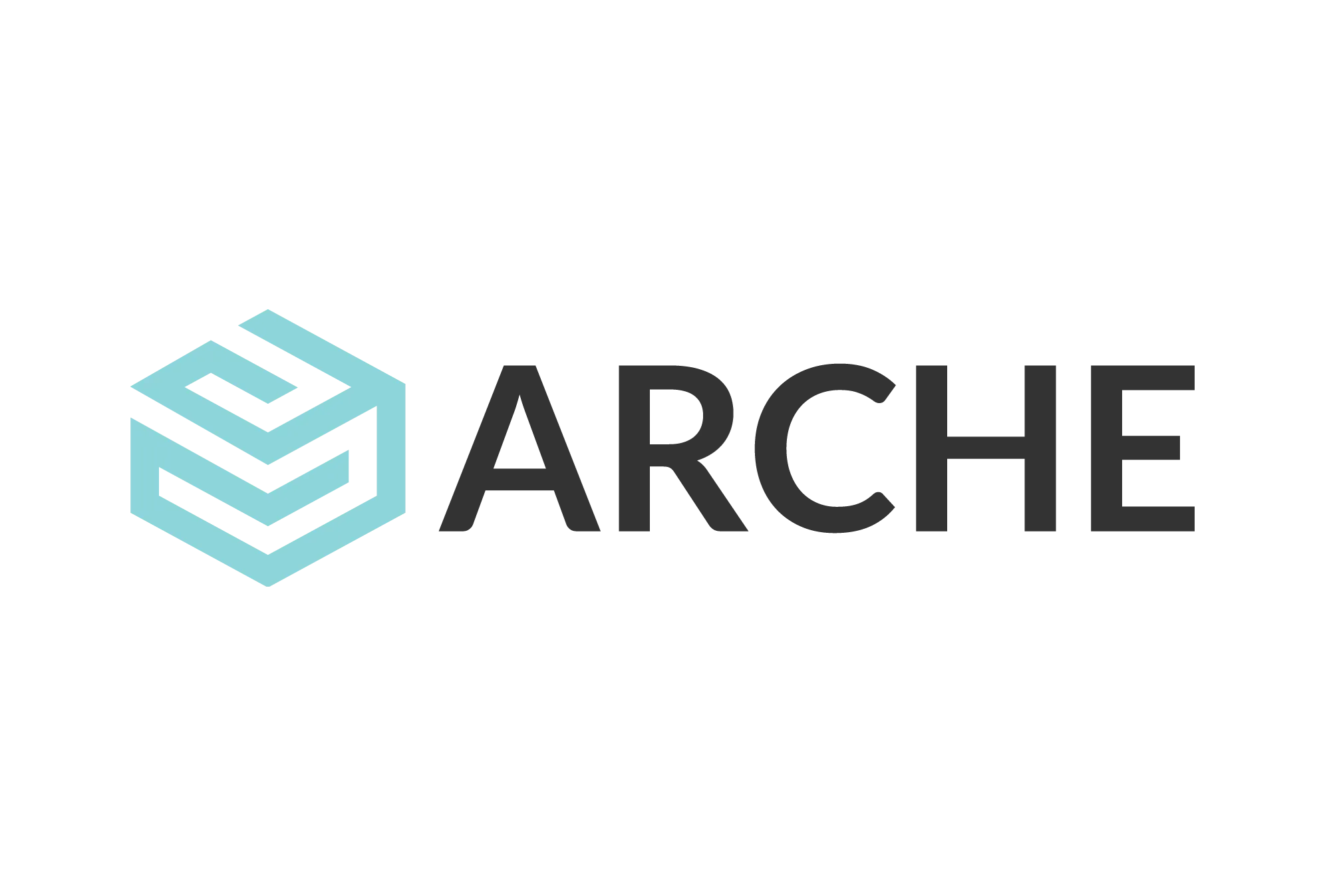
ARCHE (A Resource Centre for the HumanitiEs) is a service for long term preservation as well as dissemination of digital research data and resources for the Austrian humanities community. ARCHE welcomes data from all humanities fields.
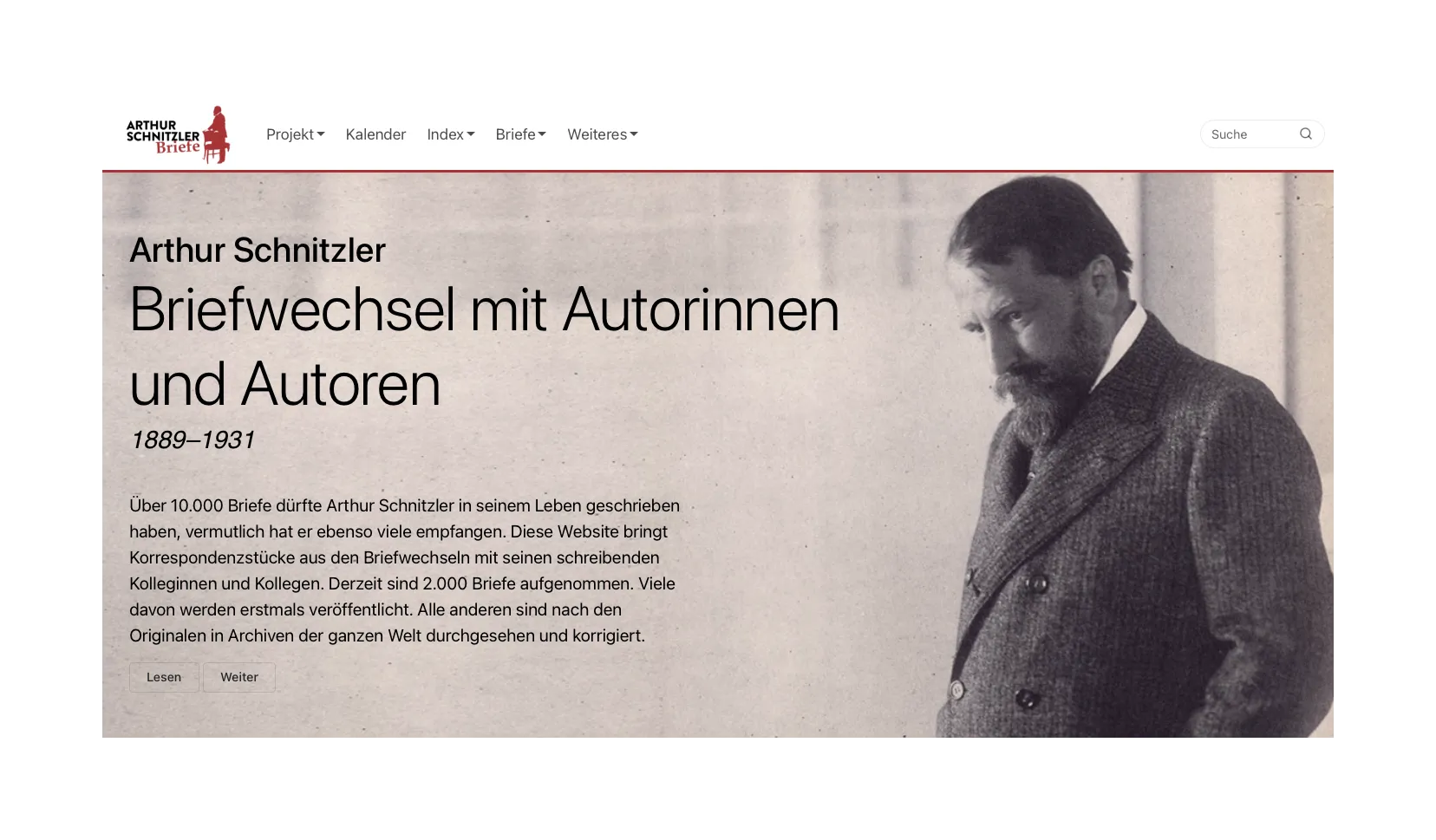
Online-Edition of the professional correspondence of Arthur Schnitzler (1862–1931).
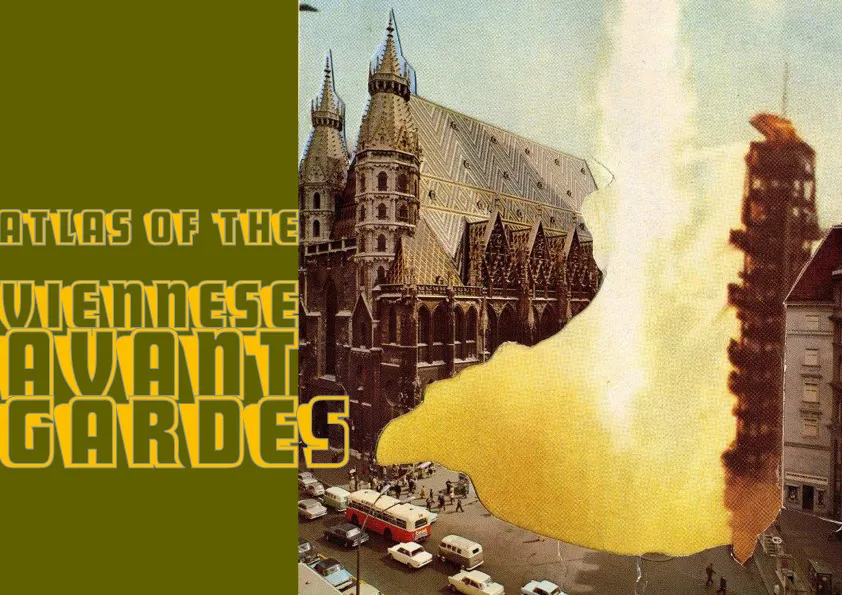
The Atlas of the Viennese Avantgardes (AVA) establishes an internationally networked digital centre for researching and disseminating knowledge about the avant-gardes in Vienna.
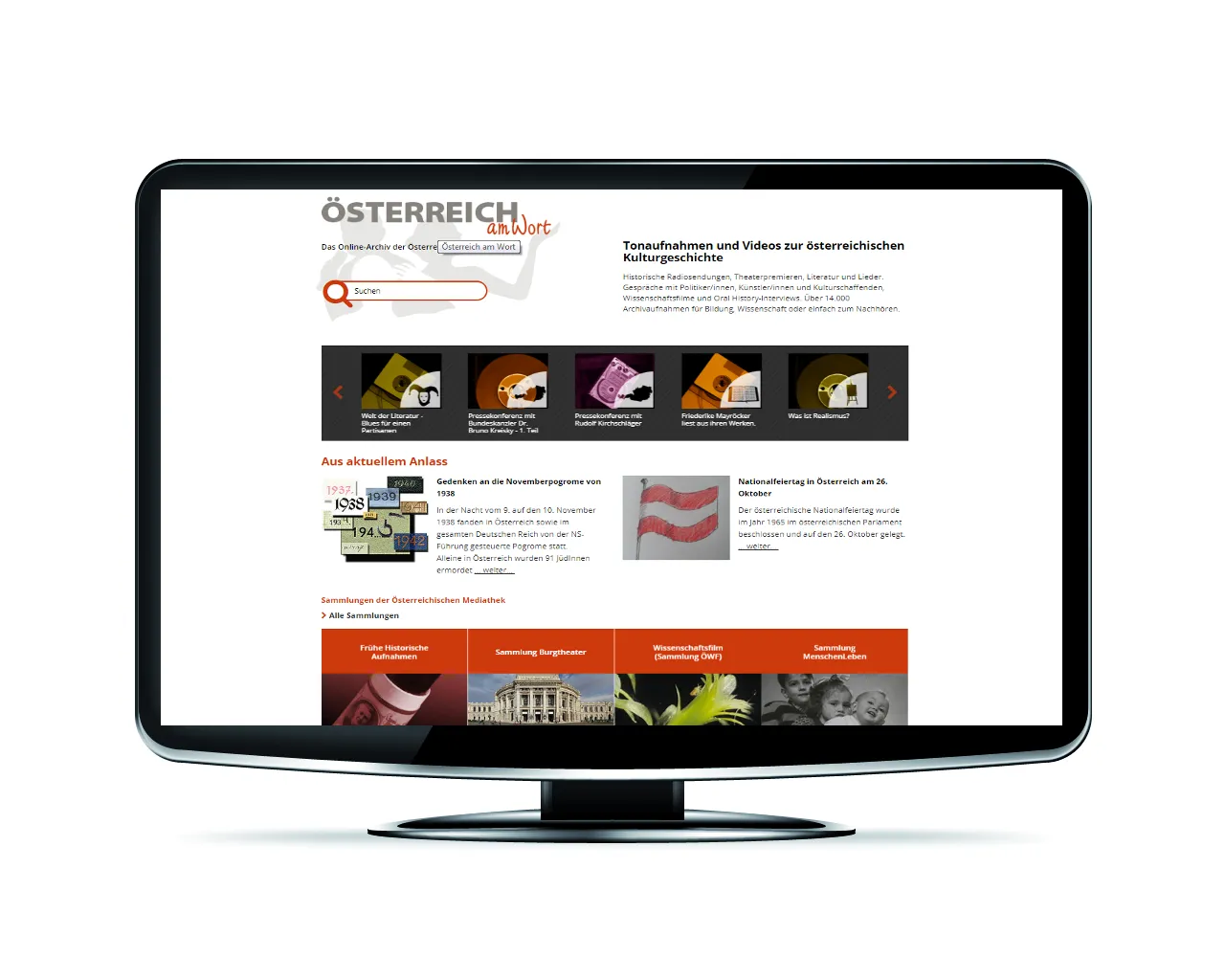
The audiovisual online archive of the Austrian media centre "Österreichische Mediathek"
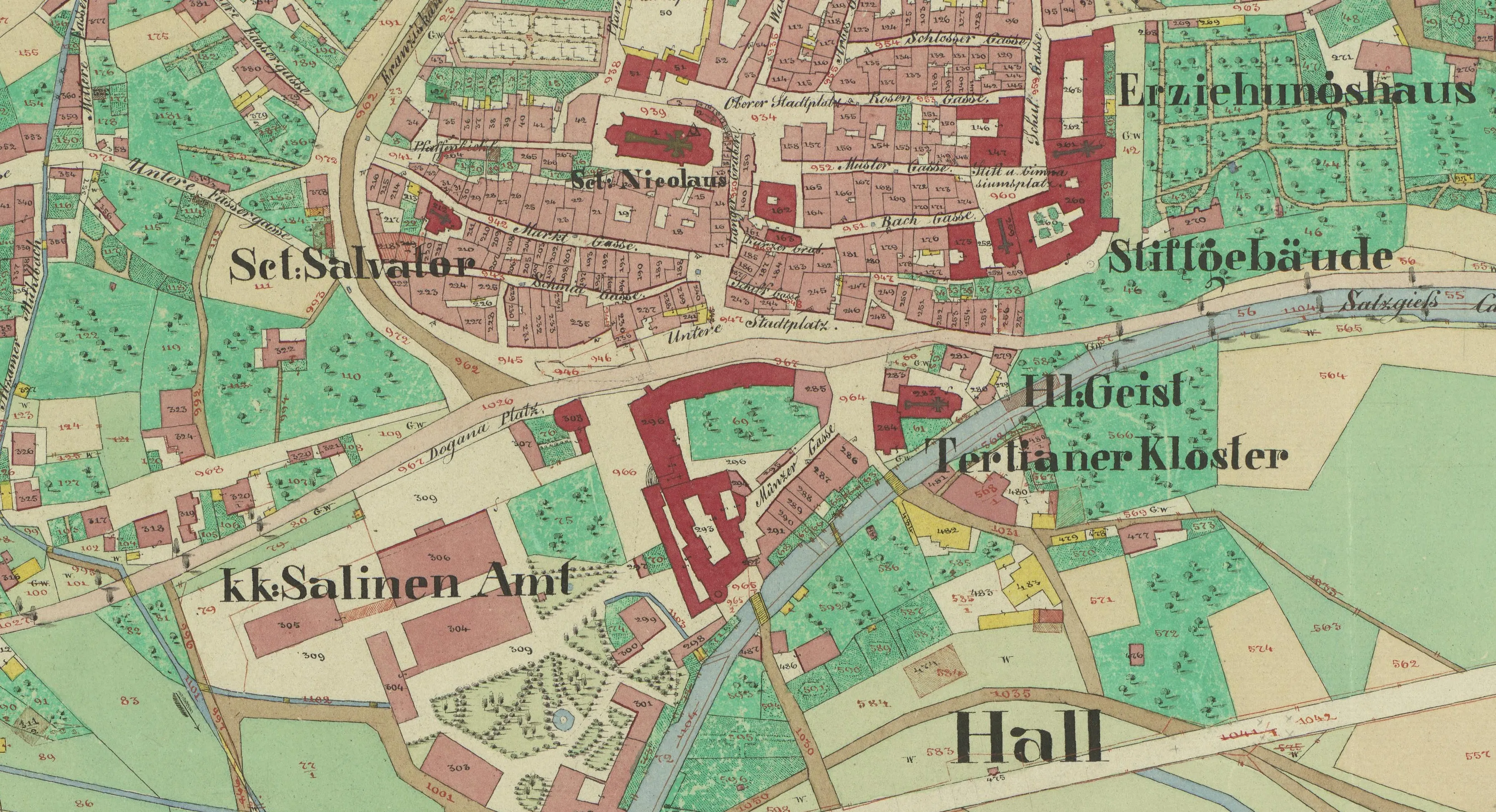
The project uses automated handwriting recognition and a Citizen Science application to index the Franziszeische Kataster (c. 1860) for the present-day province of Tyrol.

Listening in on what happened 20, 30 or 40 years ago.
A geographic information system will be established in order to analyze and visualize the transformation of the city through time as well as its perception thereof during the process of urbanization.

Digitale Editionen der schriftlichen Hinterlassenschaften des Tiroler Bauern Leonhard Millinger
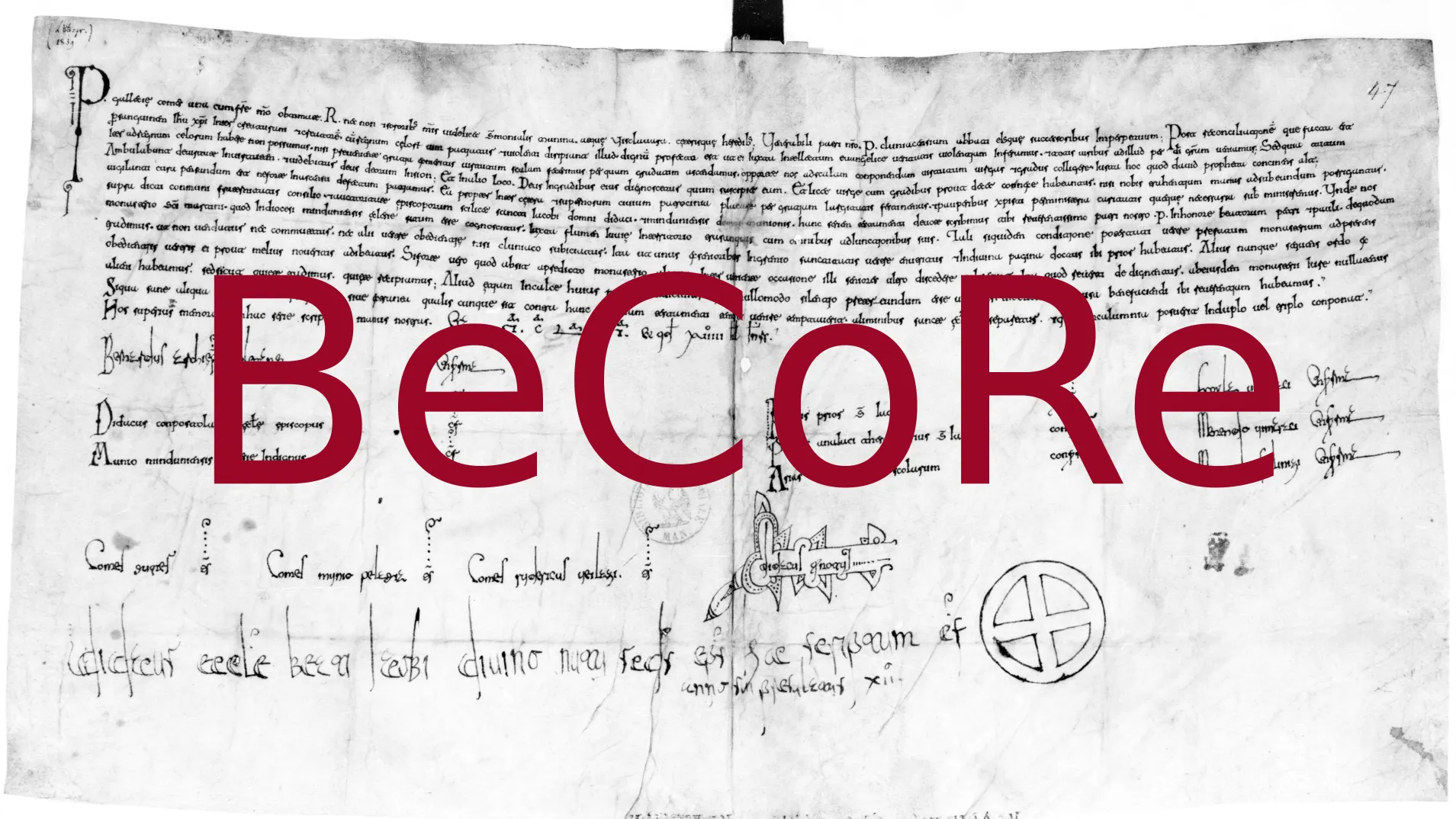
BeCore aims at a comparative study of the textual and graphical signs of authority and validitation in late medieval charters in France and Austria, basing on the resources given by Monasterium.
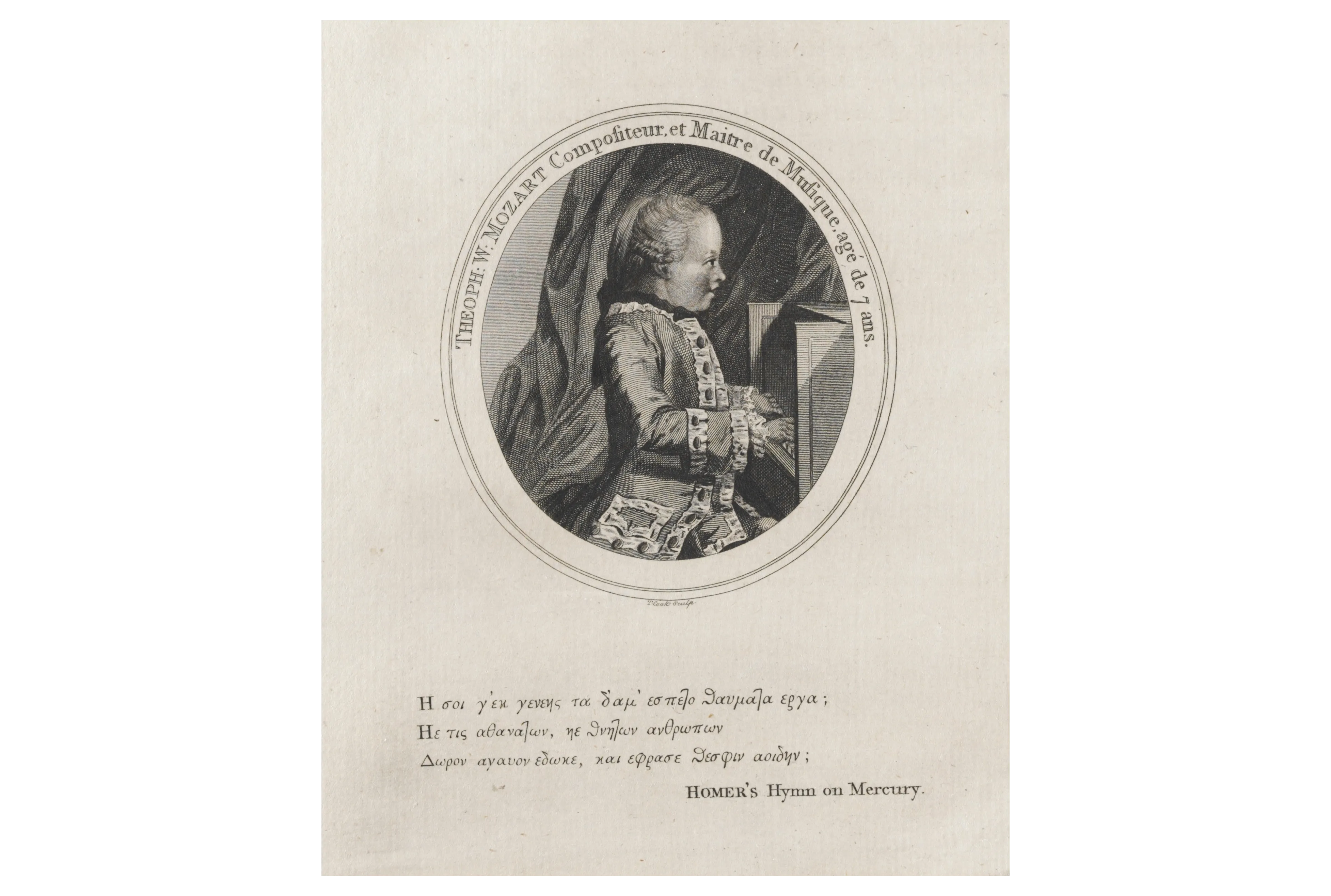
The digitisation portal Bibliotheca Mozartiana digital makes the historical holdings of the Mozarteum Foundation, Salzburg, accessible for free, and links them with digital editions and research projects.
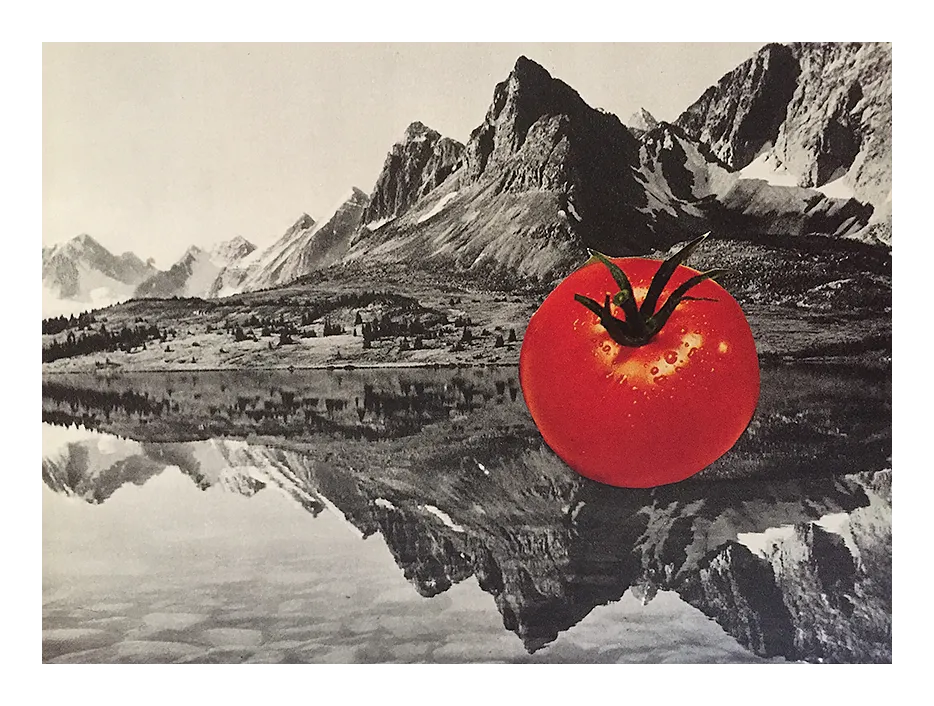
The three-diversity movement aims to implement the UNESCO declaration of diversity through the development of an innovation ecosystem and to contribute to the achievement of Agenda2030 along the SDGs.

Get support from Bring Your Project when using the ONB Labs
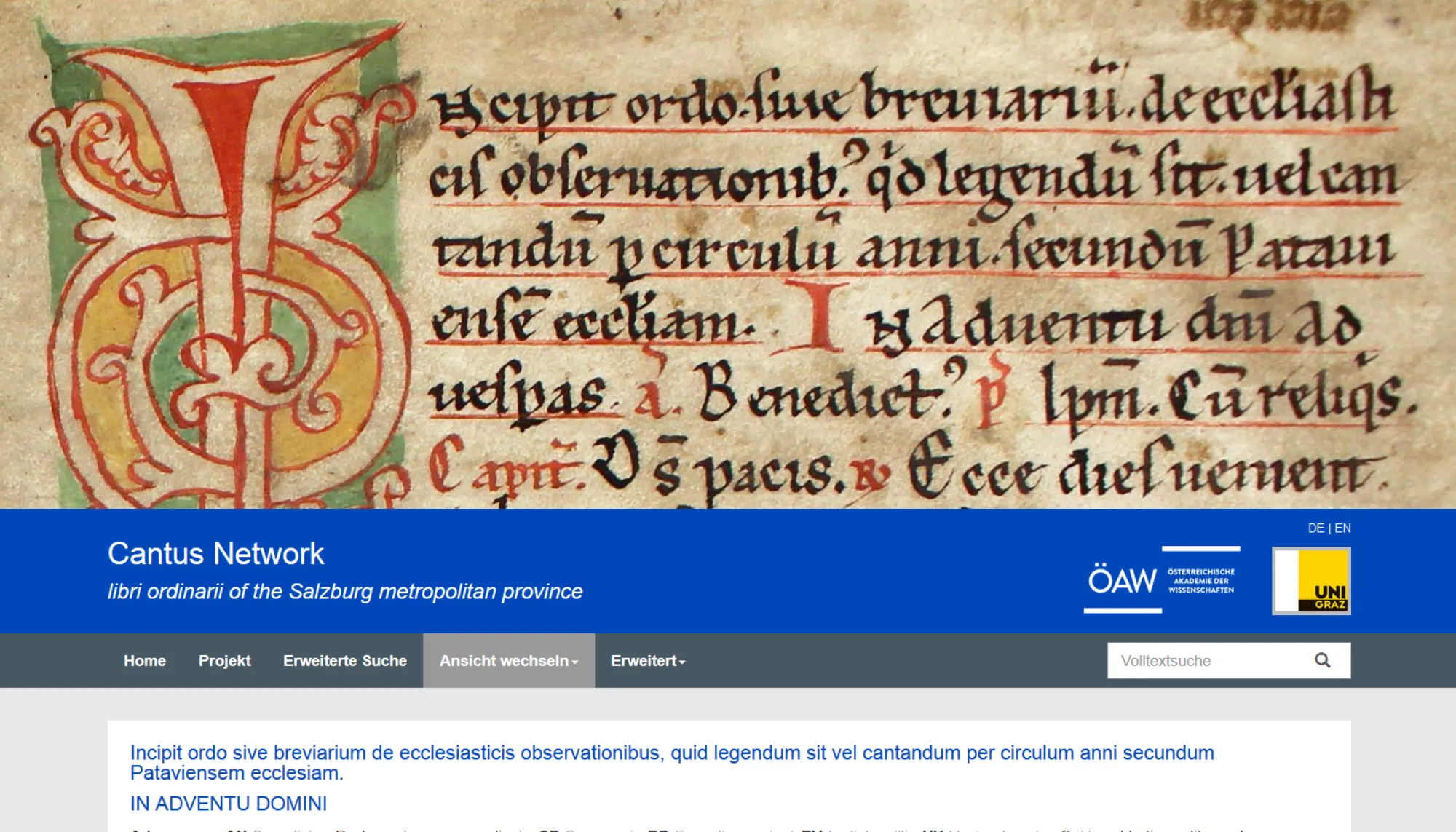
Cantus Netzwork – a semantically enriched digital edition of Libri ordinarii of the Salzburg metropolitan province

An interdisciplinary team prepares in-depth description of manuscripts from the famous royal library in Buda. Images and TEI-P5 coded descriptions will be presented on a digital manuscript platform at the Austrian National Library.
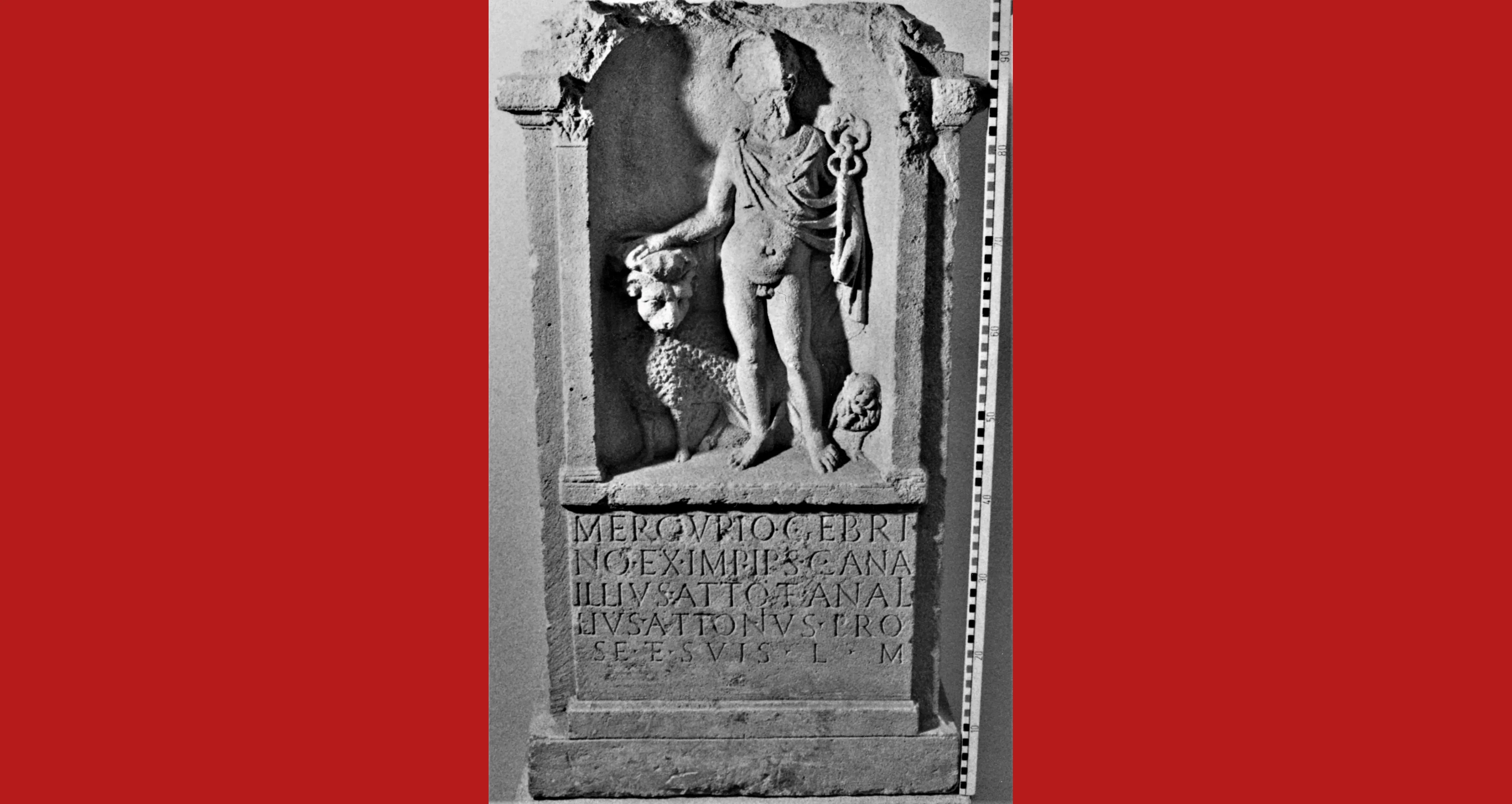
A Case Study on Religion in the Context of Cultural Contacts and Cultural Transfer. This database provides the edition of inscriptions forming part of the research project described below.
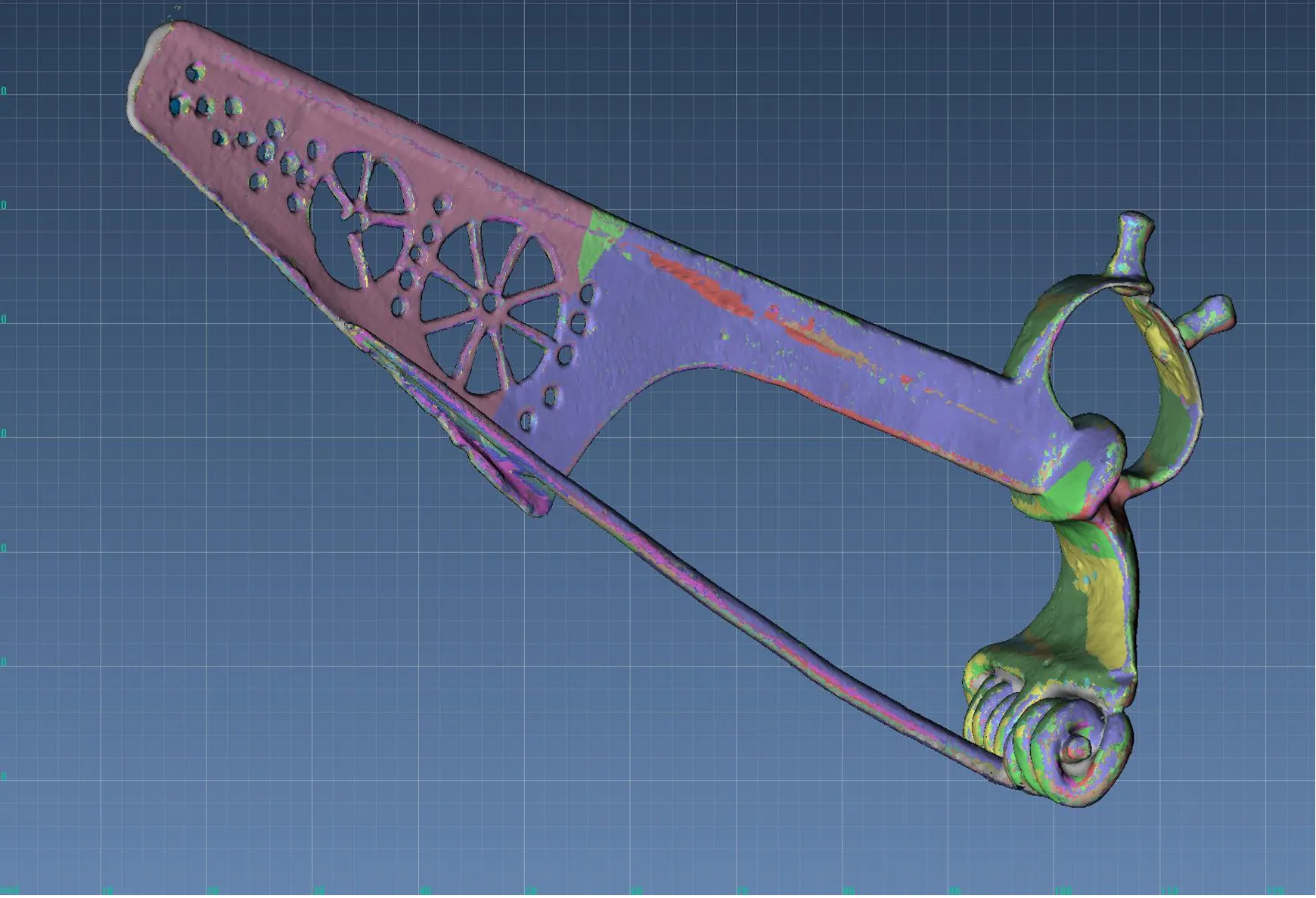
cfir.science is a web platform that makes information on Roman-age fibulae and dress components freely available in the form of images, 3D models and metadata.
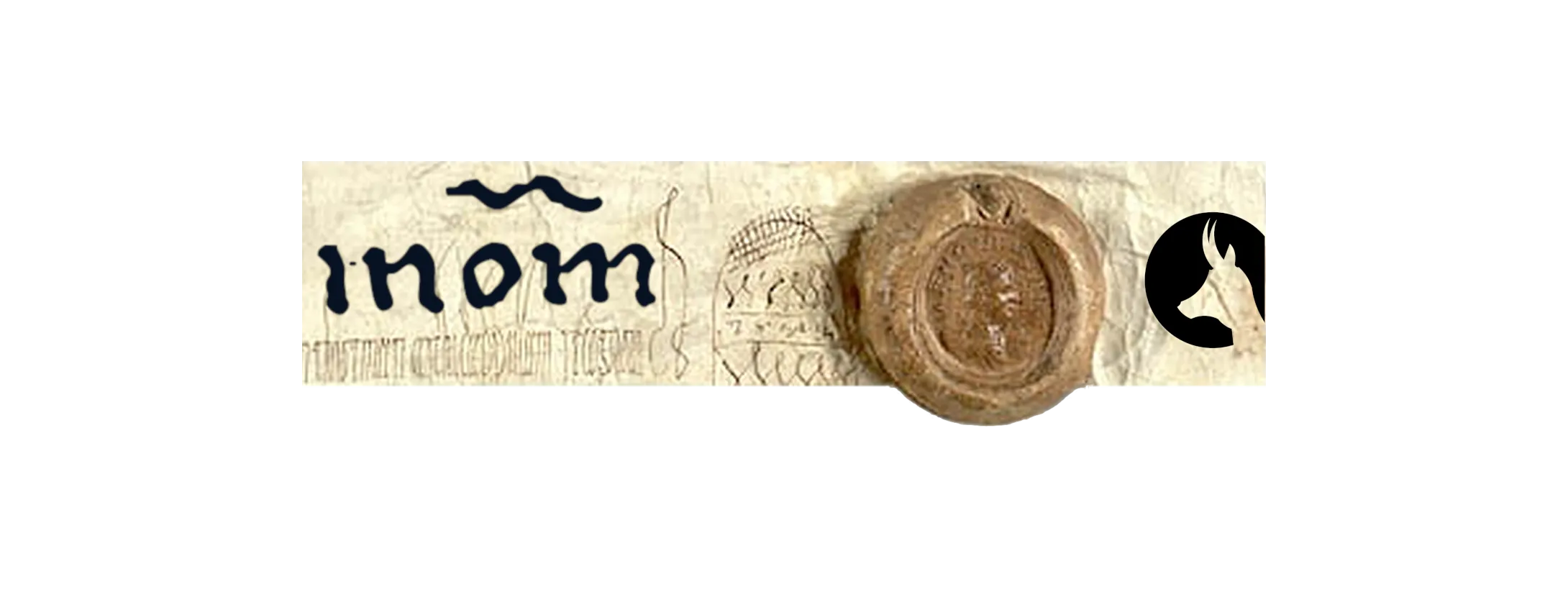
A Pilot for the Long-Term Preservation of Monasterium.net

Through the combined application of semantic technologies and artificial intelligence (AI), the project enables improved access, enrichment and analysis of a curated set of cultural food images.
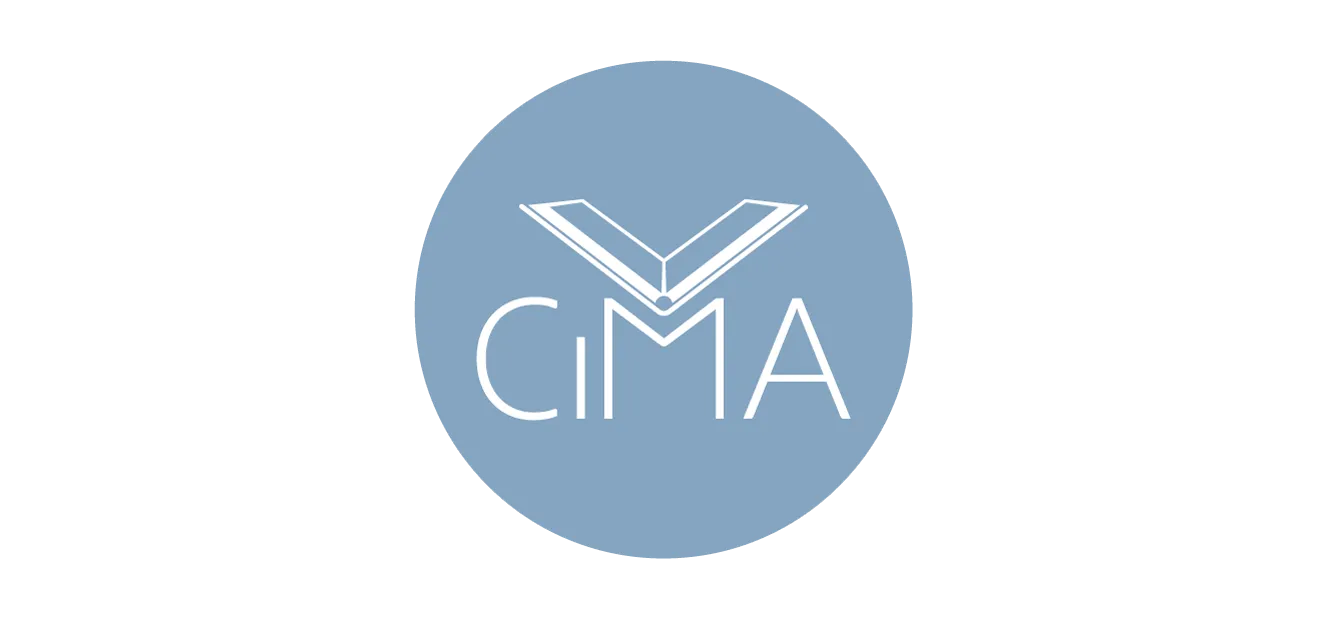
The Centre of Image and Material Analysis in Cultural Heritage (CIMA) is an interuniversity research institution devoted to the digital recording and image analysis, chemical material analysis and documentation of written heritage.
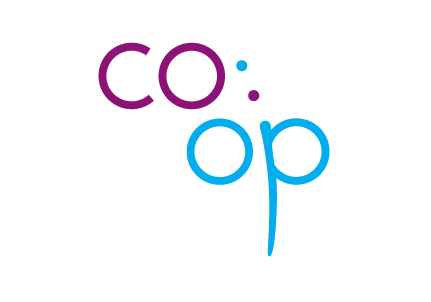
The creative archives' and users' network

Computer Vision for Digital Humanities has become a very relevant skill for many, yet accessible instruction for an audience without a background in computer science remains scarce.

For machine aided analysis a recipe corpus and its metadata are modelled according to international standards. The recipes are enriched by ontologies for ingredients, cooking processes, etc.

The digital processing, protection, publication and accessibility of Styrian cultural and scientific heritage and its aggregation on a common web portal.
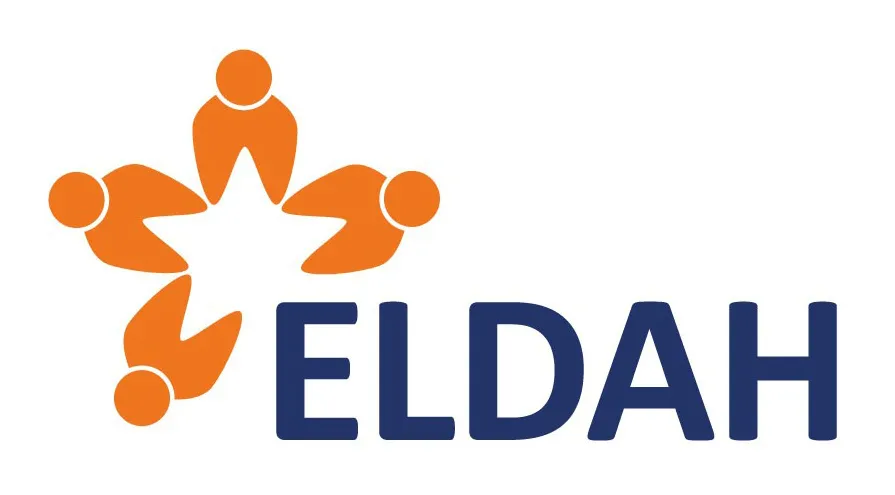
The aim of the CFW is to support humanities researchers within the European Union in obtaining valid consent for data processing in the context of their specific professional activity.
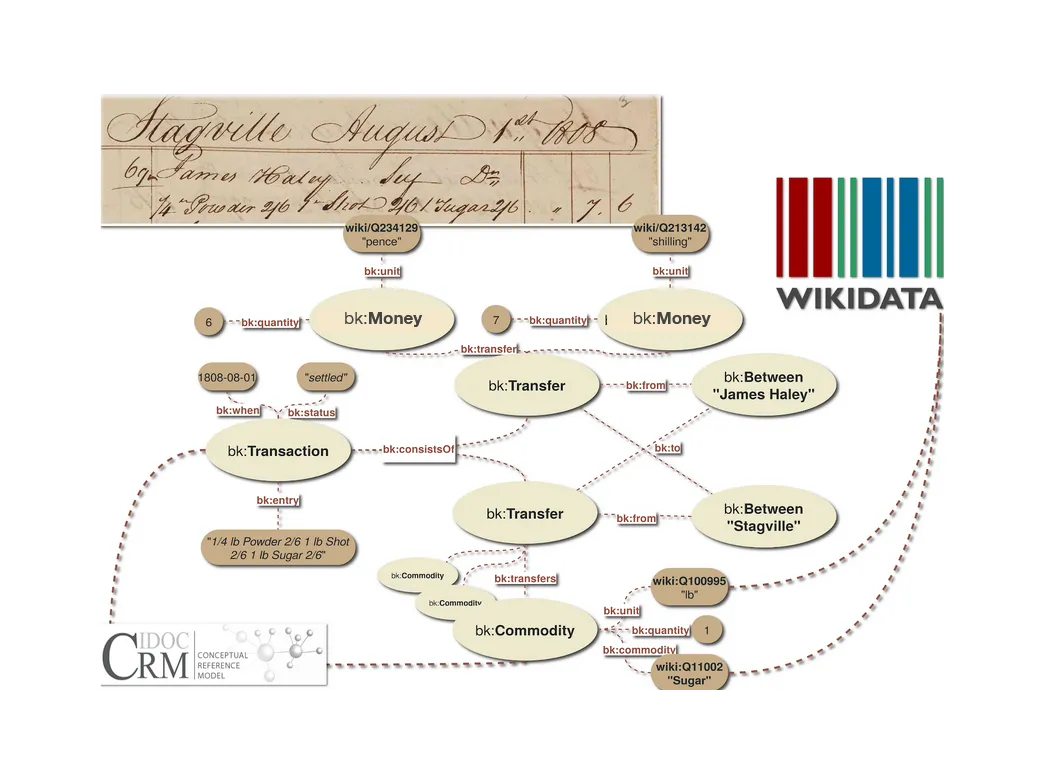
The project aims to implement a publishing hub for digital editions of historical accounting records based on Web of Data technologies and LOD paradigms.

#DesignForEmergency was started at the Center for Design / NEW as a global collaborative project with the aim of addressing the COVID19 crisis in a participatory manner and uniting it under a Design for Health initiative.
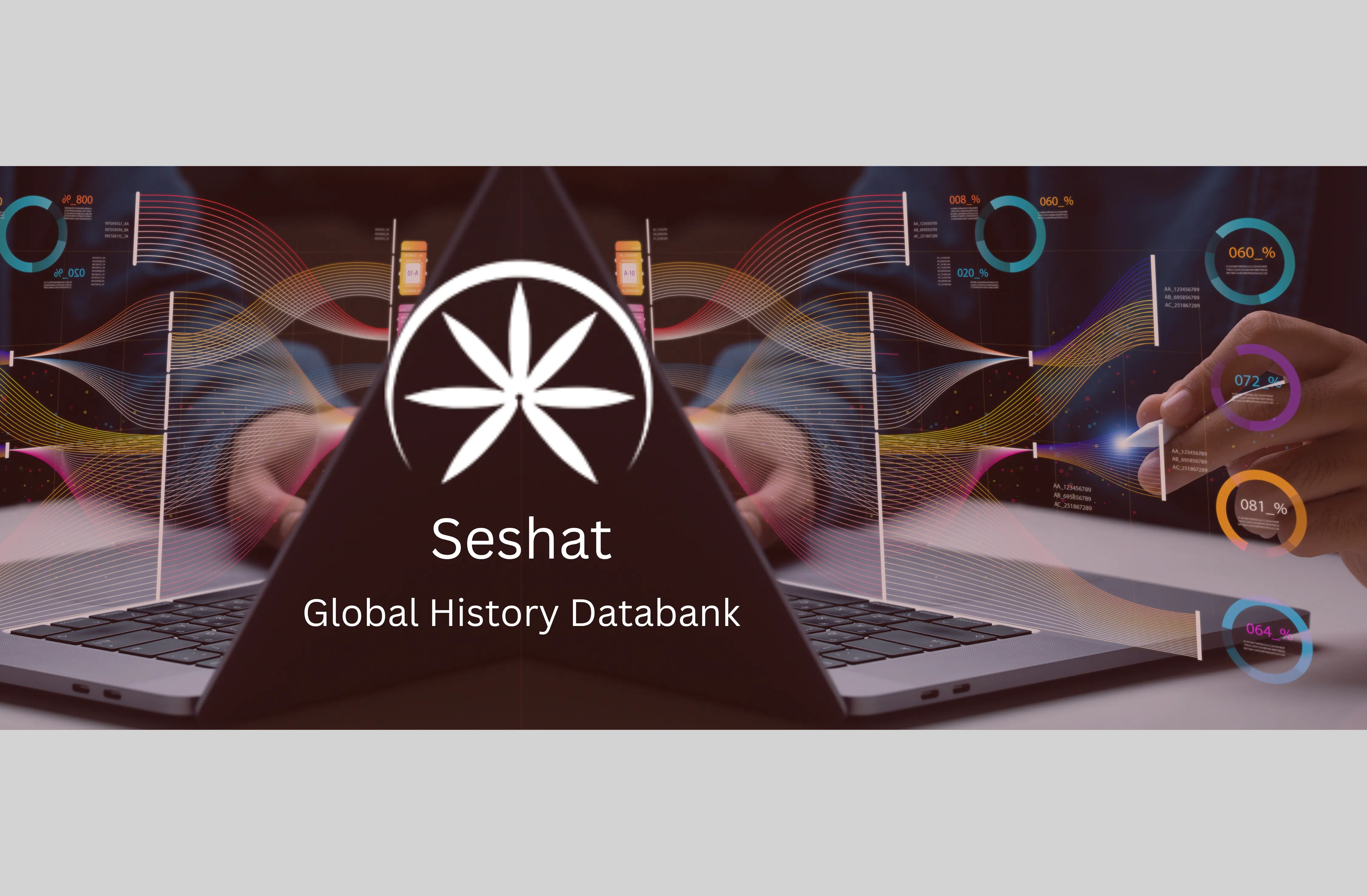
This project addresses the challenges of expanding and increasing the cross-utilization of historical datasets by developing a NLP algorithm that can help expand current databases and increase the translatability of data across projects.
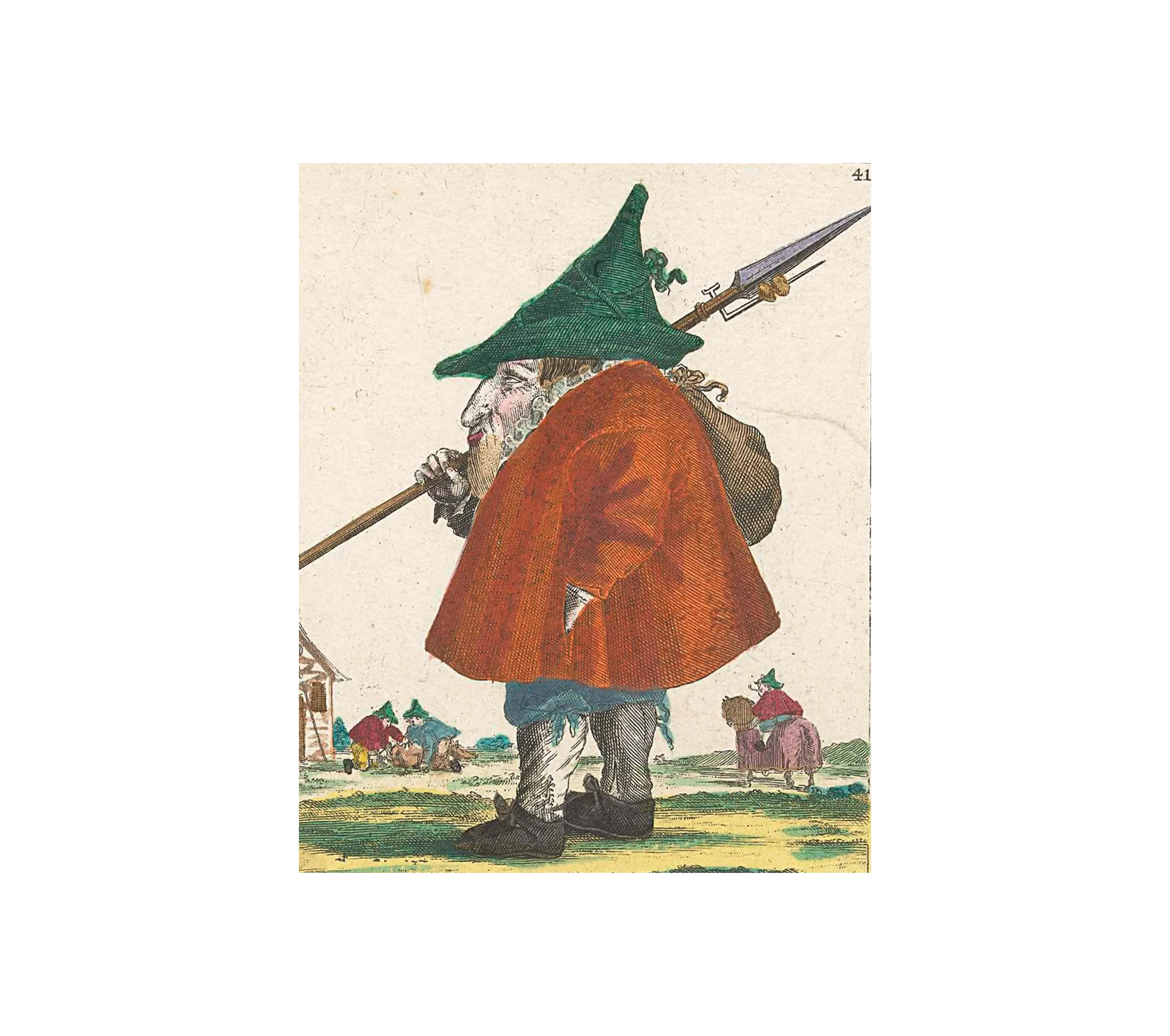
Dialect Cultures - database of "Bavarian-Austrian dialects cultures before 1800"
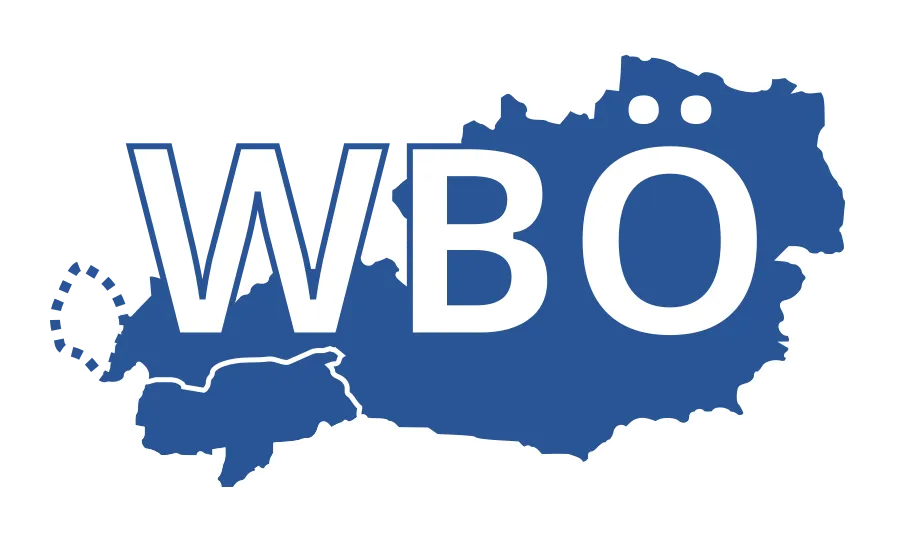
The project Dictionary of Bavarian Dialects in Austria is dedicated to the comprehensive documentation and lexicographic analysis of the various base and regional dialects of (historical) Austria.
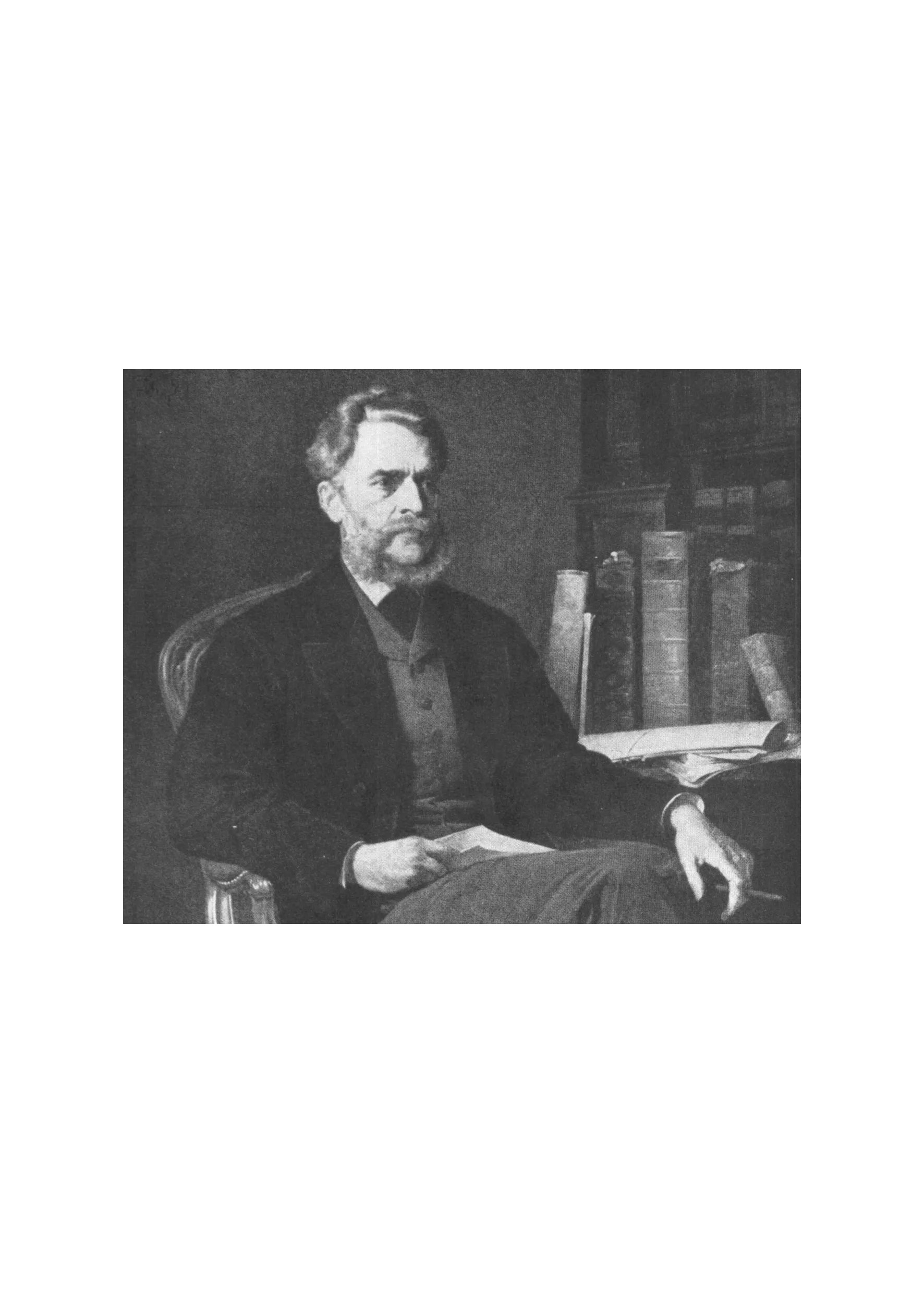
Digitale online-Edition der Korrespondenz von Leo von Thun-Hohenstein

The digital scholarly edition documents governmental documents from the Monarchy's administrative legacy. 60 years of meeting minutes: a huge data trove of prosopographical, political, administrative, economic, cultural and social information.
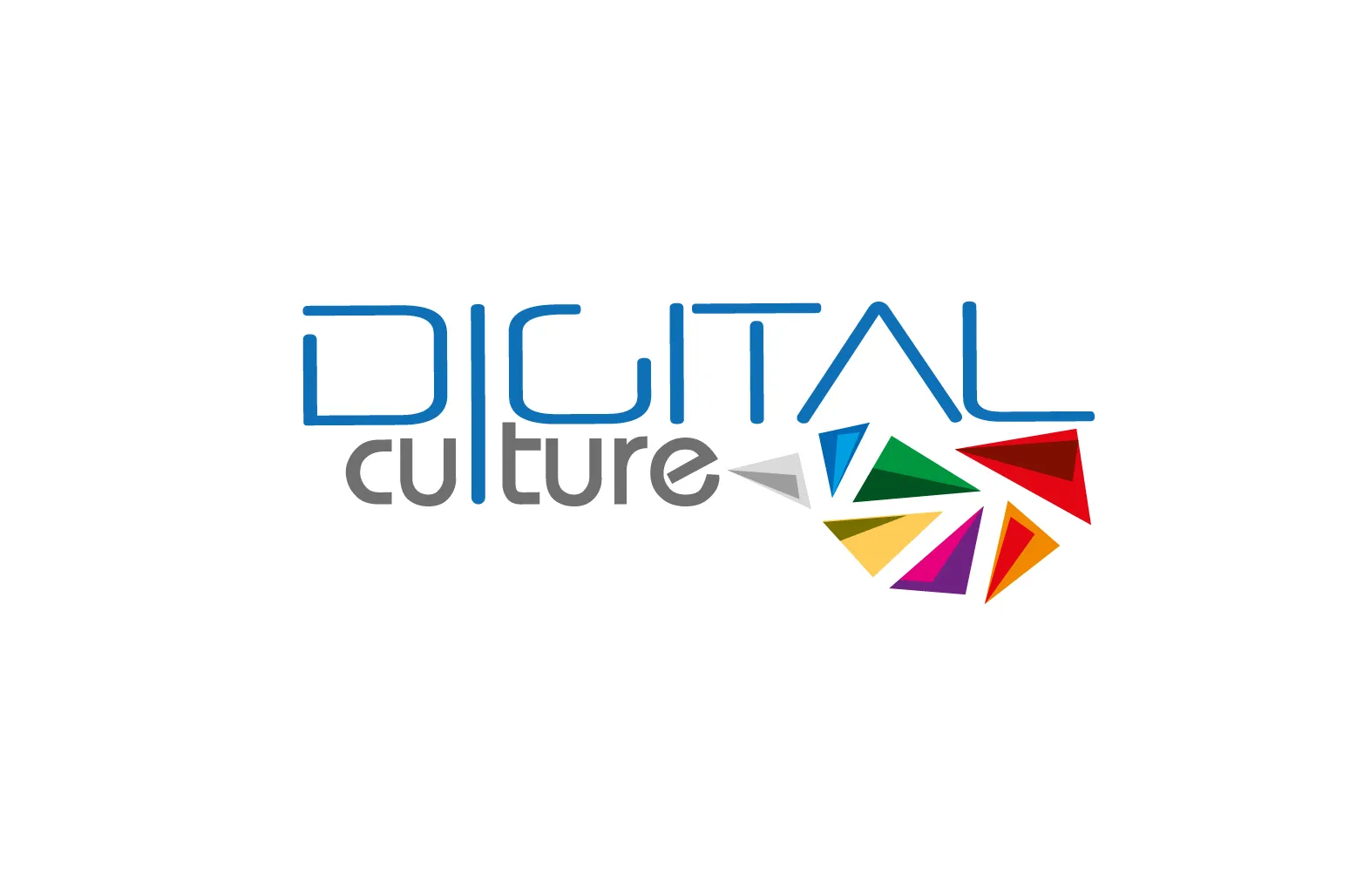
The project aims to create a sustainable and efficient education program dedicated to adult learners with low digital skills and low-qualified adults involved in the creative industries sector.
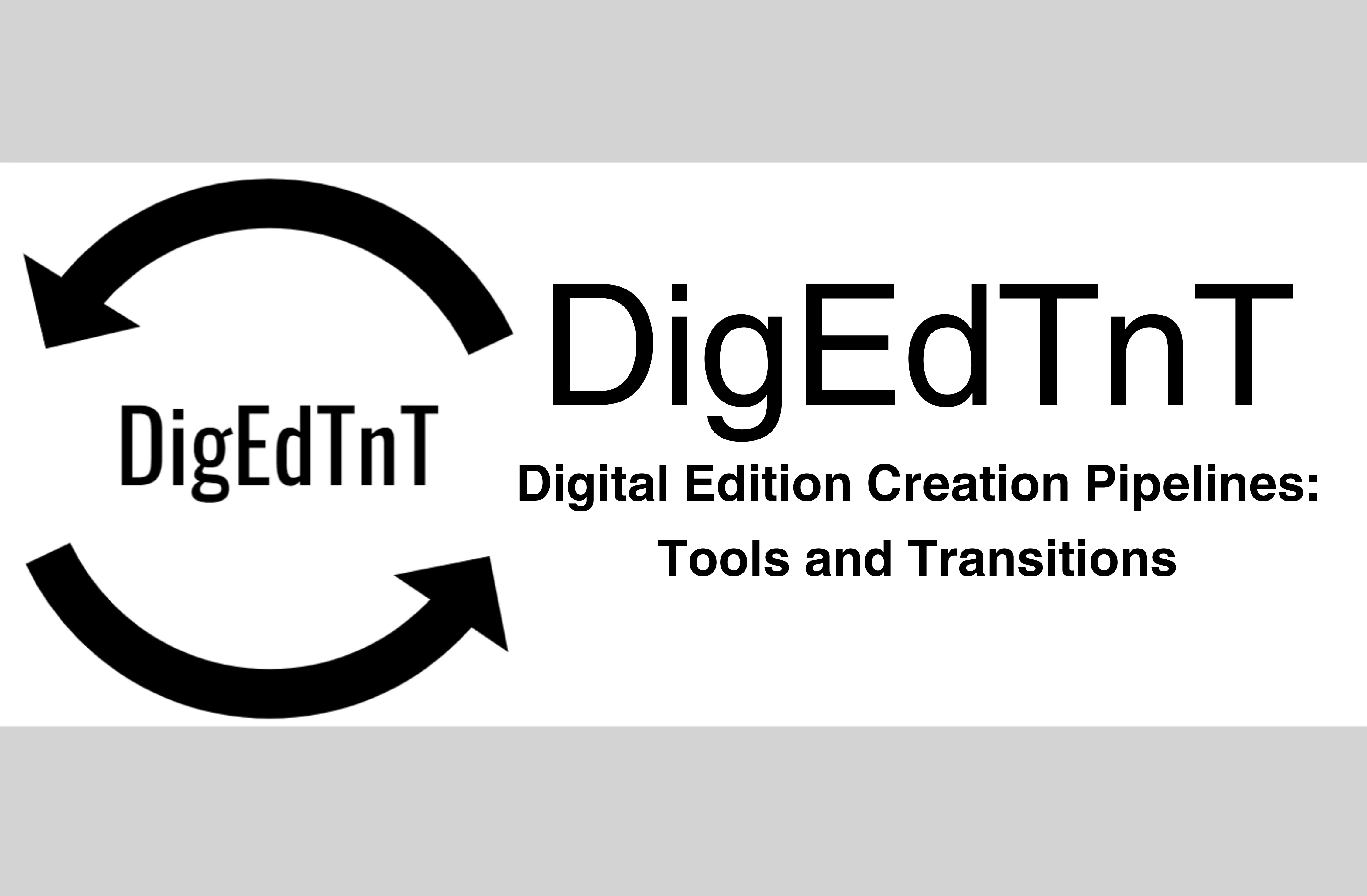
The goal of the project is to create best practice guidelines and tutorials for the transitions between selected tools that are frequently used in digital editing. These tutorials and guidelines will be realised as an extension of the KONDE Weißbuch.

The project aims at enlarging and updating the existing White Paper, which was a product of the HRSM project KONDE -Kompetenznetzwerk Digitale Edition.

Digital Editions of medieval and early modern accounts and economic records
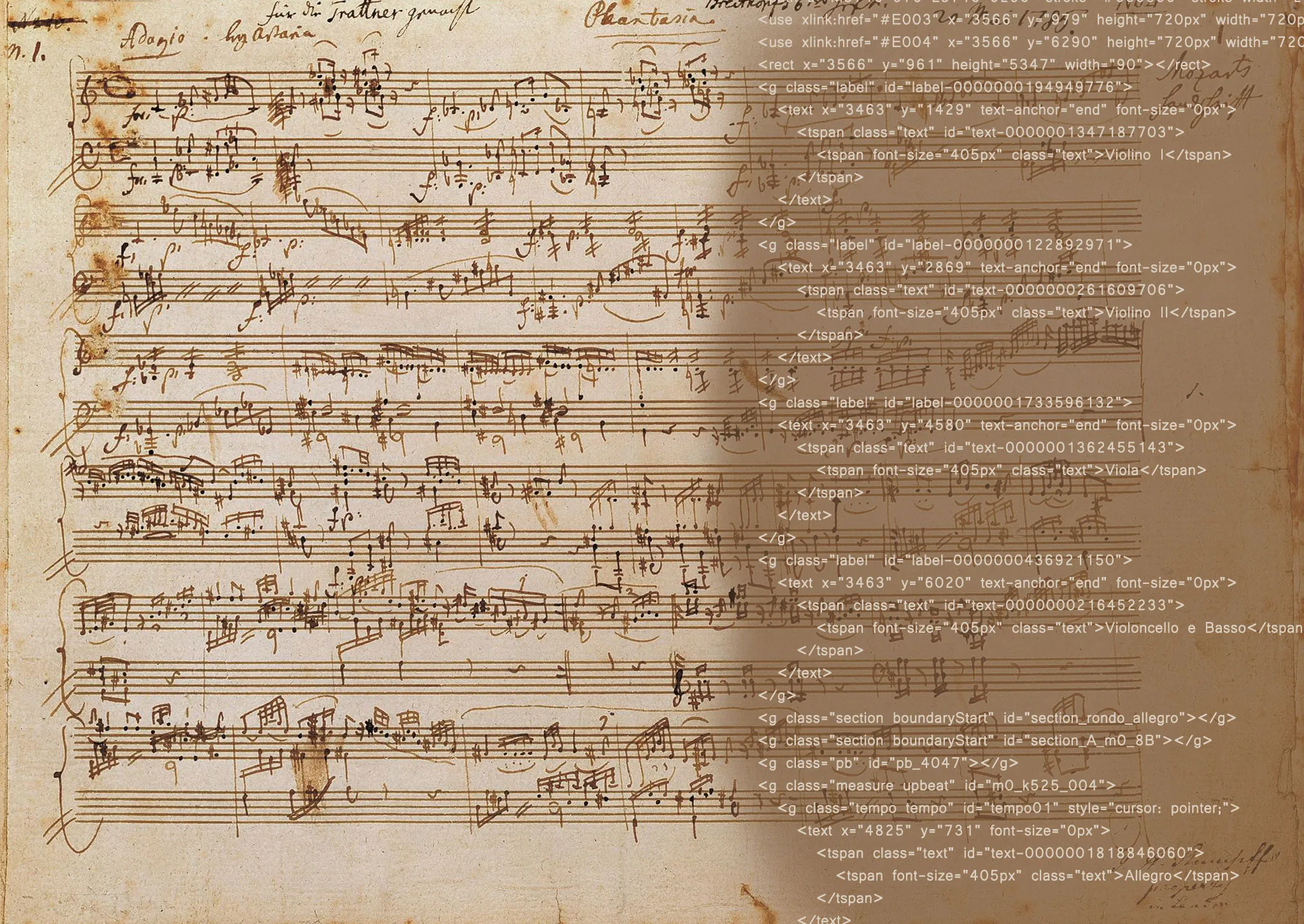
The Digital Interactive Mozart Edition (DIME) aims to make Wolfgang Amadé Mozart's entire musical oeuvre available to everyone in digital scholarly editions coded according to the standards of the Music Encoding Initiative (MEI).
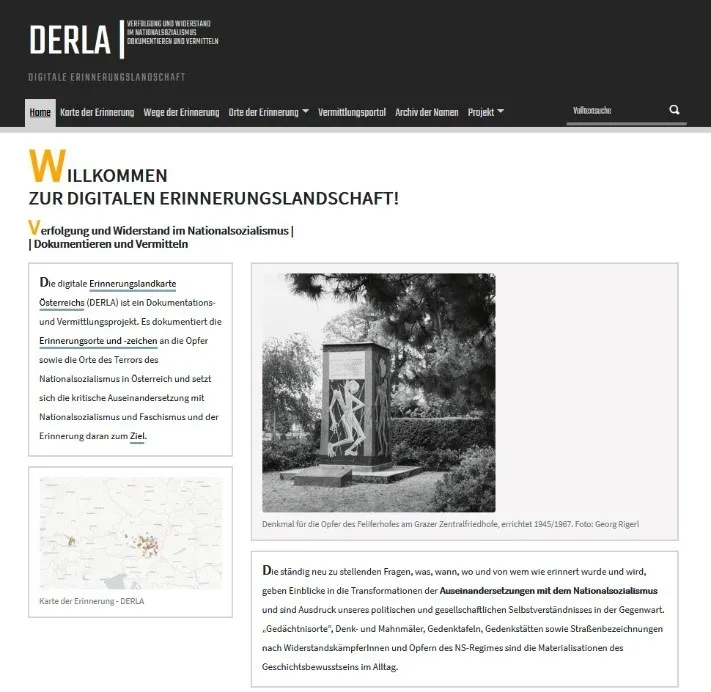
'Digital Memoryscape of Austria (DERLA)' aims at documenting all signs of remembrance of the victims of National Socialism in Austria by means of a long-term stable digital map of memory as well as the development of a digital pedagogy of memory.
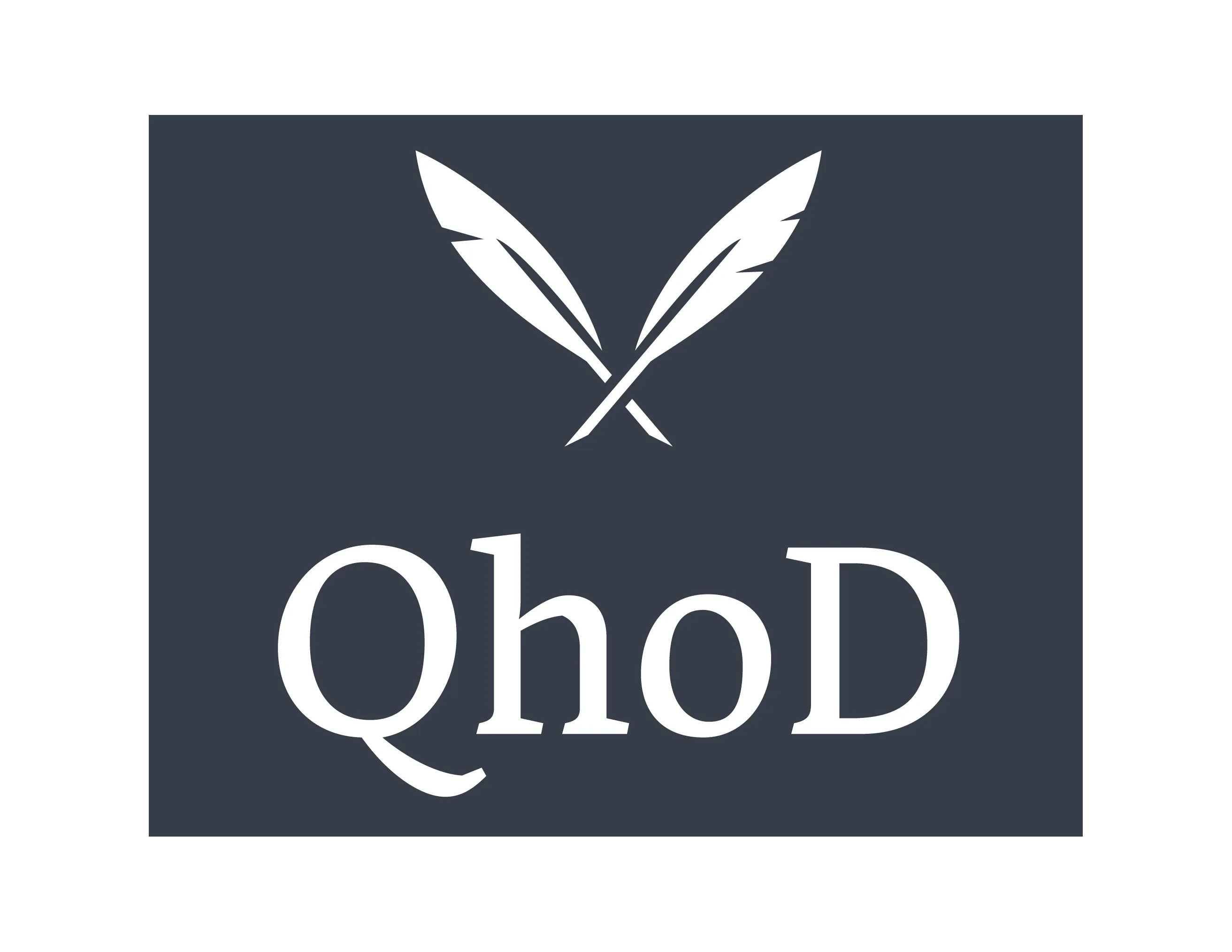
QhoD edits sources on Habsburg-Ottoman diplomacy from the beginning of diplomatic relations between the Habsburg Monarchy and the Ottoman Empire at the turn of the 15th and 16th centuries to the demise of both empires at the end of World War I.
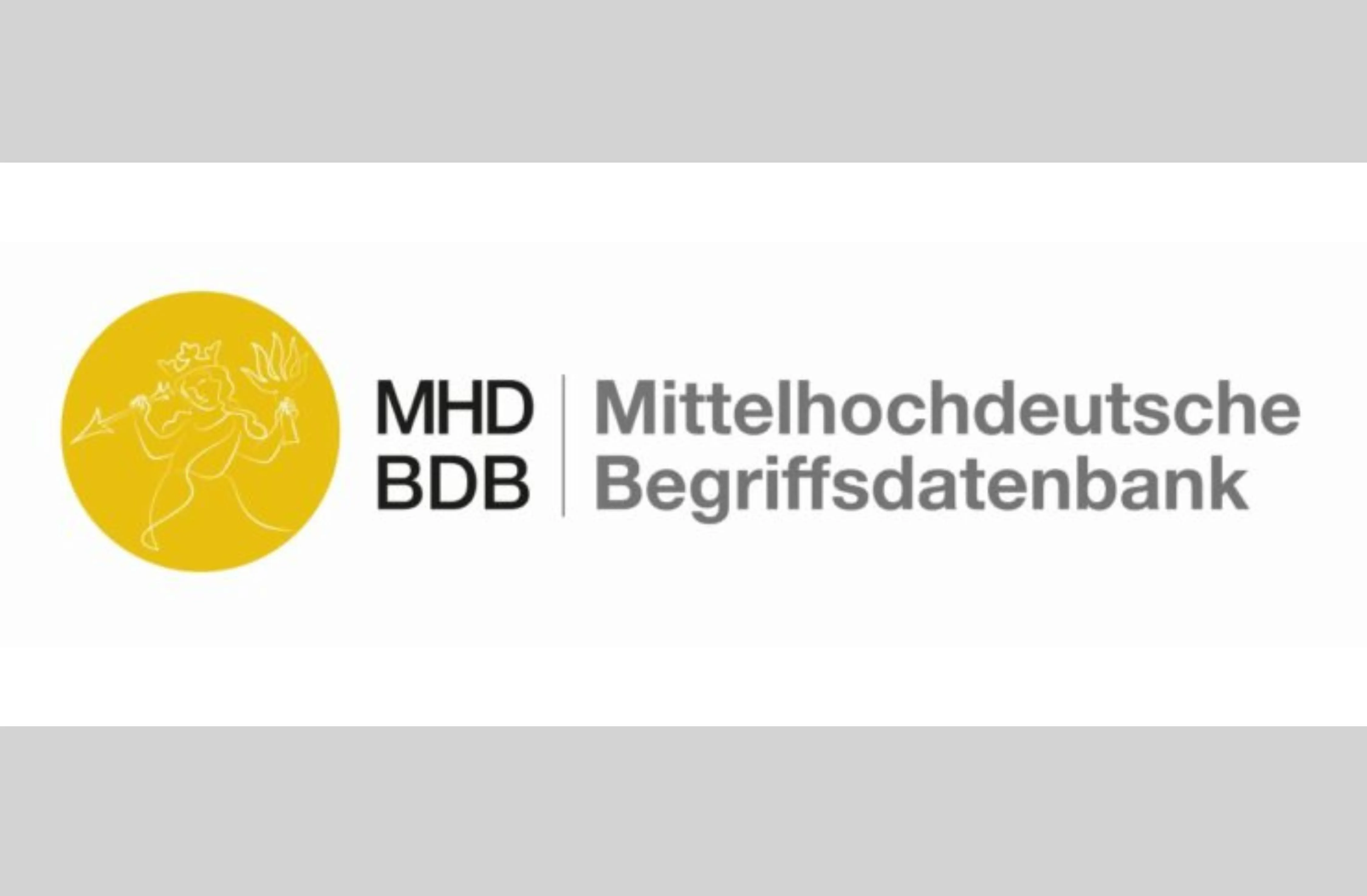
The Middle-high German Conceptual Database (MHDBDB) in Salzburg is one of the most important tools for German Medieval Studies. Now, we develop a new front end with standardised formats and connections to the Semantic Web.
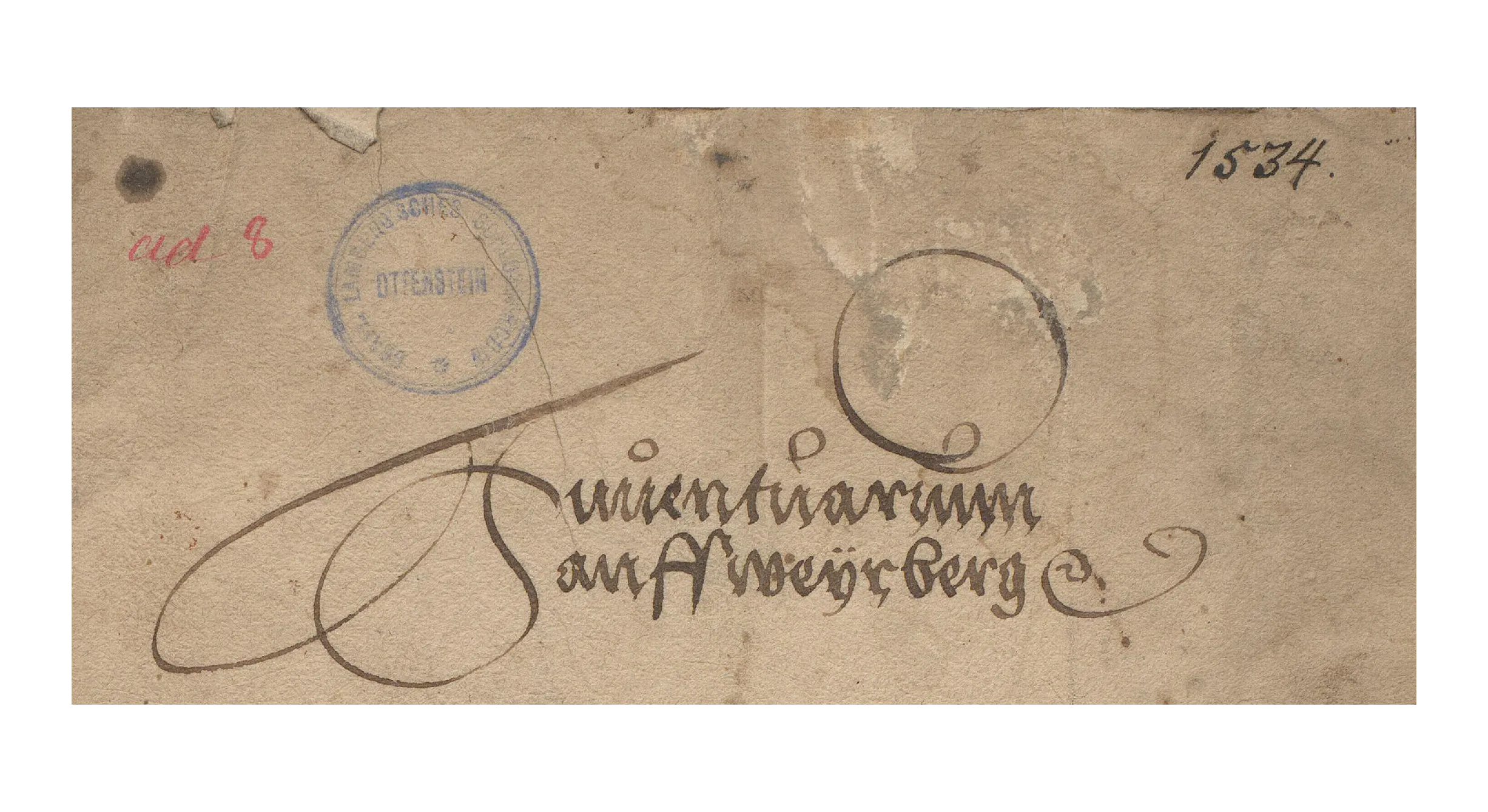
The aim of this project is to provide digital resources and tools as integrative modules for scientific research projects and knowledge transfer as part of DH specific teaching formats to be developed.
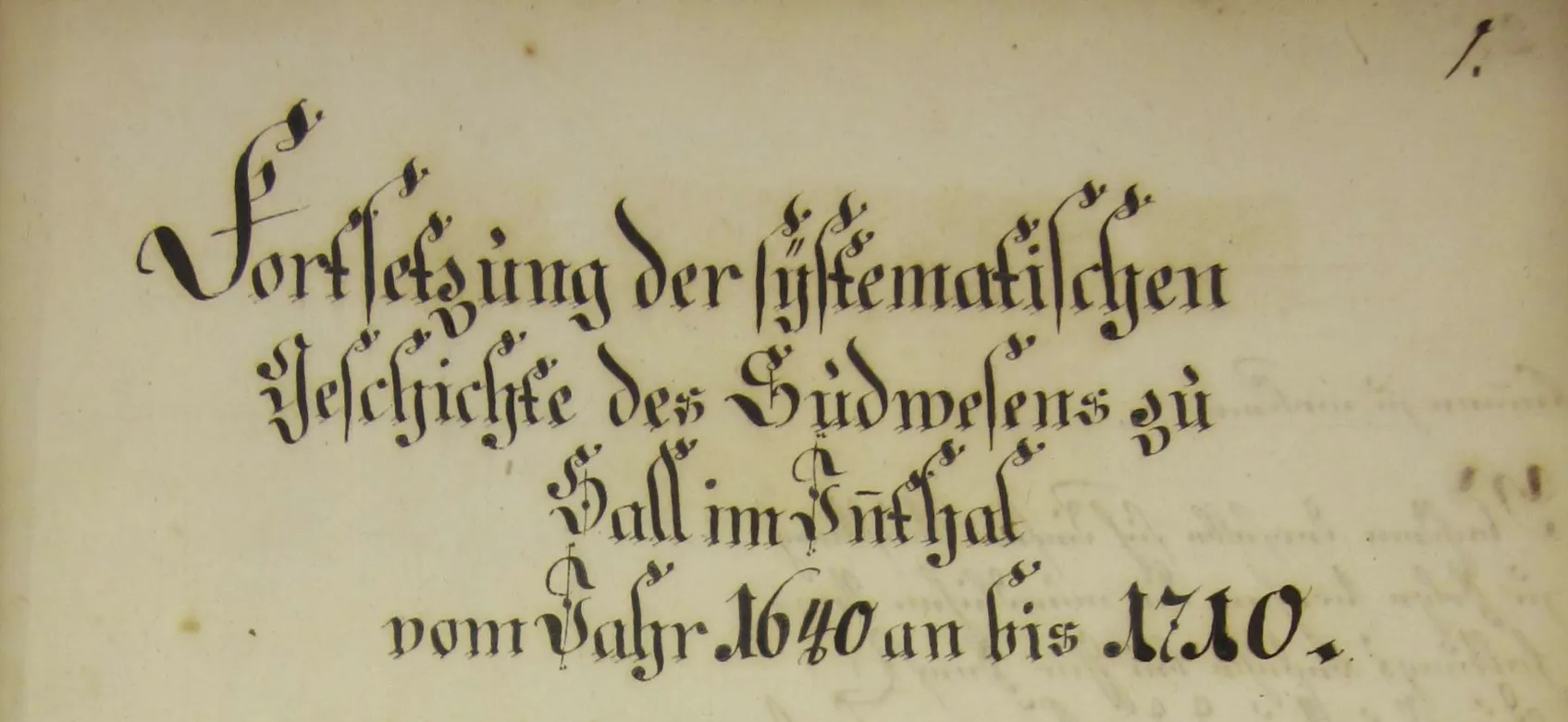
Digitale Editionen zur Geschichte der Saline Hall

DigitAS tests and compares the potential of triangulating mobile non-representational (digital and bio-sensing) and representational method(ologie)s (qualitative interviews) in researching people's affective-emotional experiences of space.
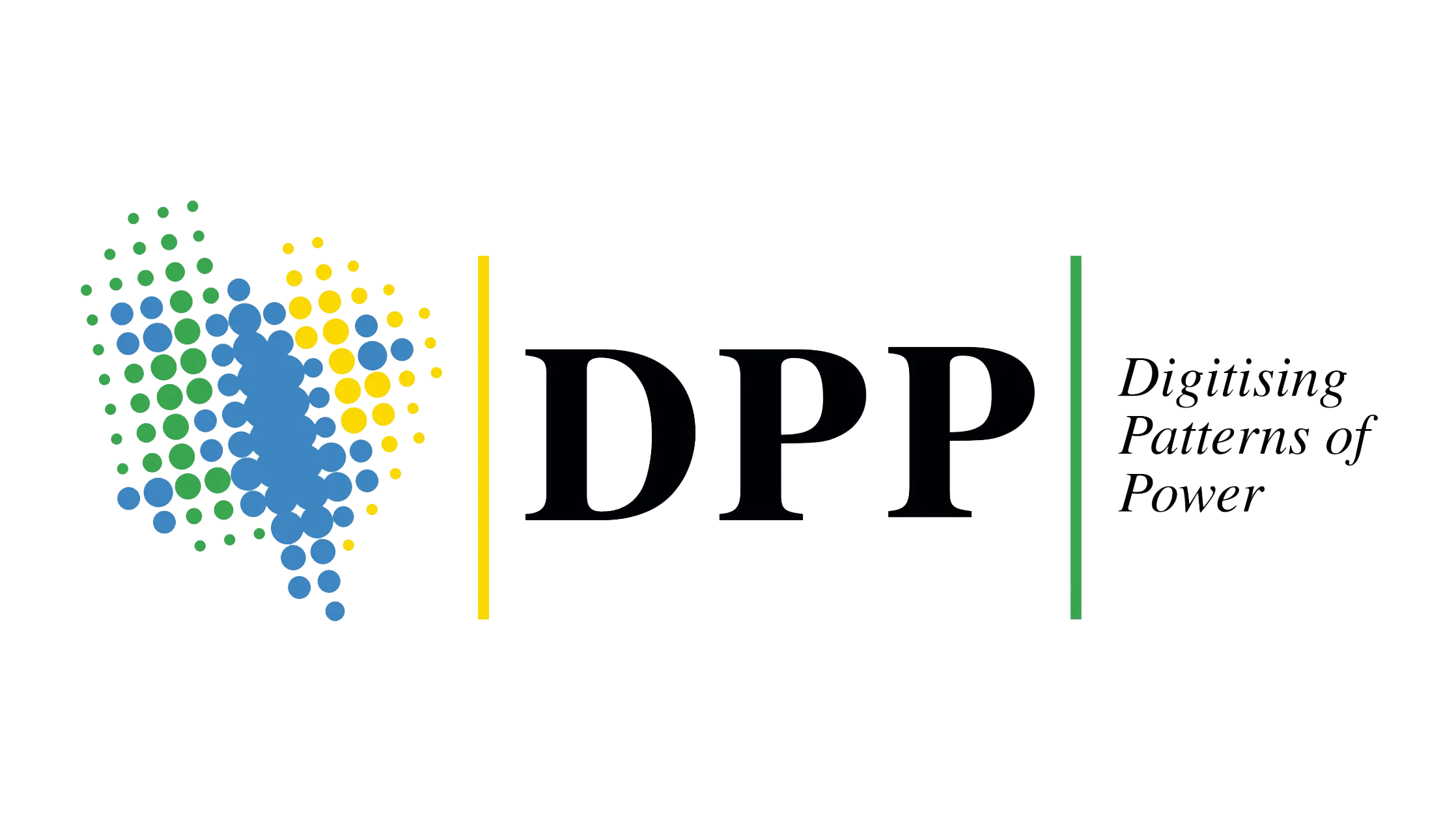
Digitising Patterns of Power (DPP): Peripherical Mountains in the Medieval World
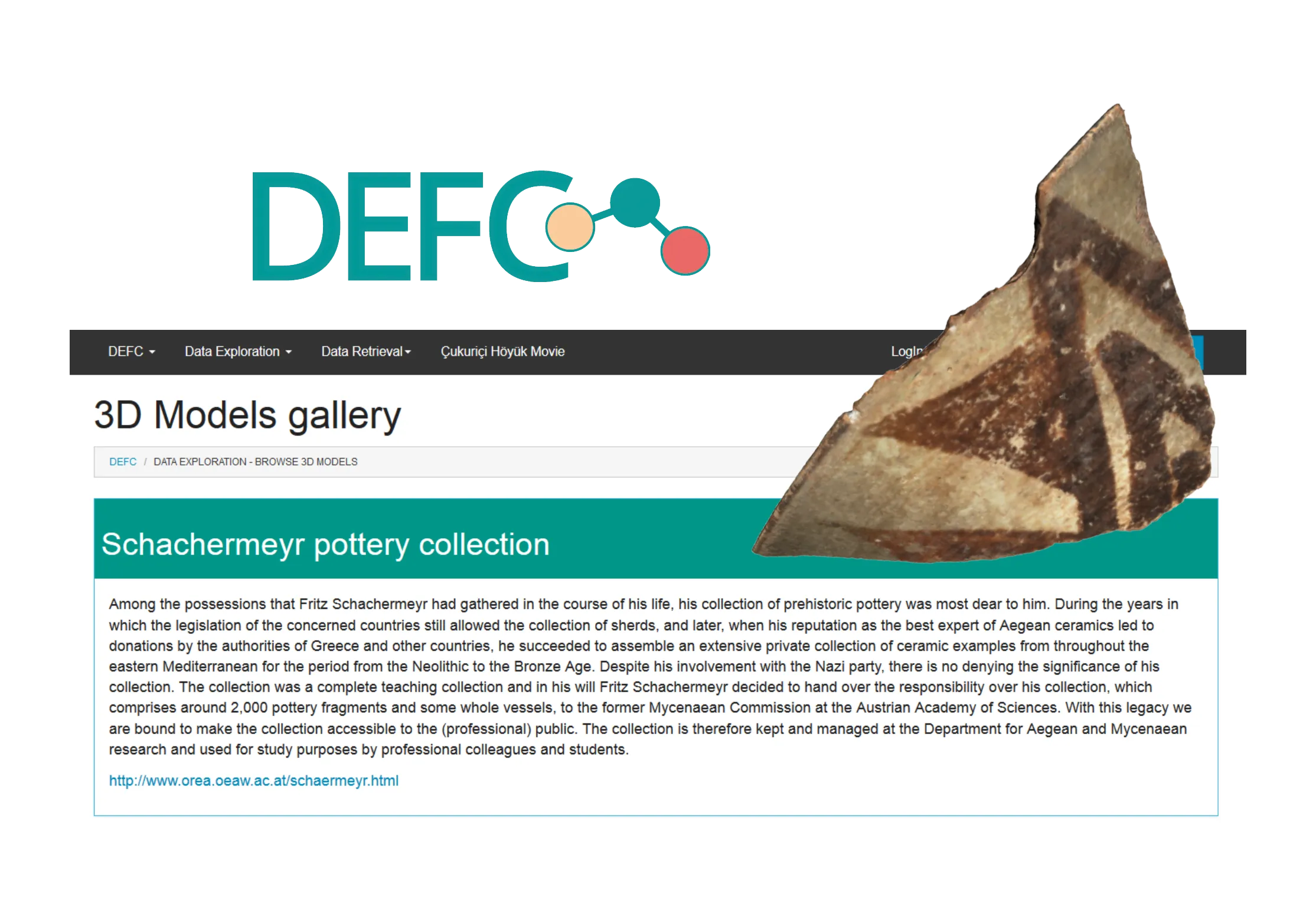
Digitizing Early Farming Cultures aims to create standardized and integrated research data of Neolithic and Chalcolithic sites and finds of Greece and Anatolia (c. 7000–3000 BC according to Greek terminology).
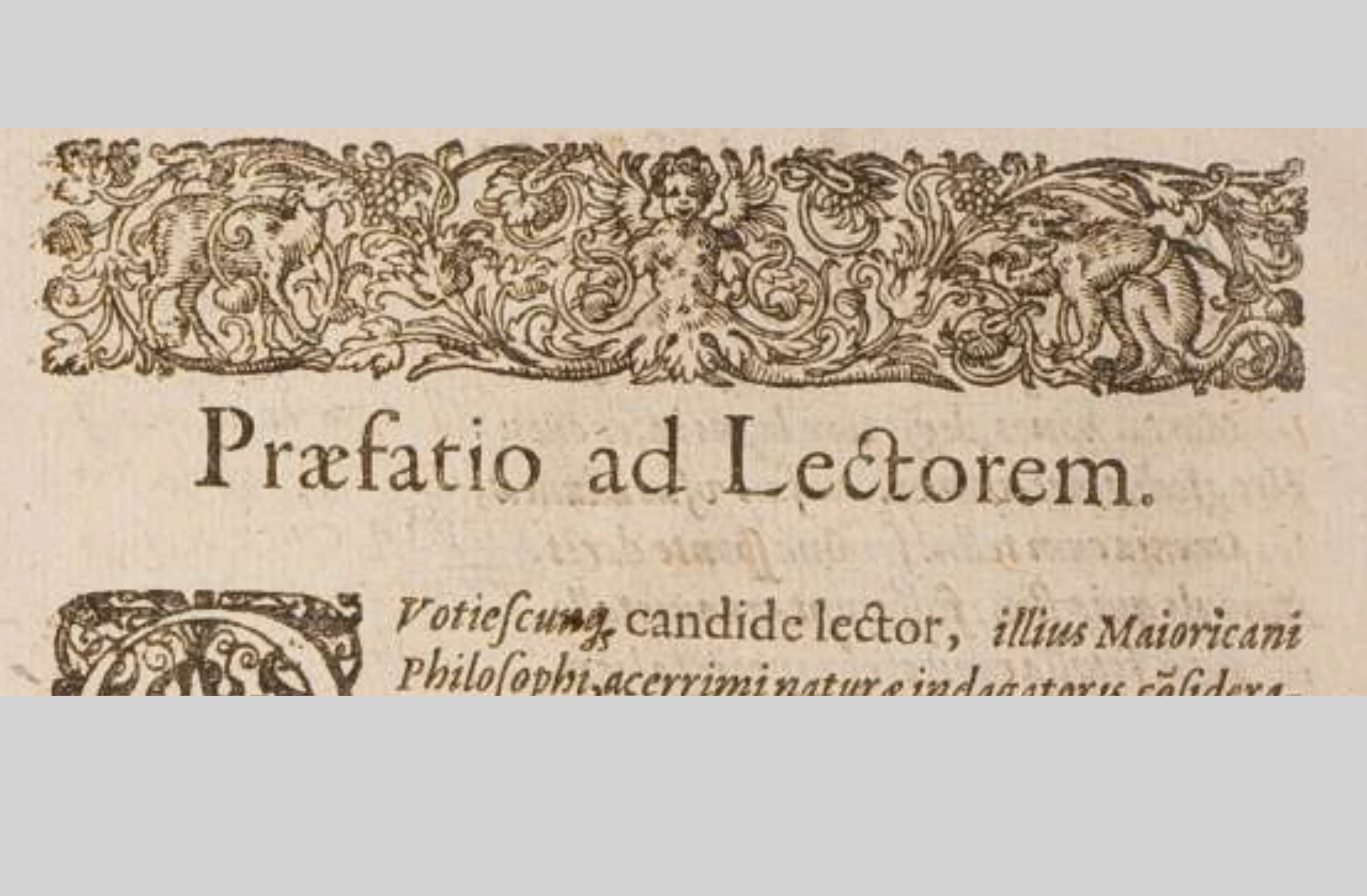
This project develops teaching materials at the intersection of book history and digital humanities through a winter school and the creation of a video course for self-study.
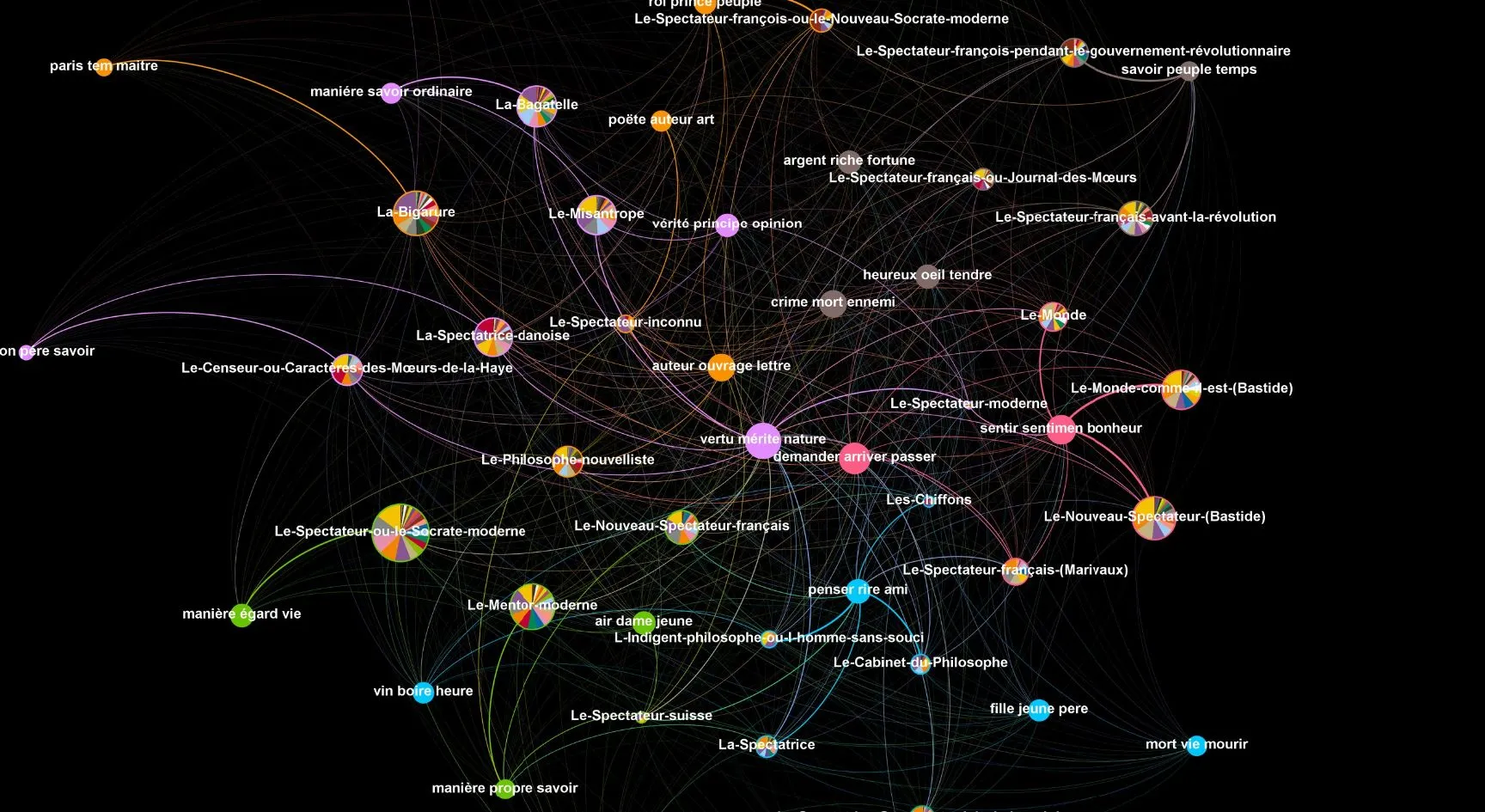
The objective of DiSpecs is the application of distant reading methods to the enlightened Spectators press of the 18th century to gain insight into the formation of trans-European ideas, literary techniques and cultural practices.
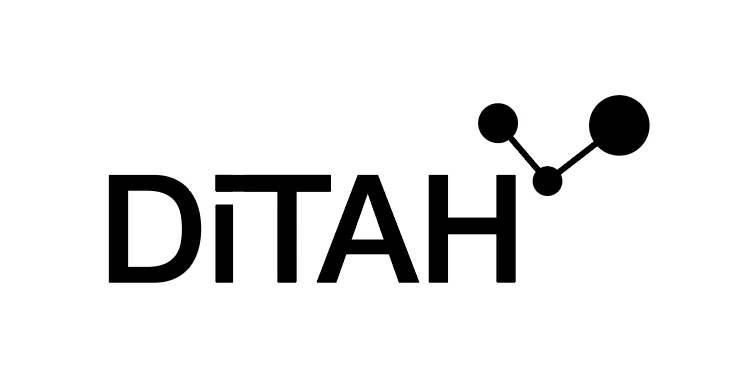
A project to promote the transfer and development of digital competencies, methods and infrastructures in research and education in the humanities - funded by the Austrian Ministry of Education, Science and Research.

The Digital Scholarly Editions Initial Training Network (DiXiT)
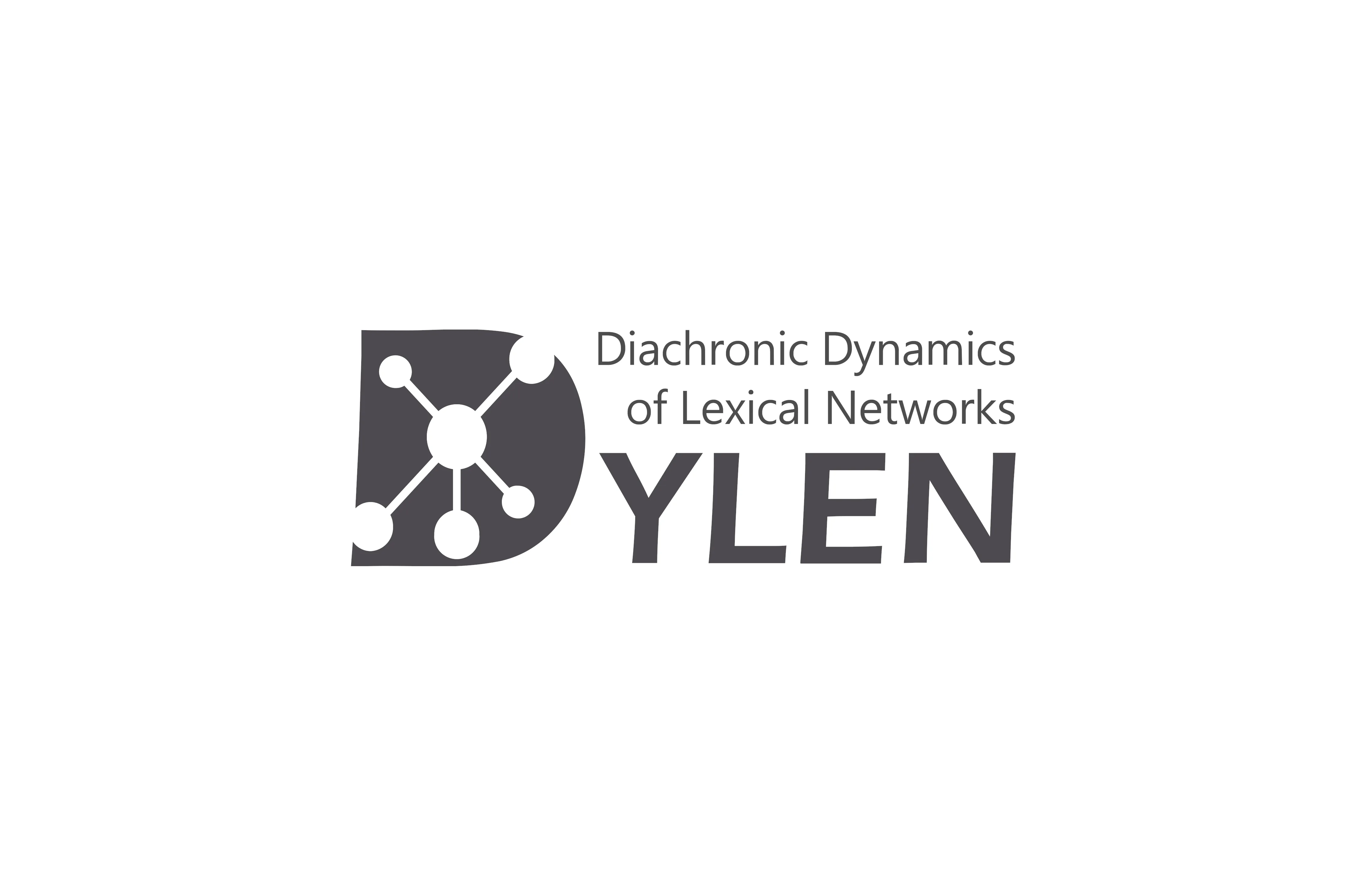
Combining linguistics, DH and computer science the project explores the diachronic dynamics of lexical networks on the basis of large-scale corpora.
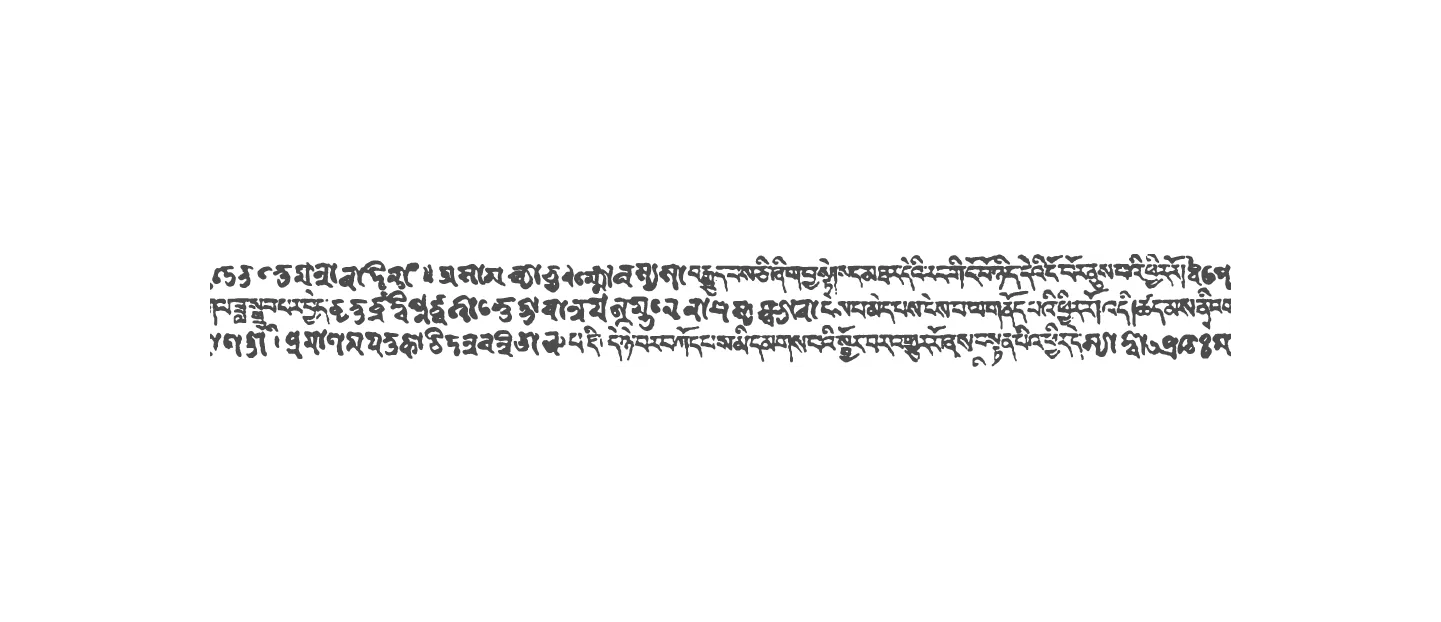
EAST is a systematic collection of bibliographical and biographical data on philosophical traditions in South Asia and Tibet.
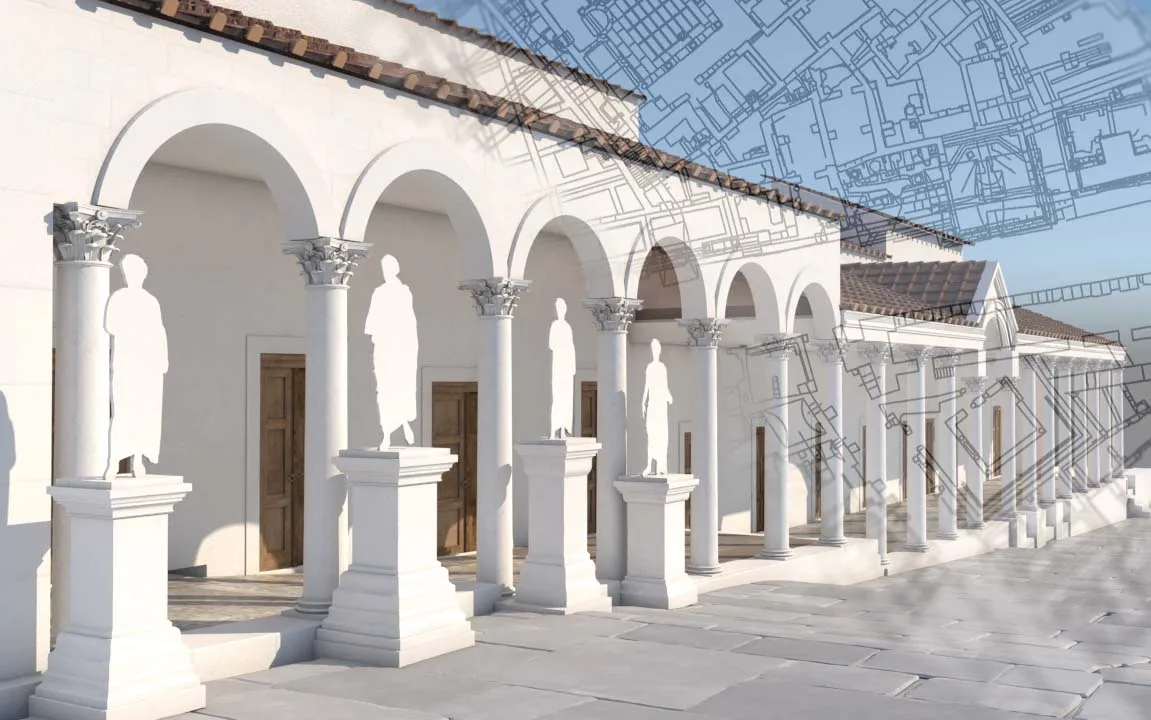
The large number of scientific reconstructions of Ephesian monuments and urban situations are being digitally modeled at the ÖAI using uniform standards and current geodetic data, as well as being recorded periodically in an overall city model.
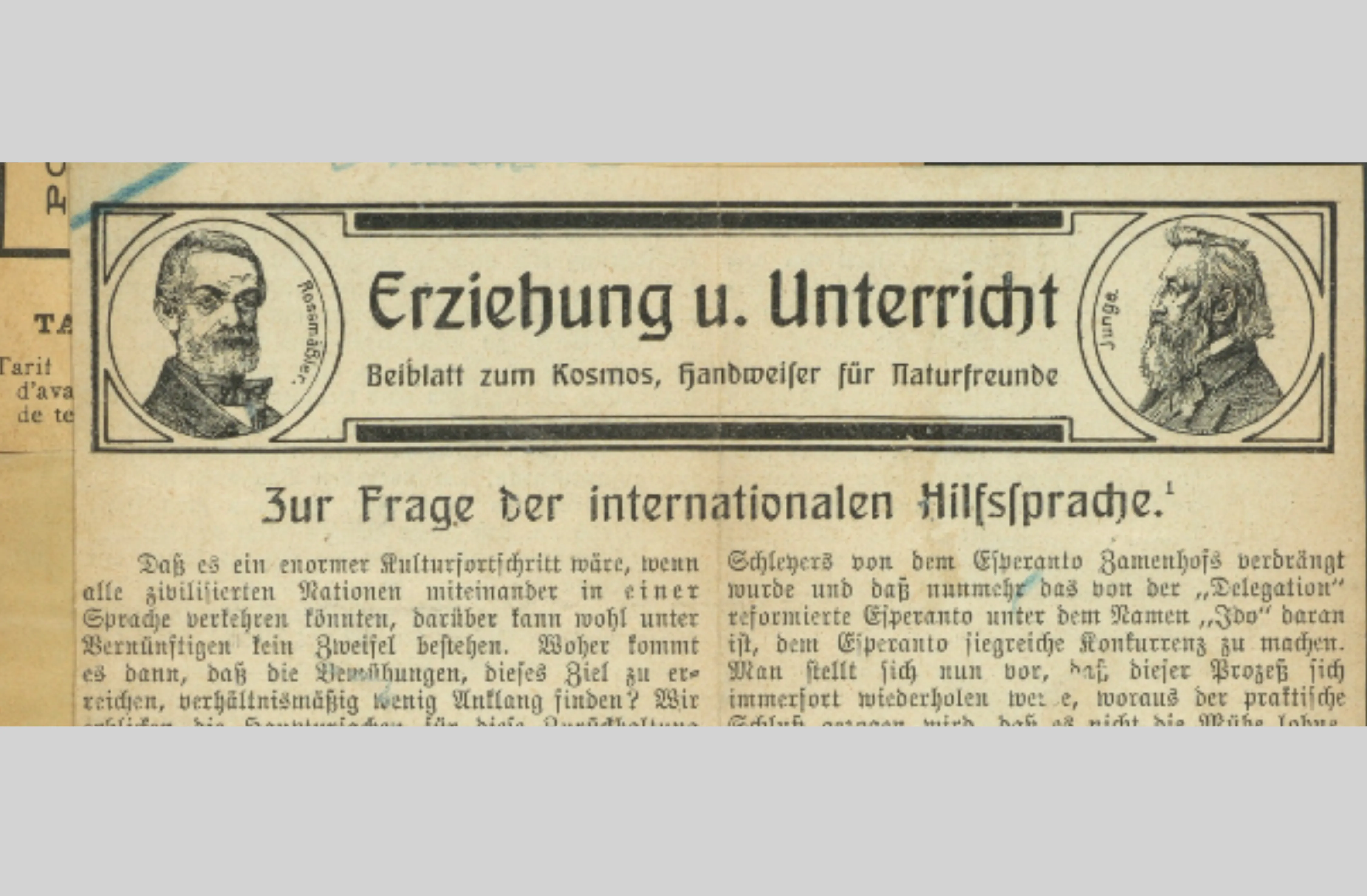
The Project CLARIAH Esperanto Newspaper Excerpts deals with digitized newspaper excerpts about Esperanto.

We digitalize the network of European Constitutional Court decisions by compiling information on (1) cross-citations and (2) semantic similarities of decision texts. We aim to explain the patterns we find by applying inferential network analysis.
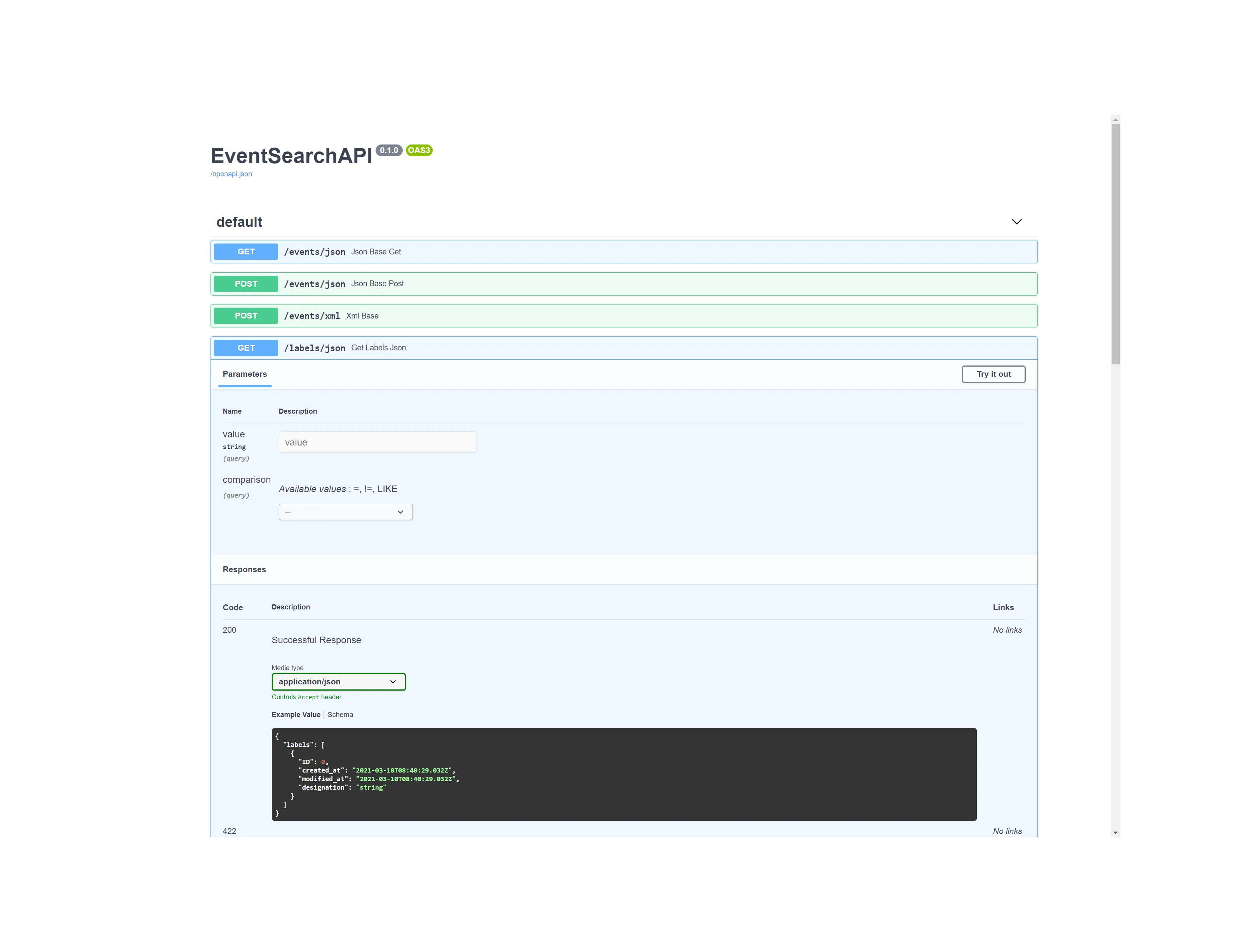
EventSearch provides an API for events encoded in digital editions.
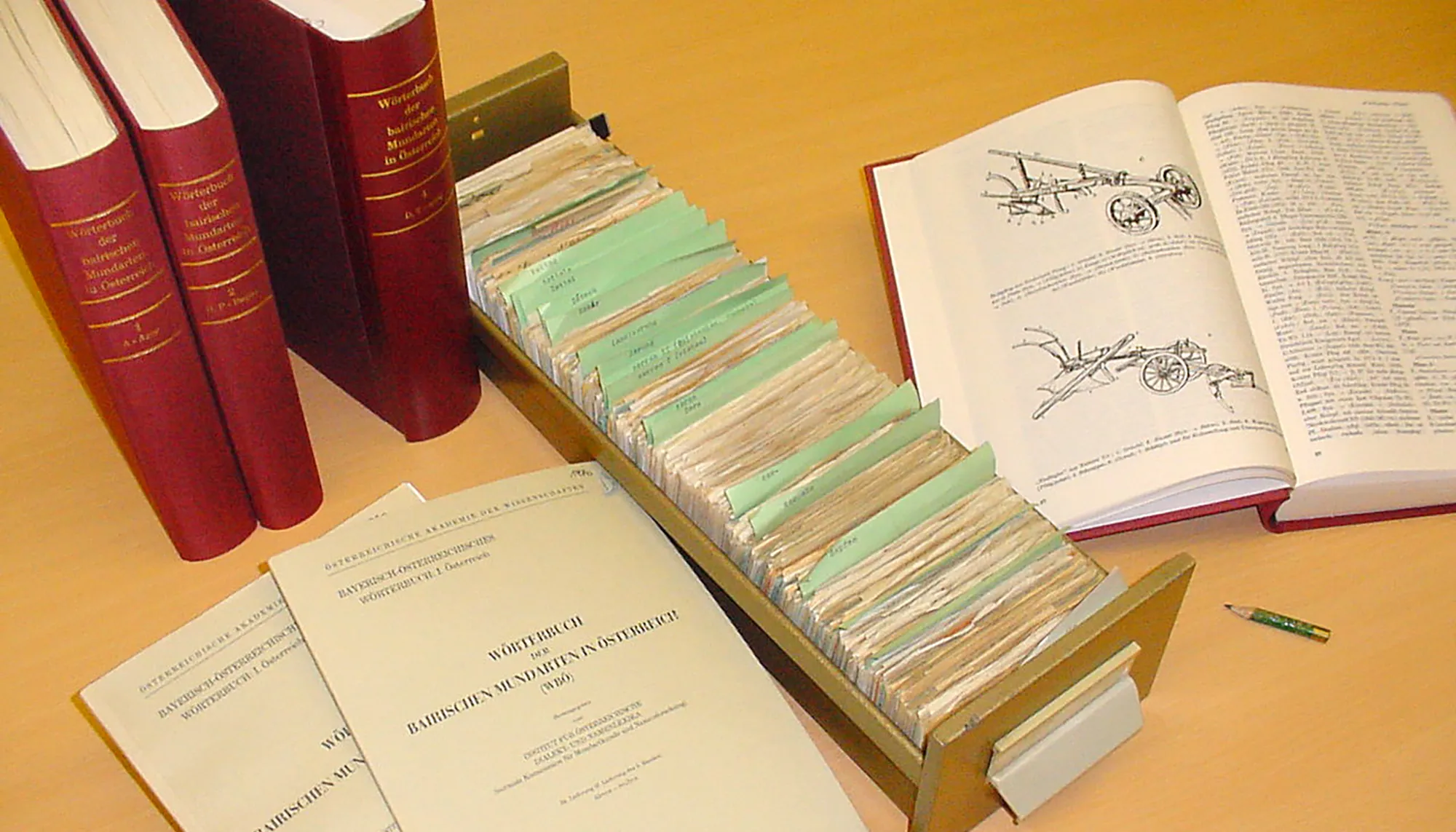
exploreAT! aims to reveal unique insights into the rich texture of the German language, especially in Austria, by providing state of the art tools for exploring the unique collection of the Bavarian Dialects in the region of the Austro-Hungarian Empire.
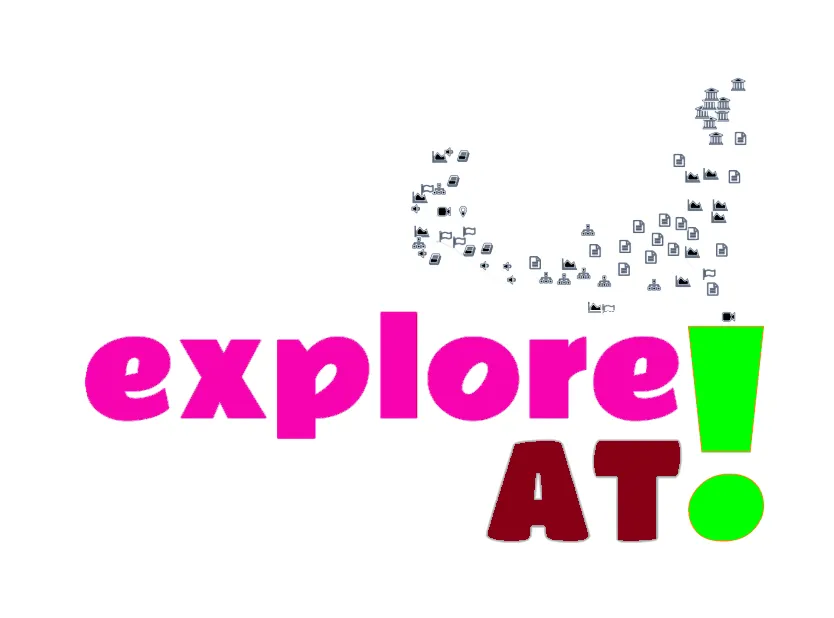
Developement of an Open Innovation space in Science: exploration space
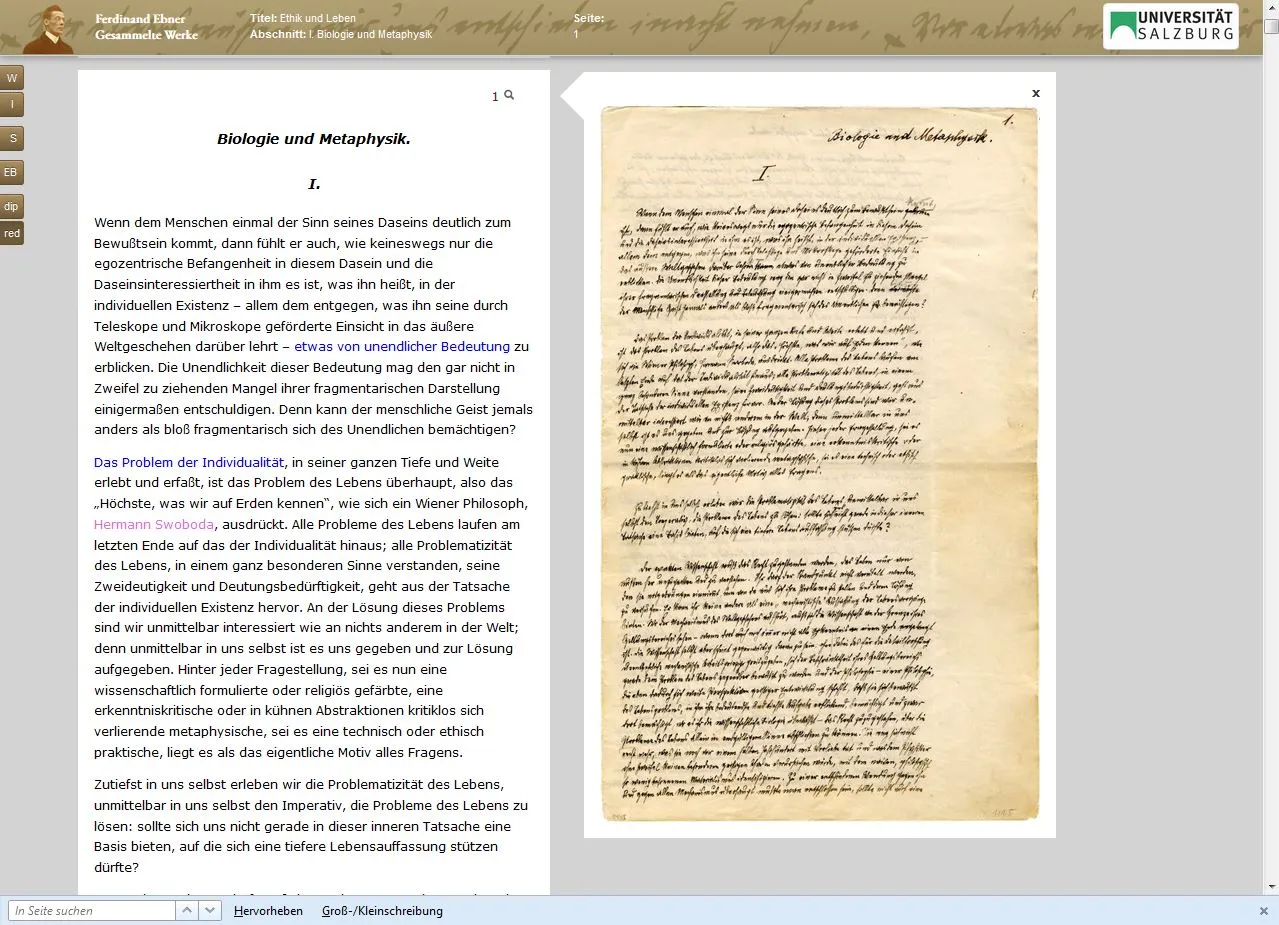
EbnerOnline is a critically commented edition of collected works of Austrian Dialog philosopher Ferdinand Ebner.
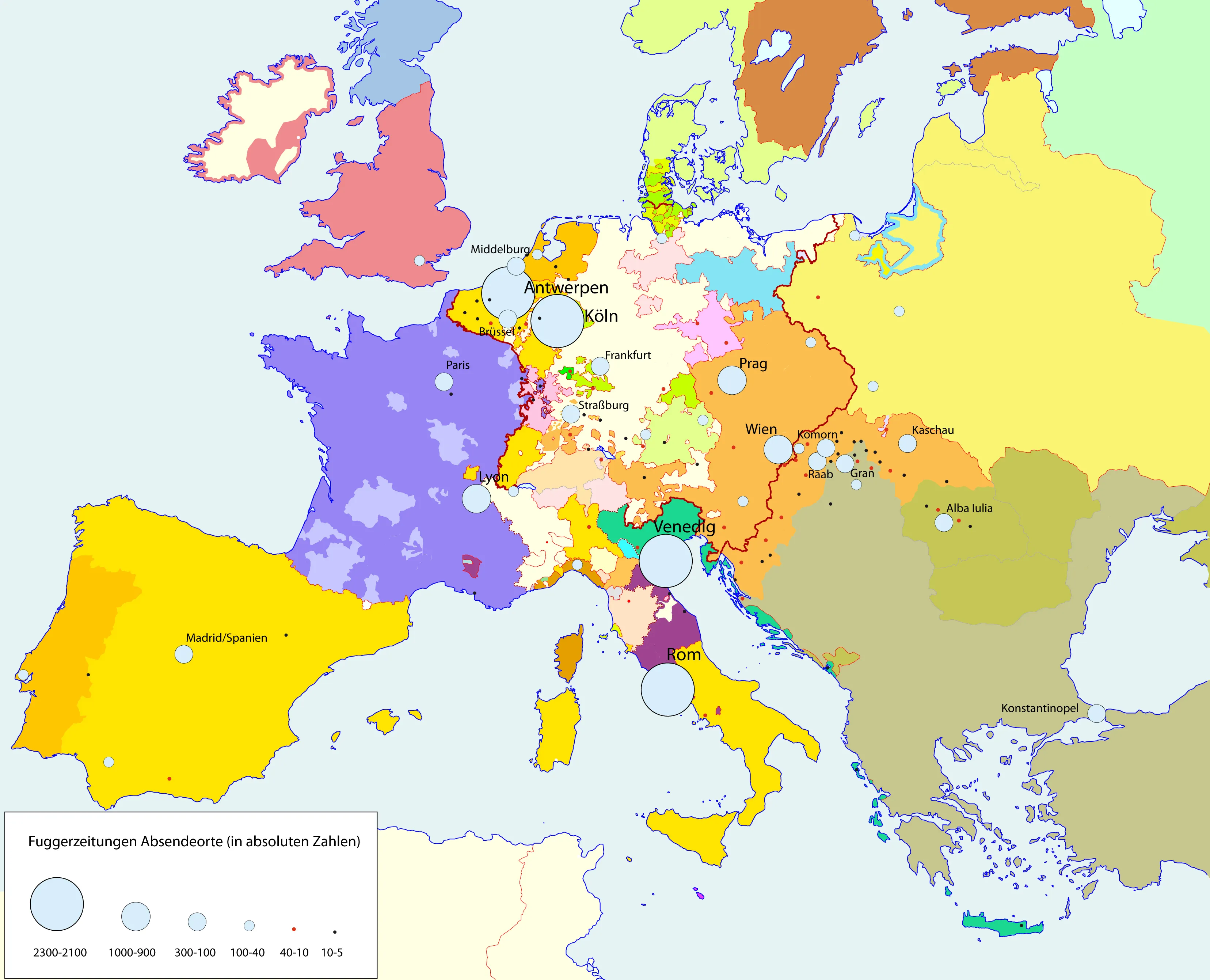
This collection, part of the imperial library in Vienna since the 17th century, includes more than 15,000 newspapers in German and Italian from the years 1568 to 1604.
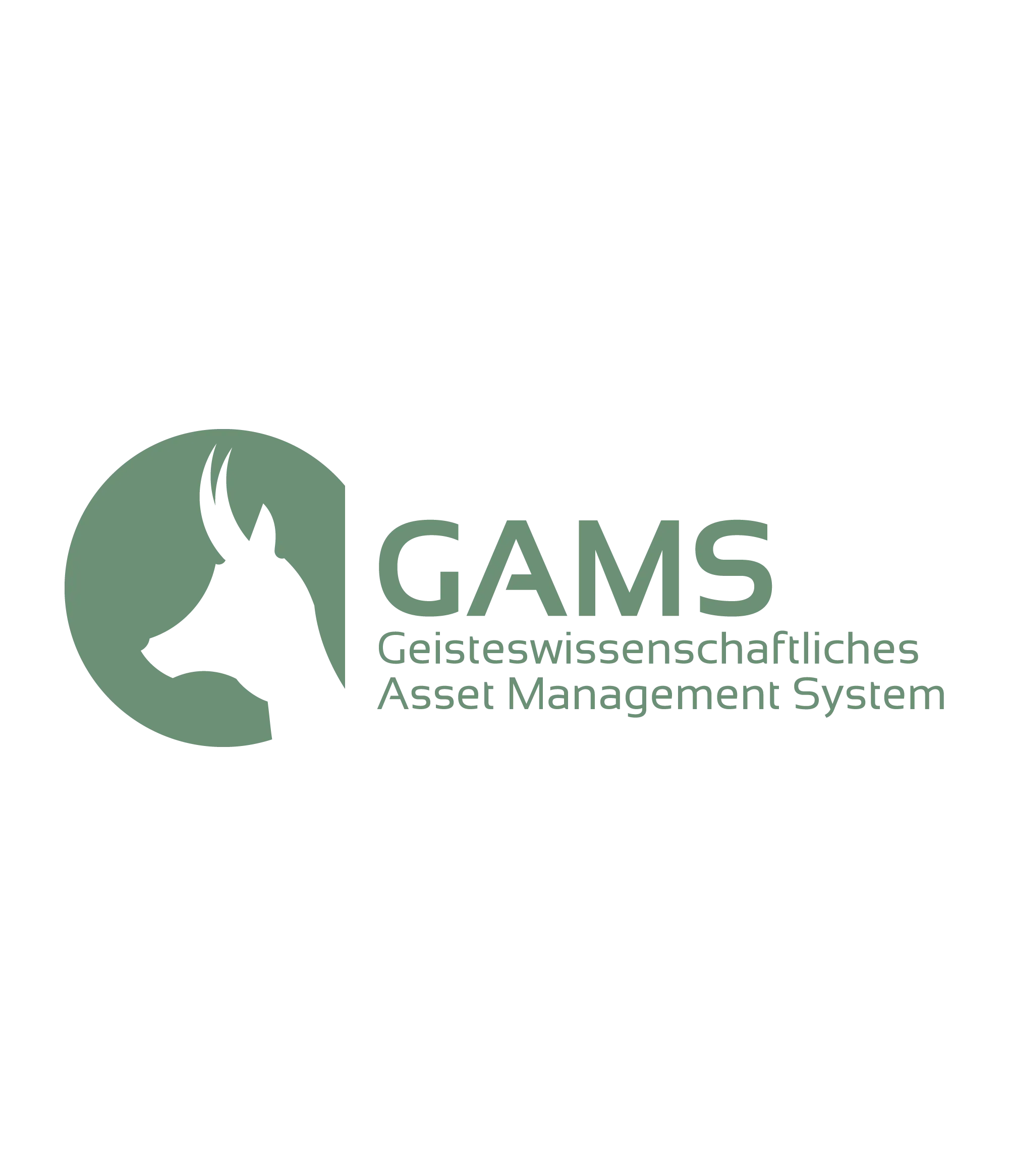
The Humanities Asset Management System is used to store and administrate digital resources produced in a scientific context.
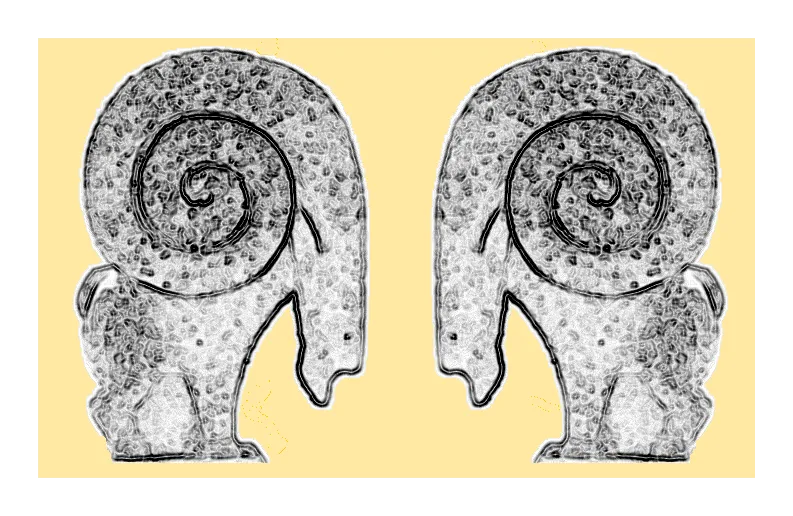
The collection of the Austrian explorer Eduard Glaser (1855-1908) is now completely accessible online: a variety of photographs, glass-negatives, diaries, manuscripts, hand-drawn maps, countless notes and working documents of other researchers.
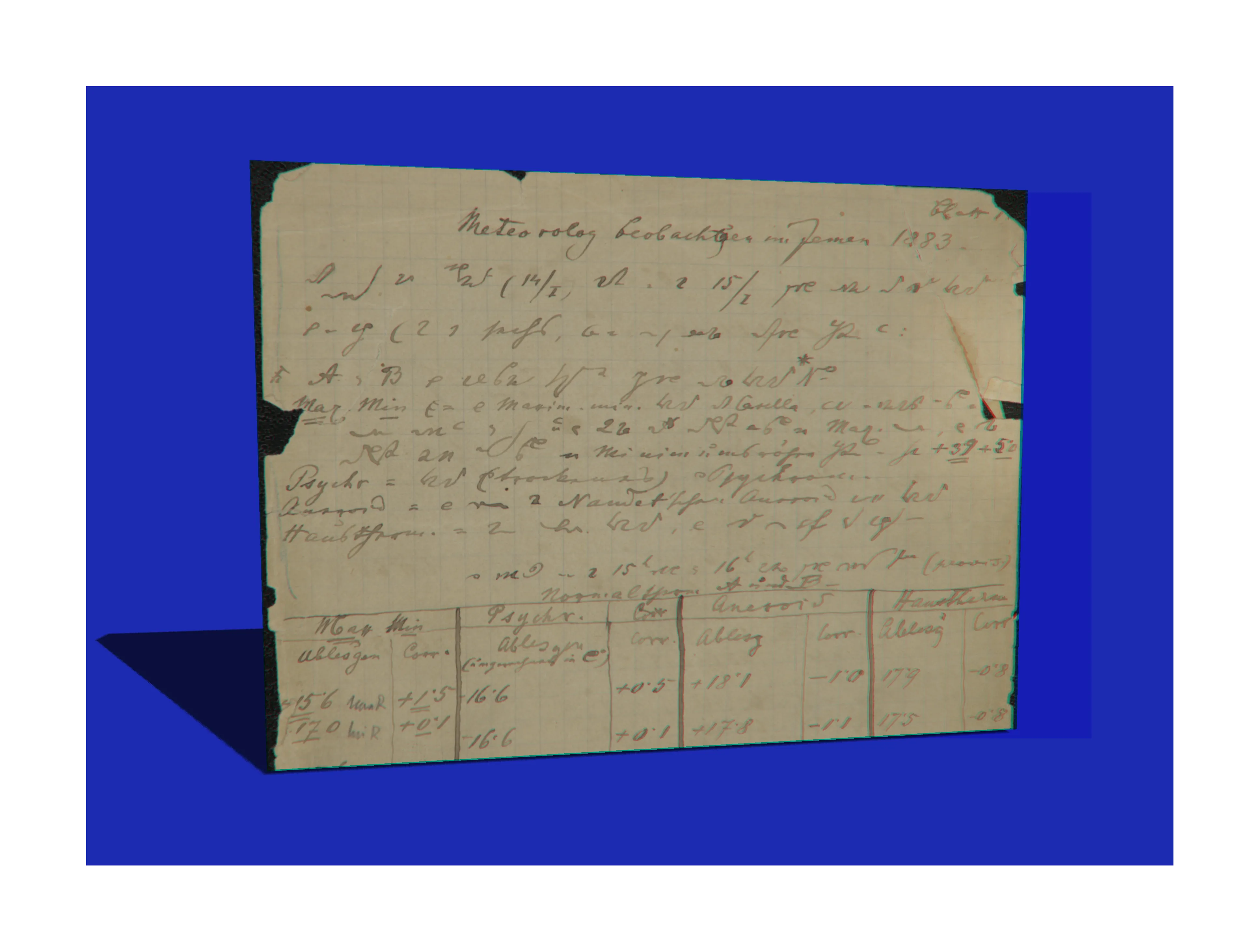
GlaViWo aims to virtually unite Eduard Glaser's scattered collections, and also to offer publications by and about him. All this information will be displayed in virtual 3D rooms that will be dynamically created depending on the user's request.

A repository, online portal and learner-oriented digital edition of Ancient Fables in Latin and Ancient Greek.
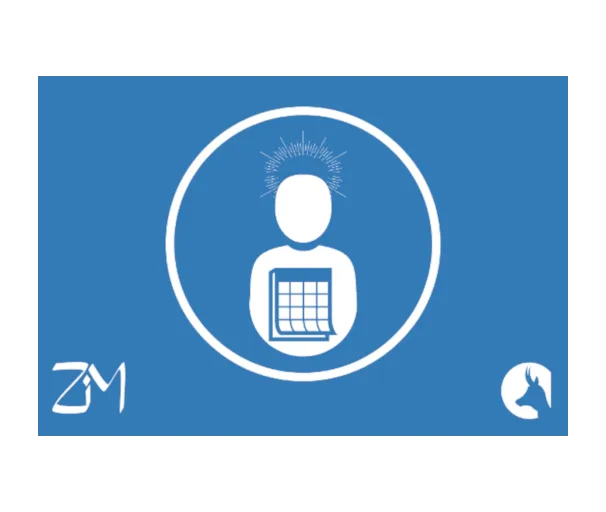
Grotefend - digital is an RDF representation of the saints' register and the diocesan and religious calendars from Grotefend's reference book, which was implemented using the ontology "Ontology for the representation of medieval calendar data".
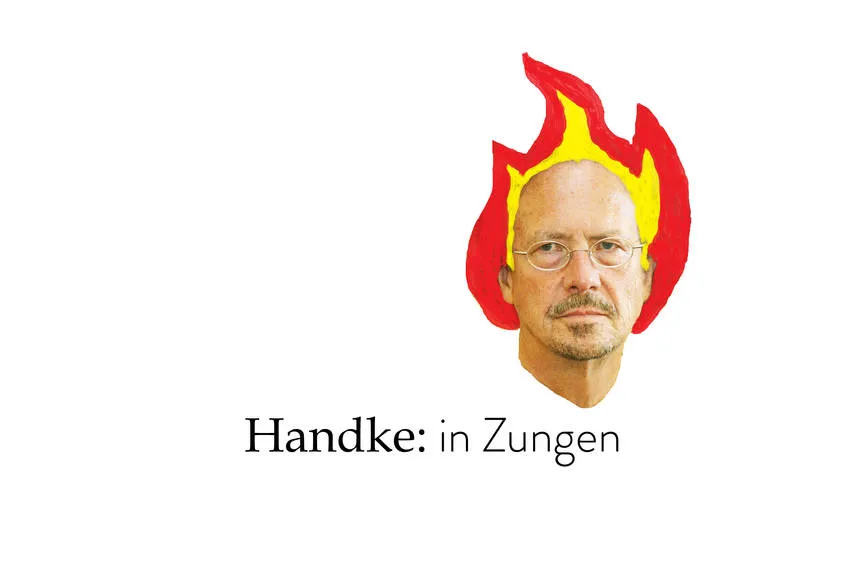
This project investigates the role of foreign languages in the dramatic literature by the Austrian writer Peter Handke.
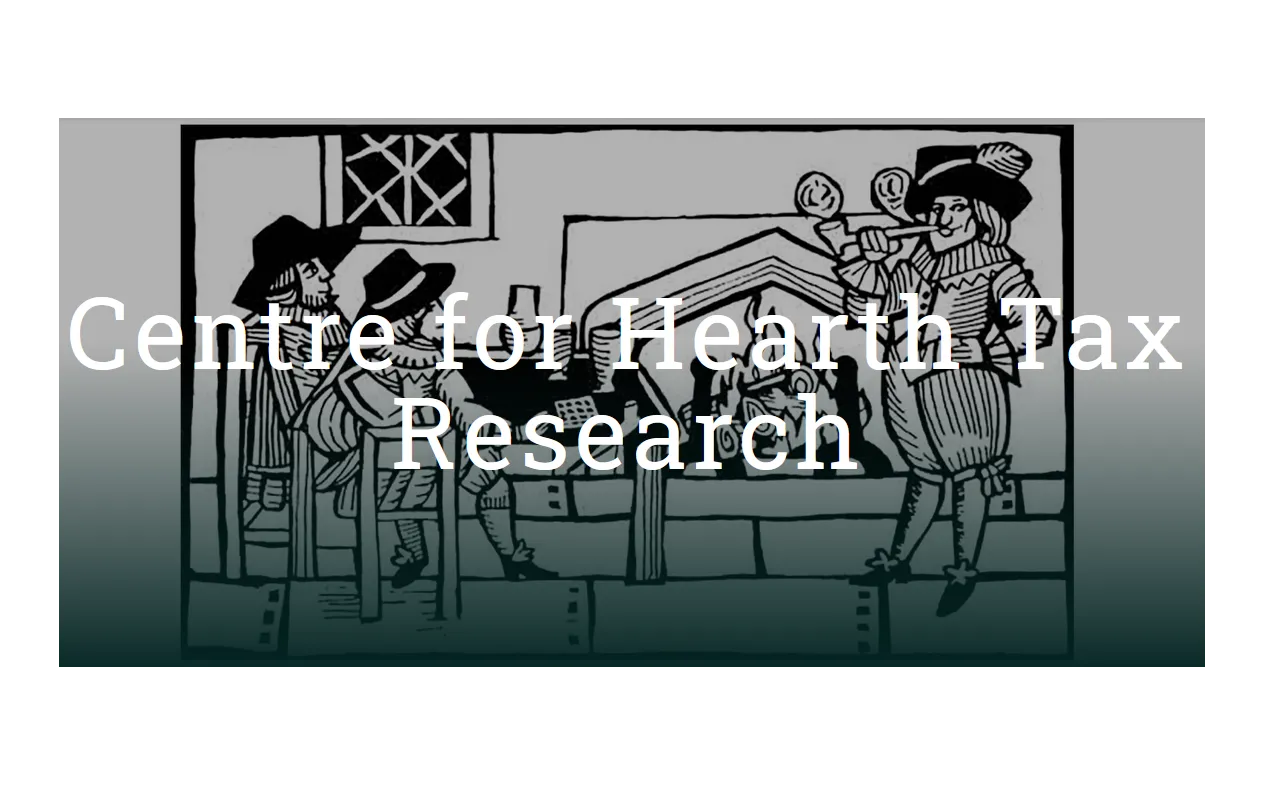
Assertive edition of the British Hearth Tax records (1662-1689)
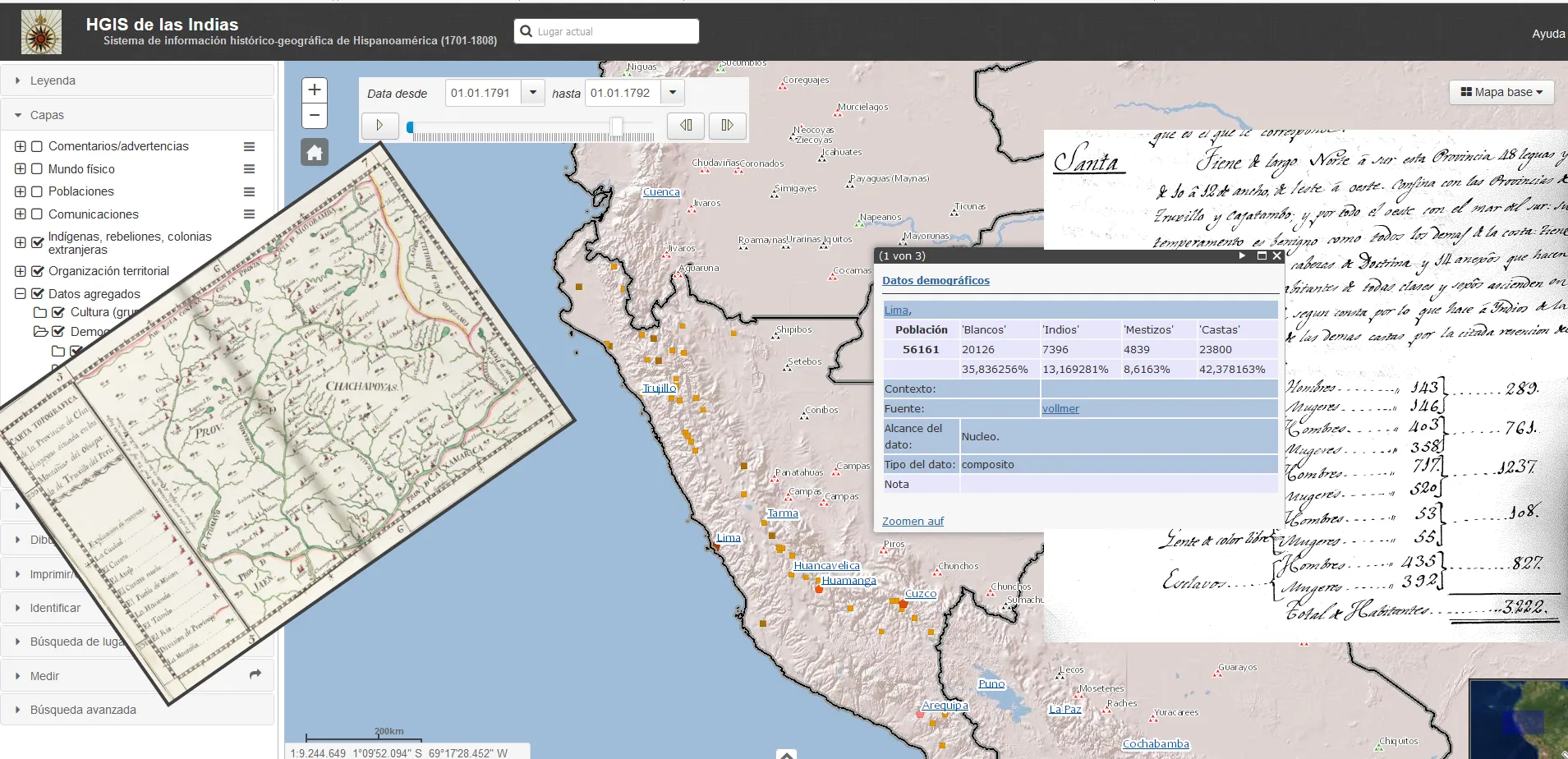
HGIS de las Indias is a dynamic (year-based) Web-GIS that reconstructs developments in territorial and ecclesiastical organization, settlements and communications, as well as other data in Bourbon Spanish America before the independence struggles.
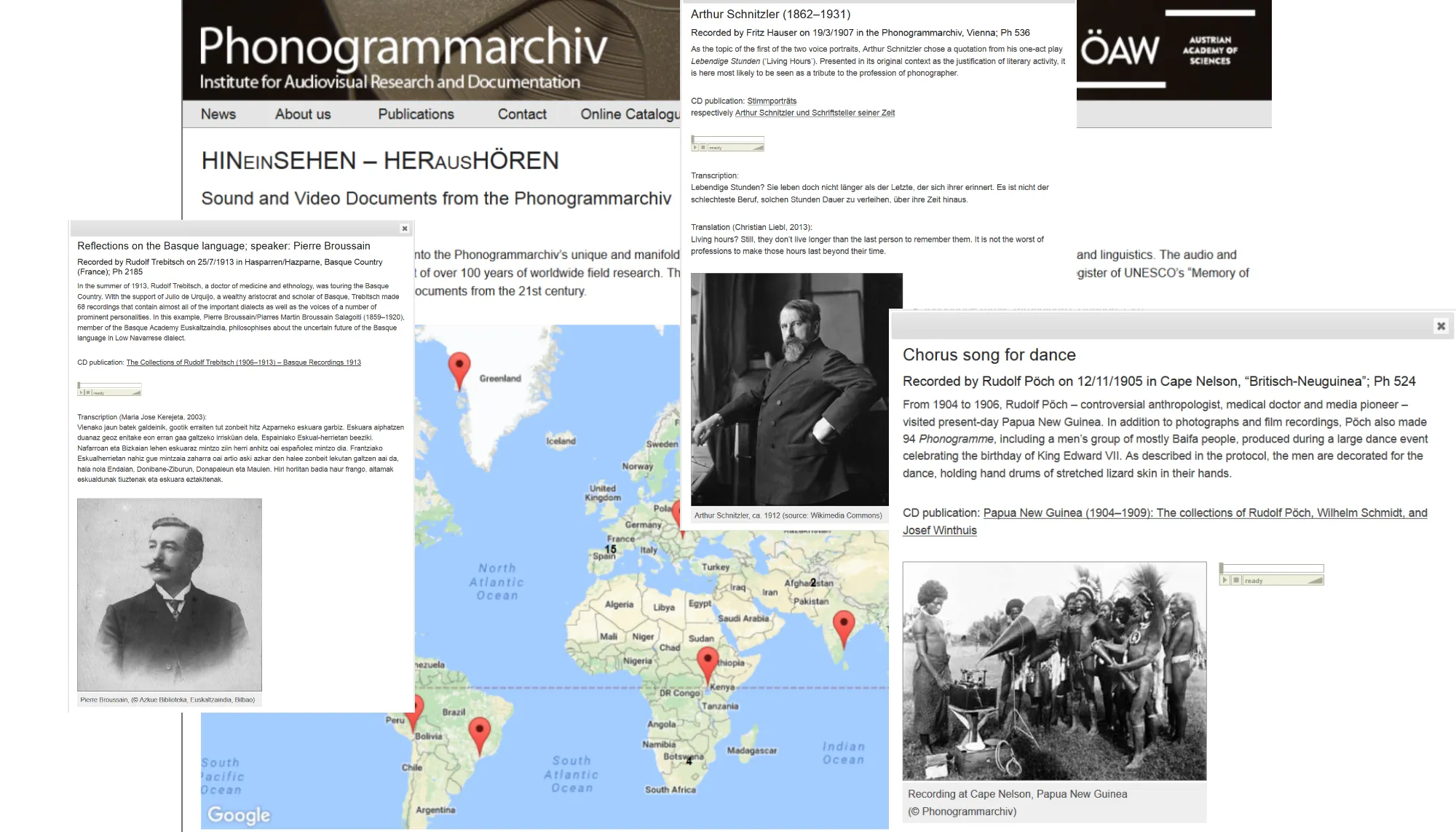
In 2013, on the occasion of UNESCO's "World Day for Audiovisual Heritage" the Phonogrammarchiv set up an online exhibition to provide insights into its unique and manifold holdings.

'Hugo von Montfort - the poetic work' is a hybrid edition that explores how a poetic work of the Middle Ages can be represented in its multimedia form.
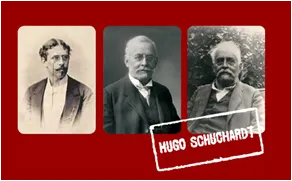
Das digitale Archiv vereint Gesamtwerk, Nachlass und Korrespondenzen des Romanisten und Sprachwissenschaftler Hugo Schuchardt (1842-1927).
The methodological approach of the joint FWF-DFG project consists in an innovative corpus linguistic description, combined with analytical methods of quantitative variationist sociolinguistics, correlated with sociodemographic data.
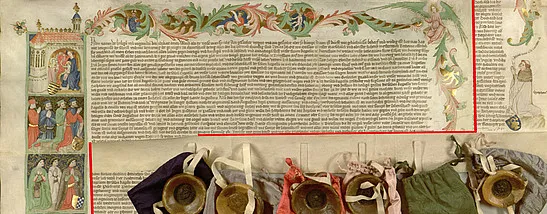
"Illuminierte Urkunden als Gesamtkunstwerk" - Visual media in legal documents in the European middle ages
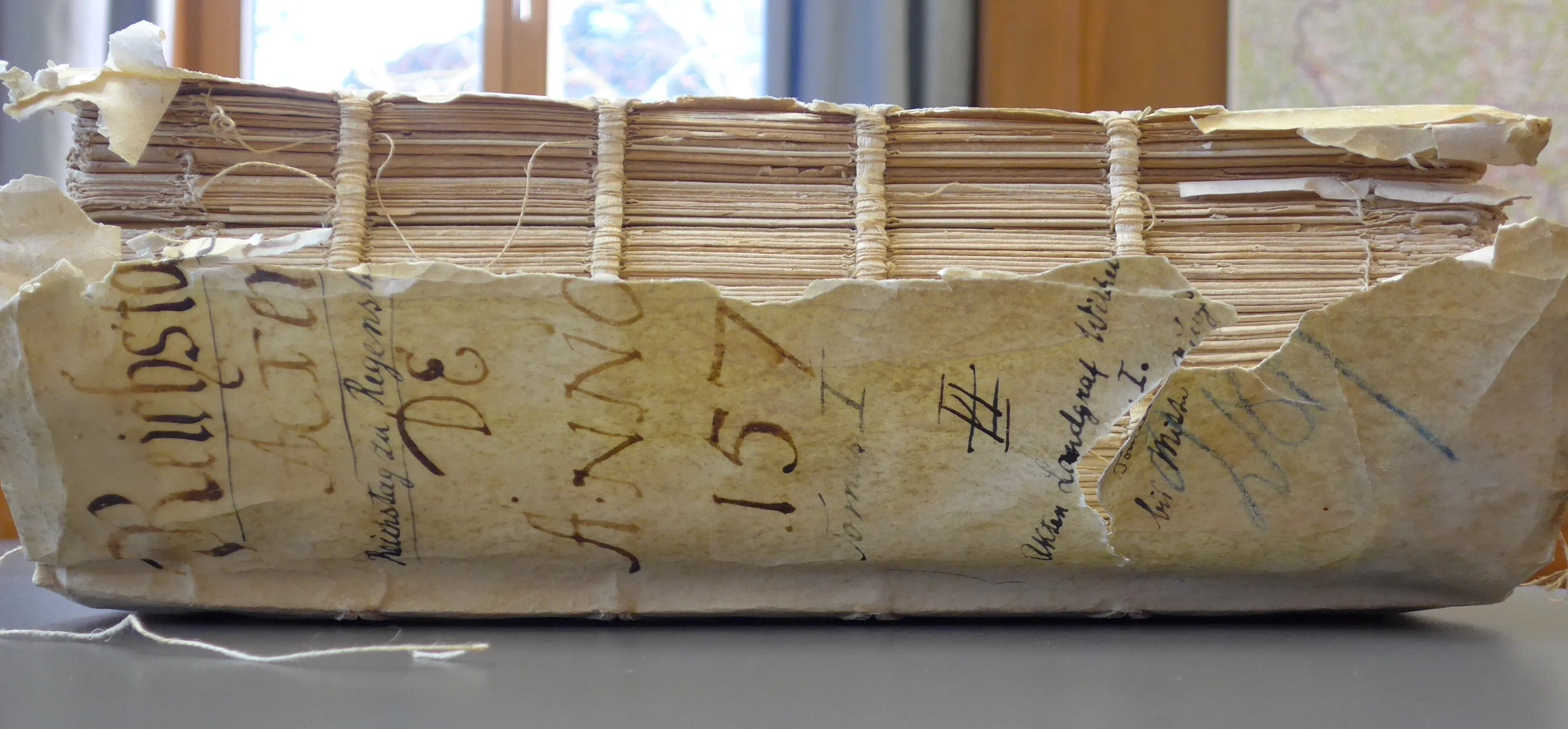
The edition publishes central documents of the Imperial Diet of Regensburg of 1576. It uses an assertive edition approach with an interaction-centred data model, that focuses on the communicative complexity and dynamics of the event.
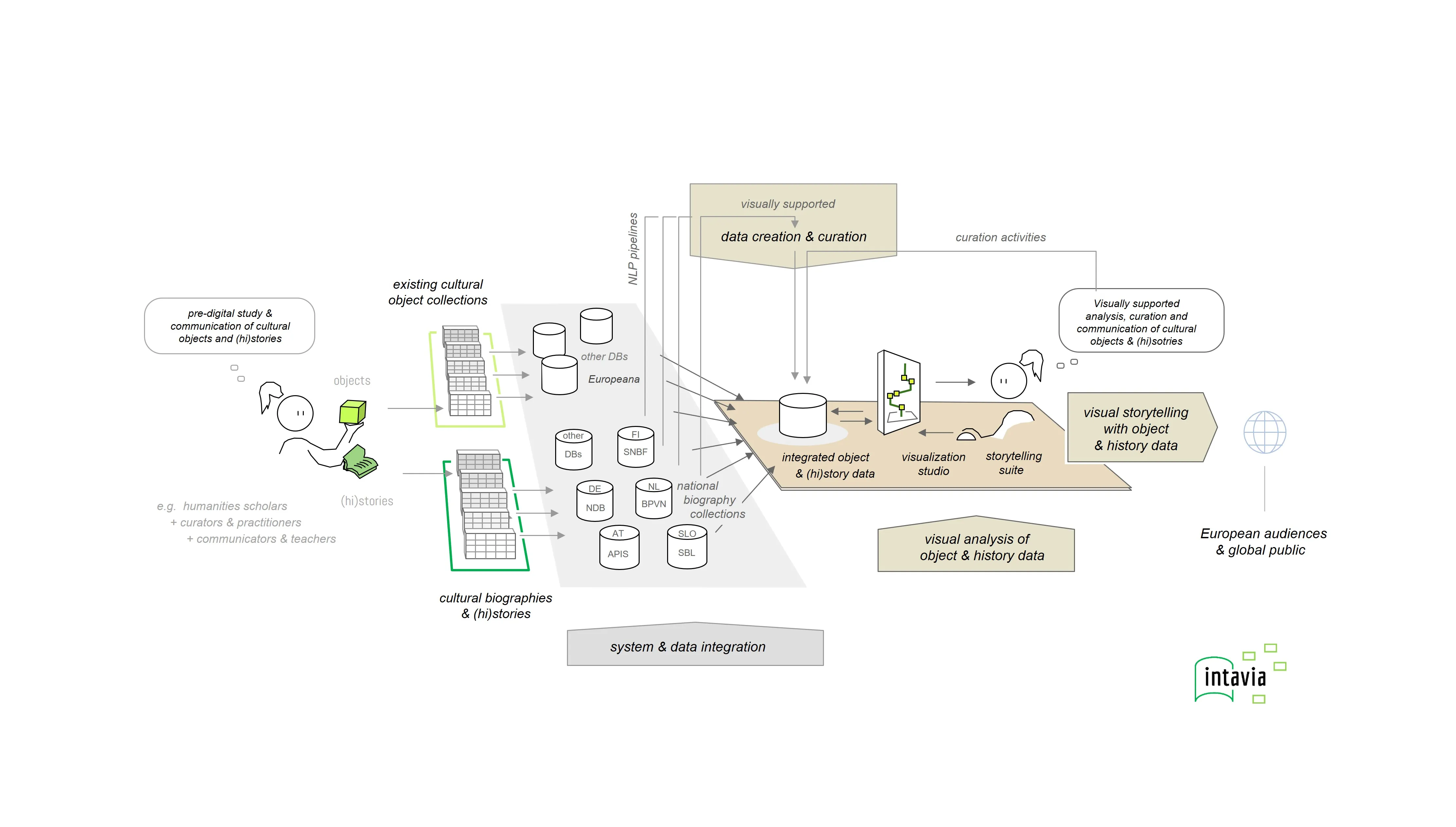
The InTaVia project draws together European databases for cultural objects and cultural biographies to provide a more integrated and contextual access to these sources, to foster data curation, visual data analysis, and visual storytelling.
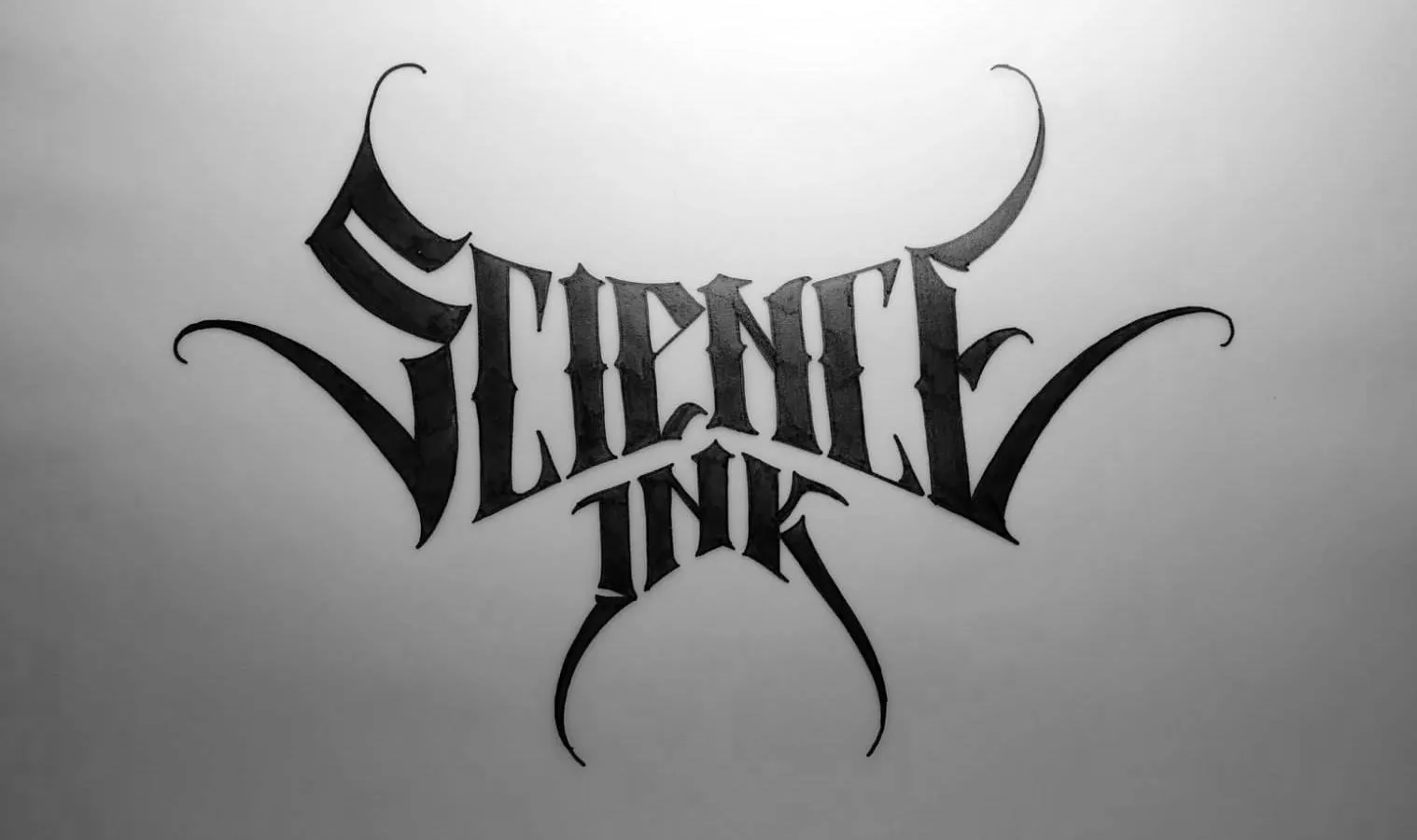
In the project 'Sience Ink', contents of historical culinary arts and methods of digital humanities are processed with modern means. The project is designed for a young target audience between the ages of 16 and 30.

Digital adaptation of the Itinerary of Paolo Santonino, which describes his travels in 1485-87 through East Tyrol, Carinthia, Carniola and the former Mark an der Sann.
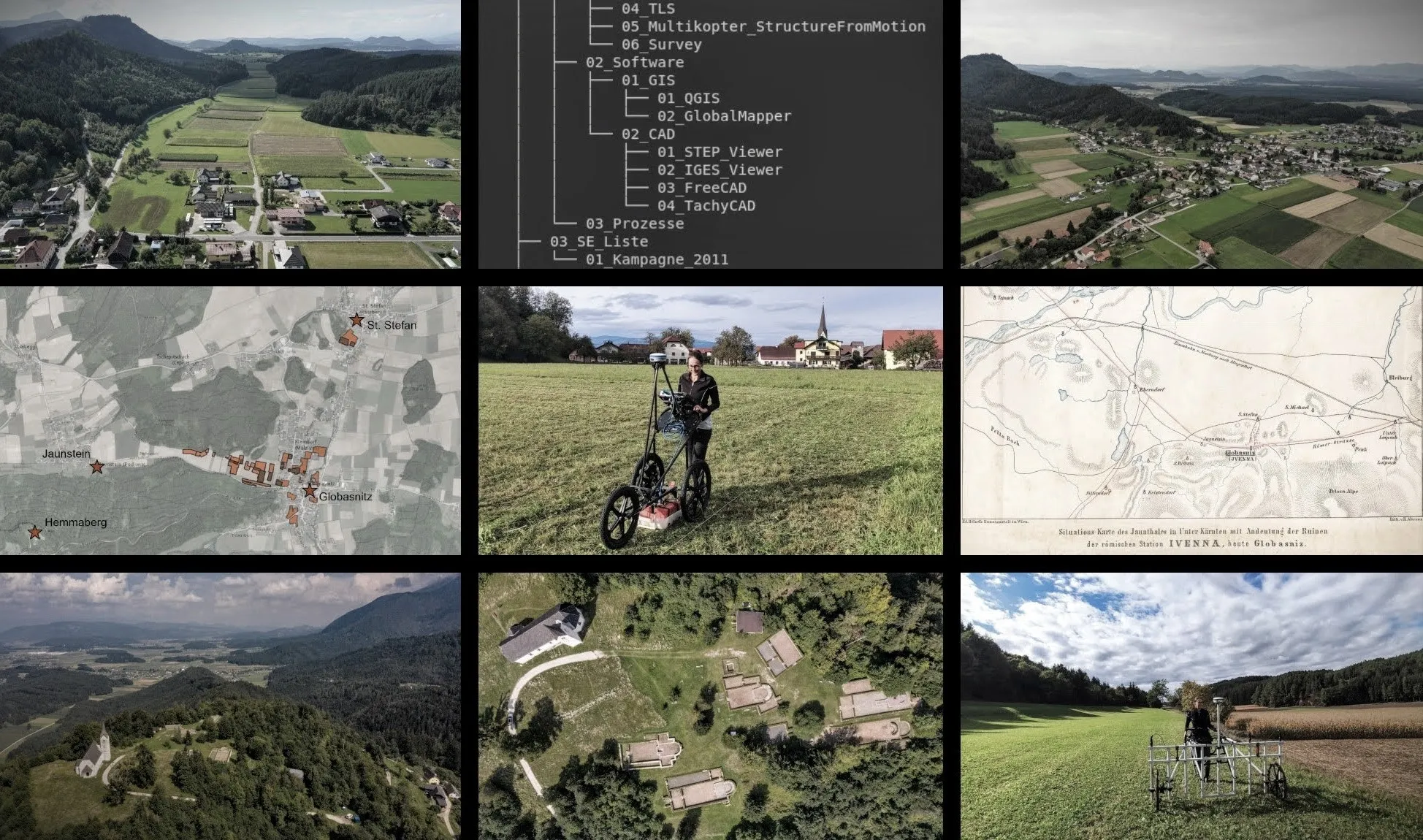
IUENNA will provide, for the first time in Austria for Classics, an outstanding model study and a sustainable long-term archive of an elaborated excavation at one of the most critical Late Antique sites of the Southeast Alpine region and its vicinity.

The goal of this project is the digital indexing and secure storage of bibliographical data of Jelinek's complete works including its artistic, scientific, and media impact. Complete project data will be made available as Open-Access-Files.
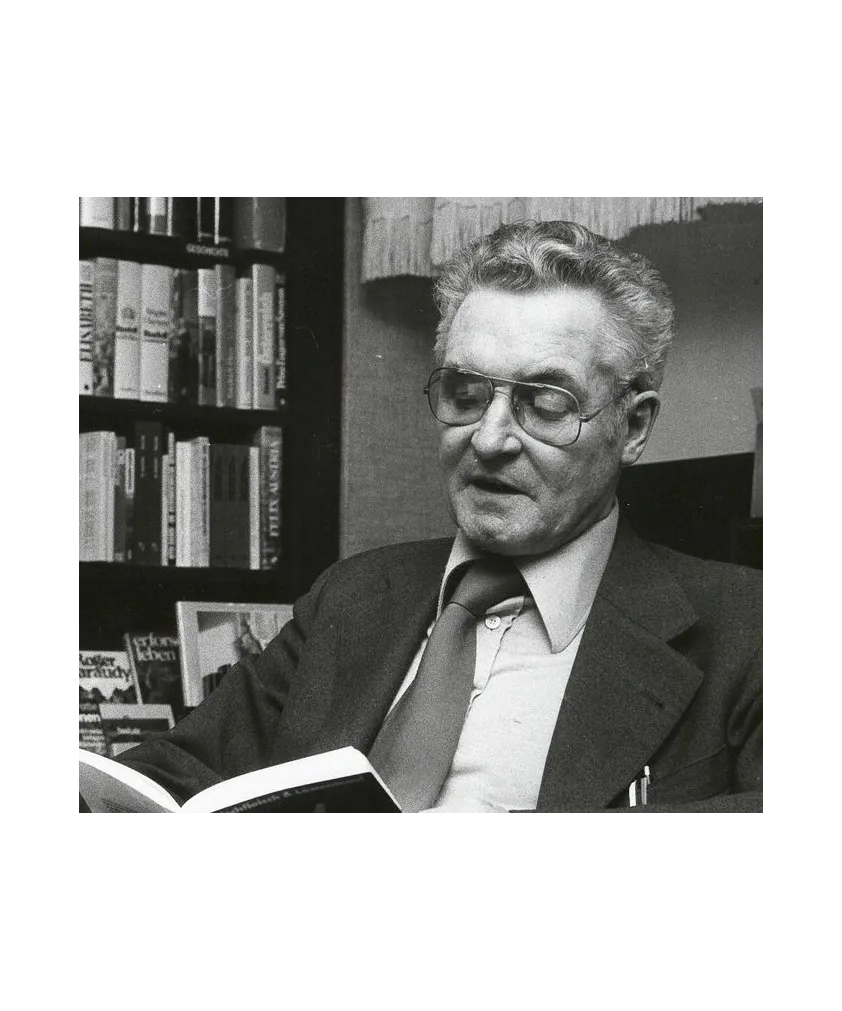
The digital edition of the diaries (1961-1973) of the Linz writer Karl Wiesinger provides a unique testimony to its time, literature and local history.

The research project "Kofler intermedial" presents and analyzes on the intermedial dimension of Werner Kofler's work (1947–2011).

The 'Ladder Project' shows a model handling with digital data intended to raise language awareness in L2 Sociopragmatics and displays the benefits of digital humanities applied in the language didactics.

The project aims to provide pragmatically annotated data in under-researched languages (Italian L1/L2, German and Colombian Spanish). Benefits include the professionalisation of pre-service teachers and the self-learning of non-native speakers.
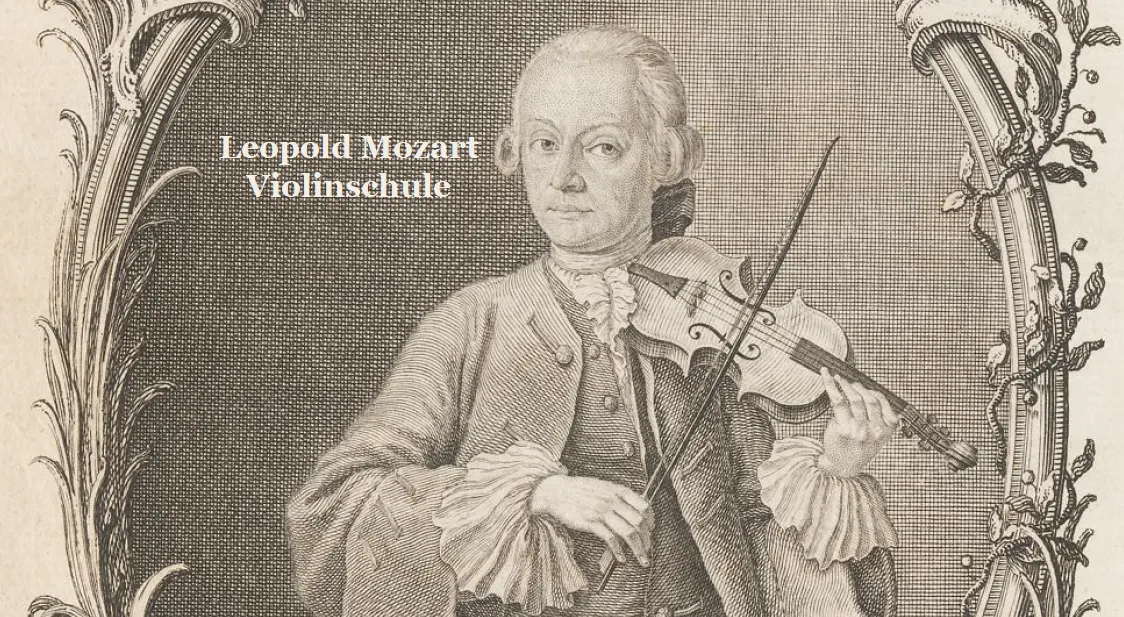
Digital critical edition of Leopold Mozart's "Versuch einer gründlichen Violinschule" (1756).
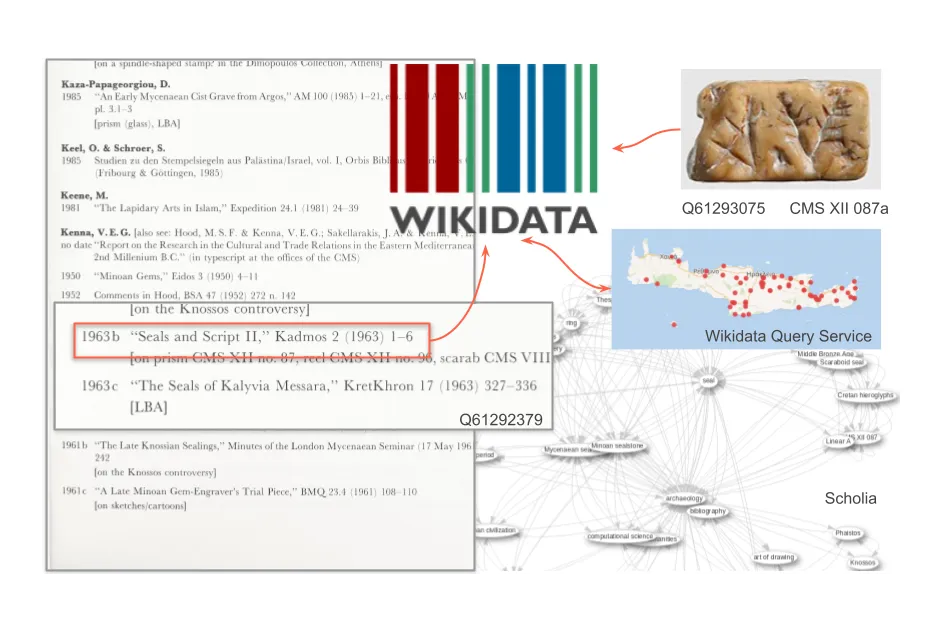
The aim is an interactive online bibliography about Bronze Age Aegean Glyptic. Reference information is held in Wikidata, allowing anybody to correct, extend or add entries. For user friendly re-use, data is displayed with a bespoke web application.
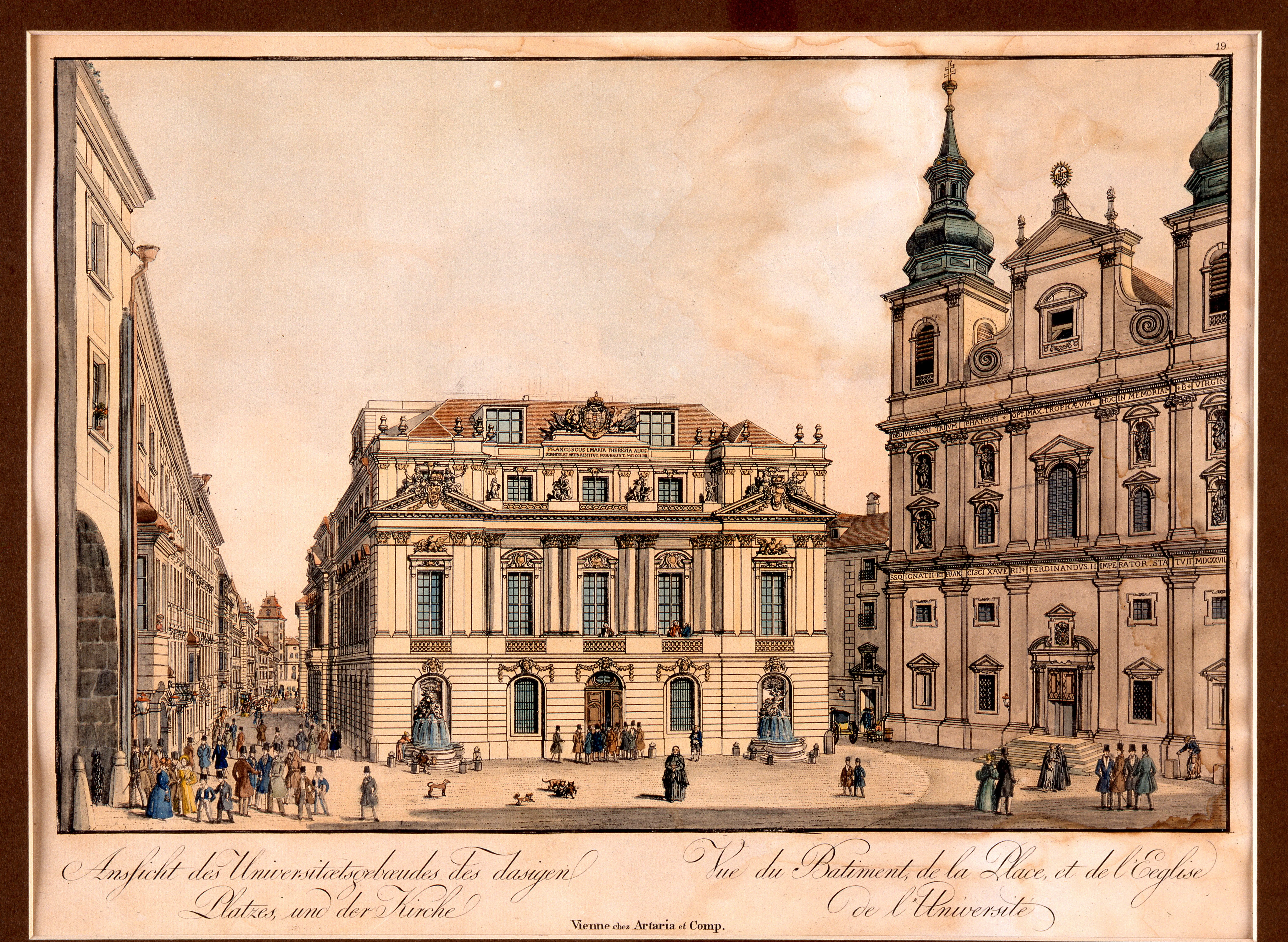
The Proceedings of the Austrian Academy of Sciences from the first 50 years can be virtually discovered and explored with a new web application.

Examples for applications of machine learning for IIIF resources
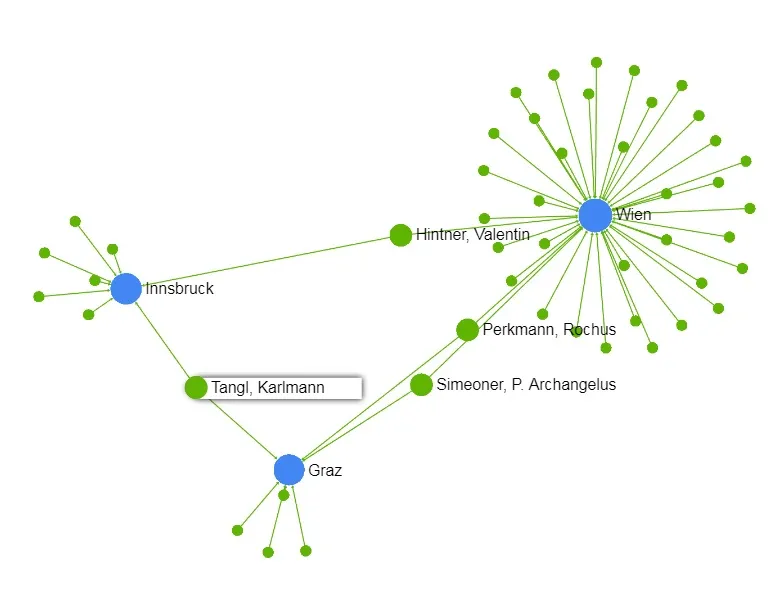
Mapping historical networks: Building the new Austrian Prosopographical, Biographical Information System (APIS)
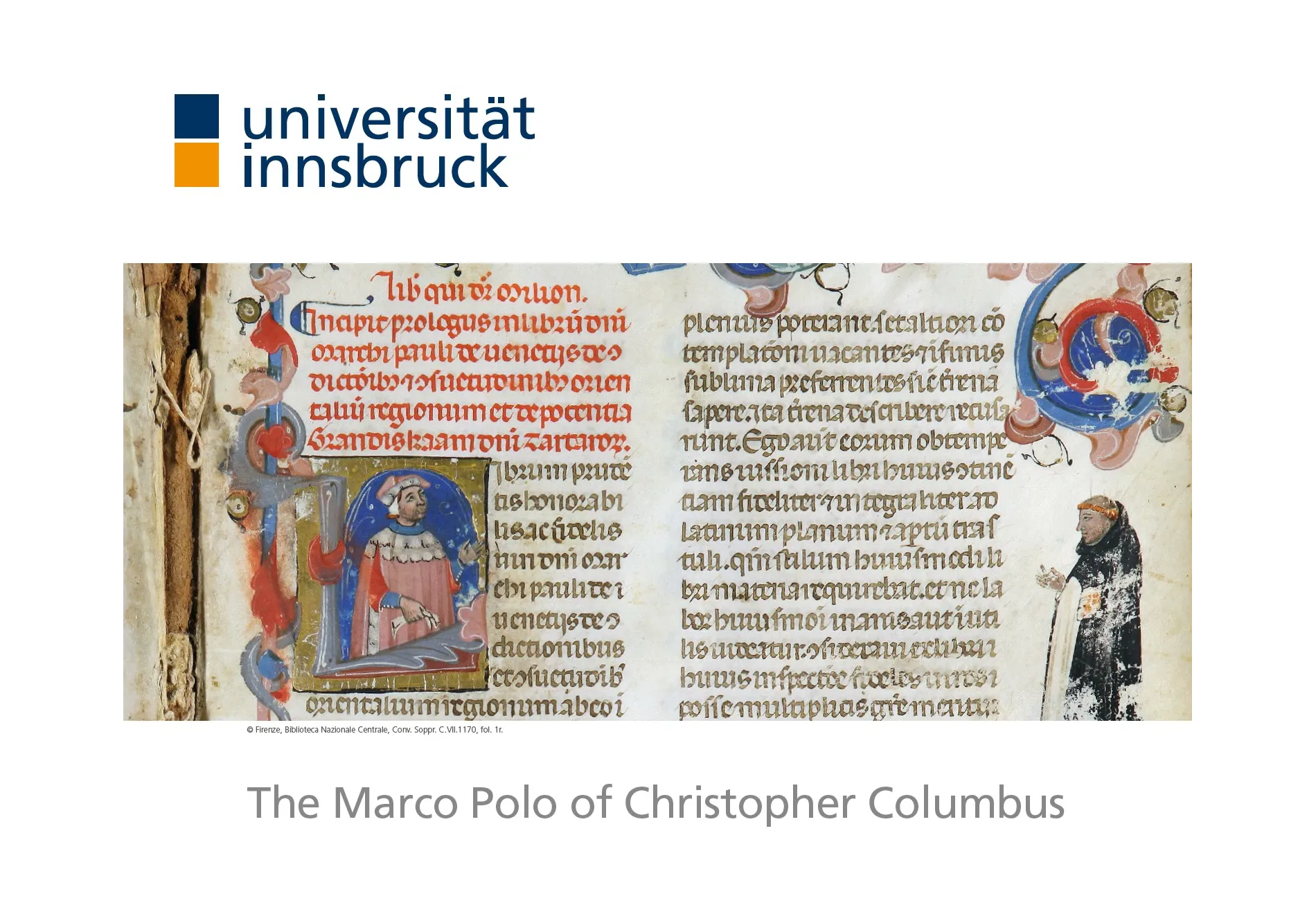
Research project on the Latin version of Marco Polo's 'Travels'

Digitization project of Maximilian I's commissioned art
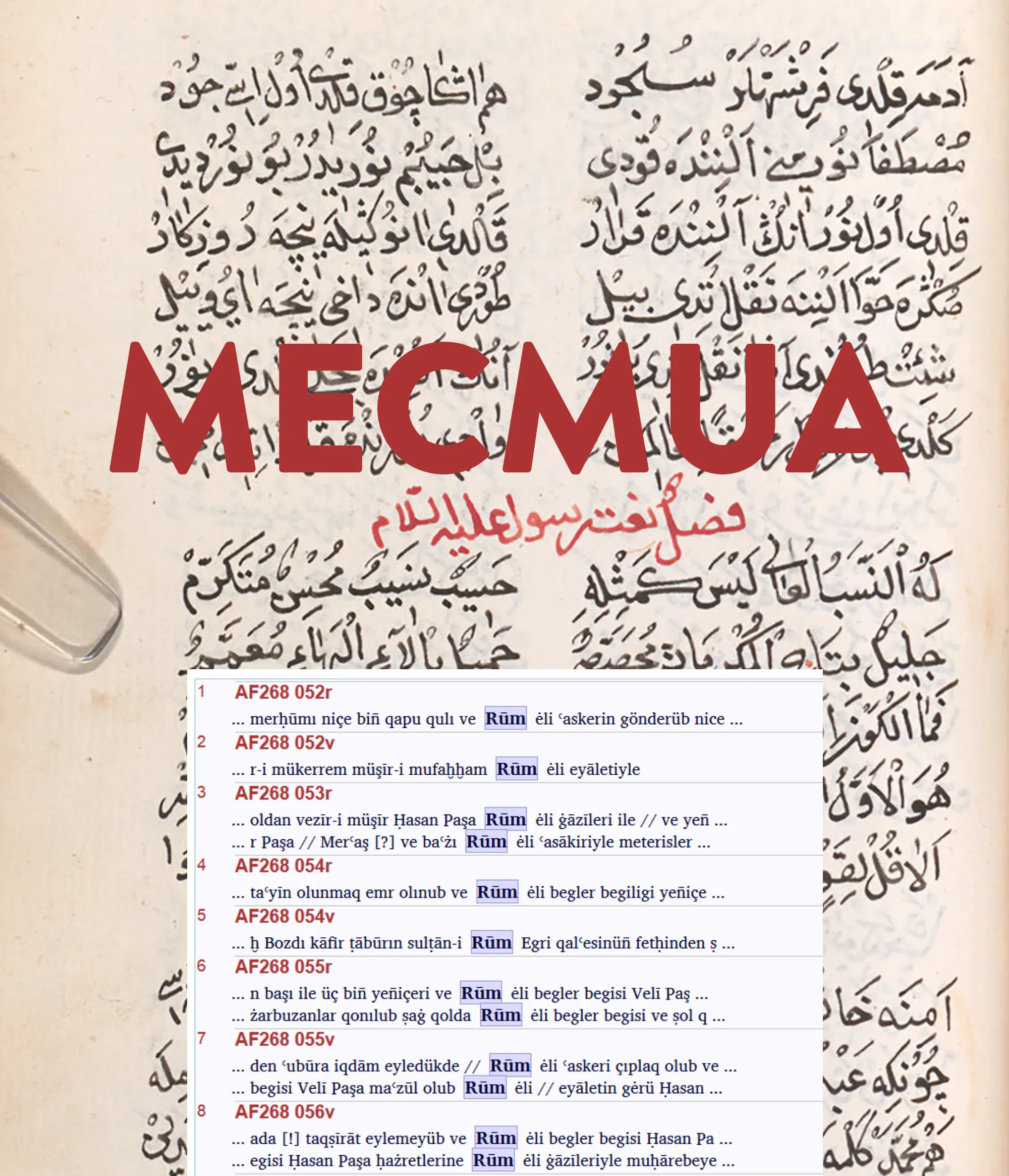
Historical texts of the early modern Ottoman period constitute an absolute rarity in the digital world.
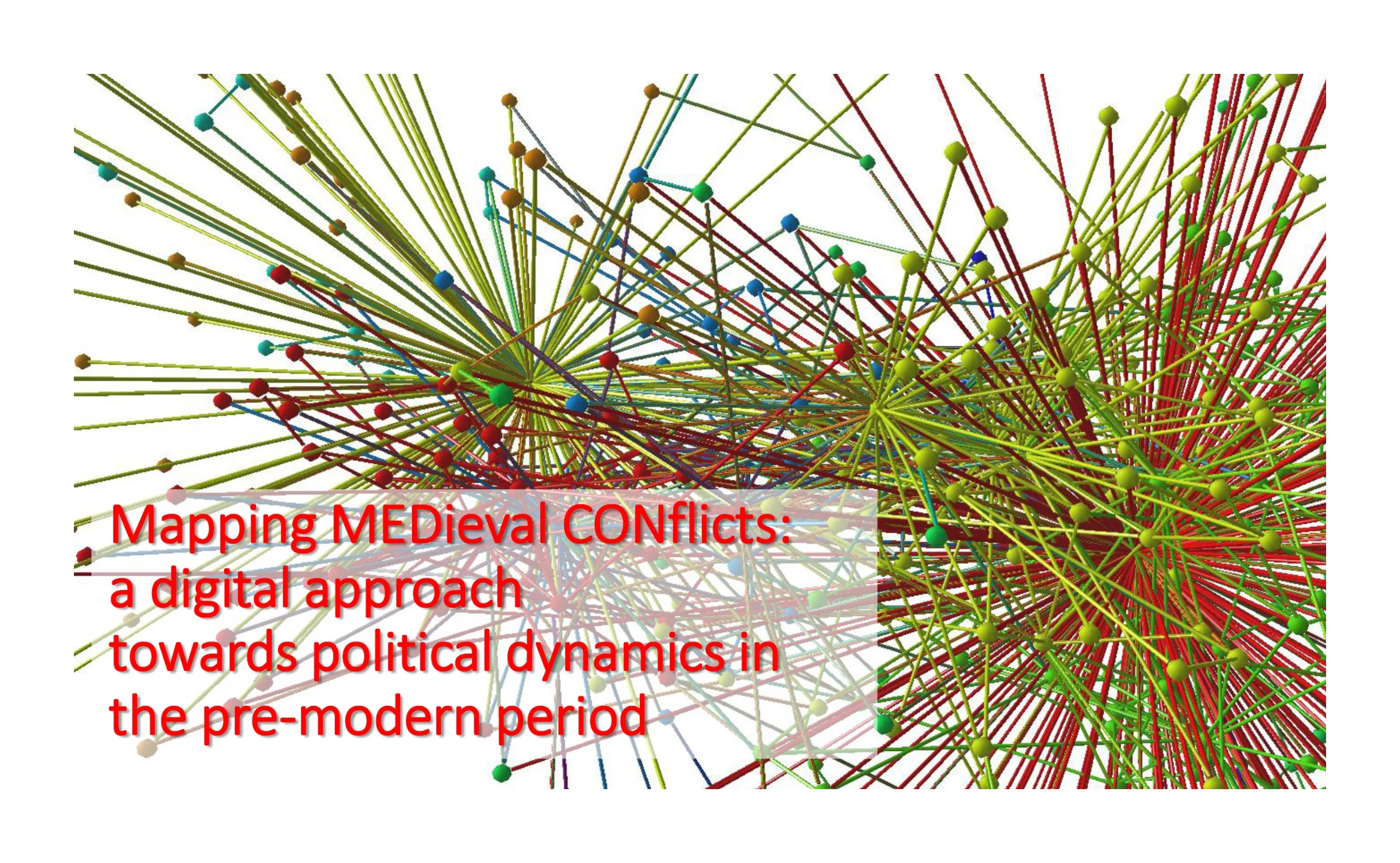
Mapping MEDieval CONflicts: A digital approach towards political dynamics in the pre-modern period

Retrospective Intersectional Corpuslinguistic Analysis of Radiology Reports of Innsbruck Medical University

Exploring Intersections of Media Generations and Gender in the Digital Era
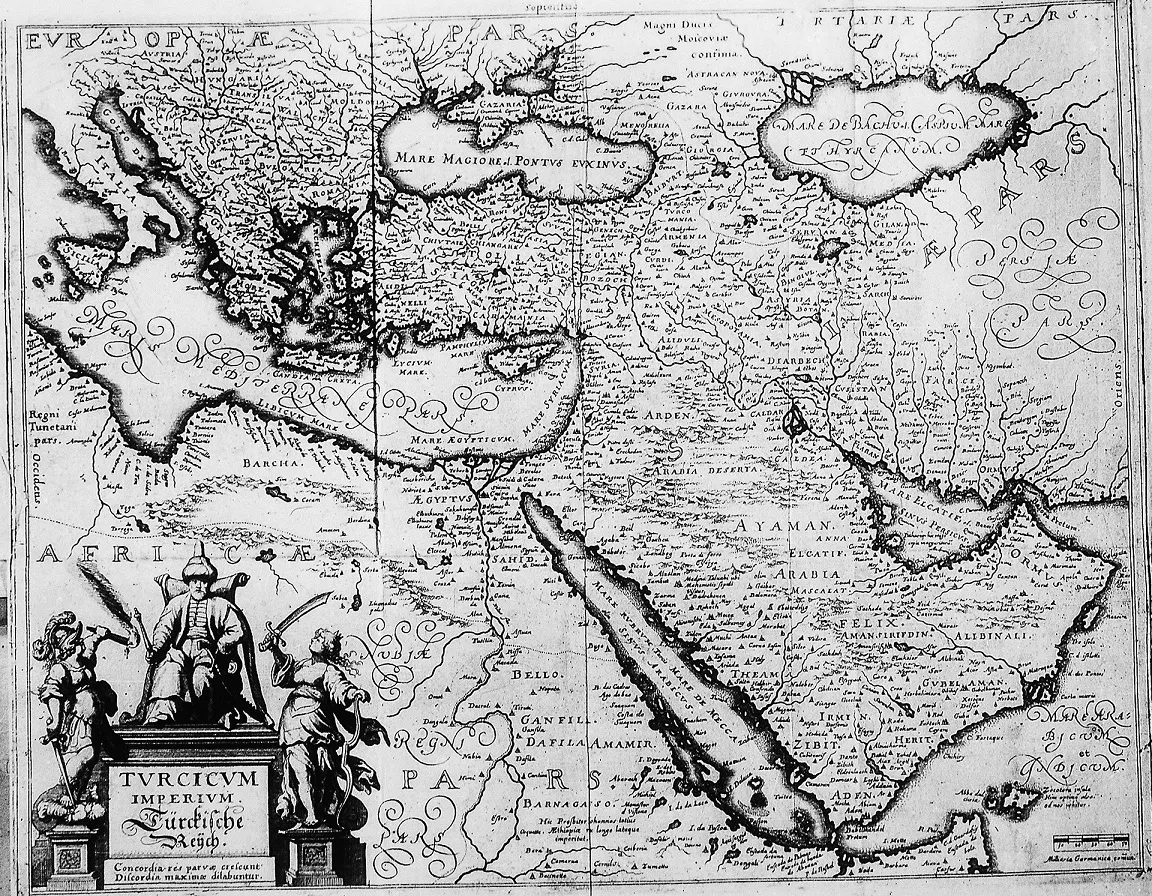
This FWF-funded project examines the communication of Habsburg diplomats in Constantinople with the Imperial Court in Vienna. A digital edition of selected diplomatic sources (1649/50) will be provided.
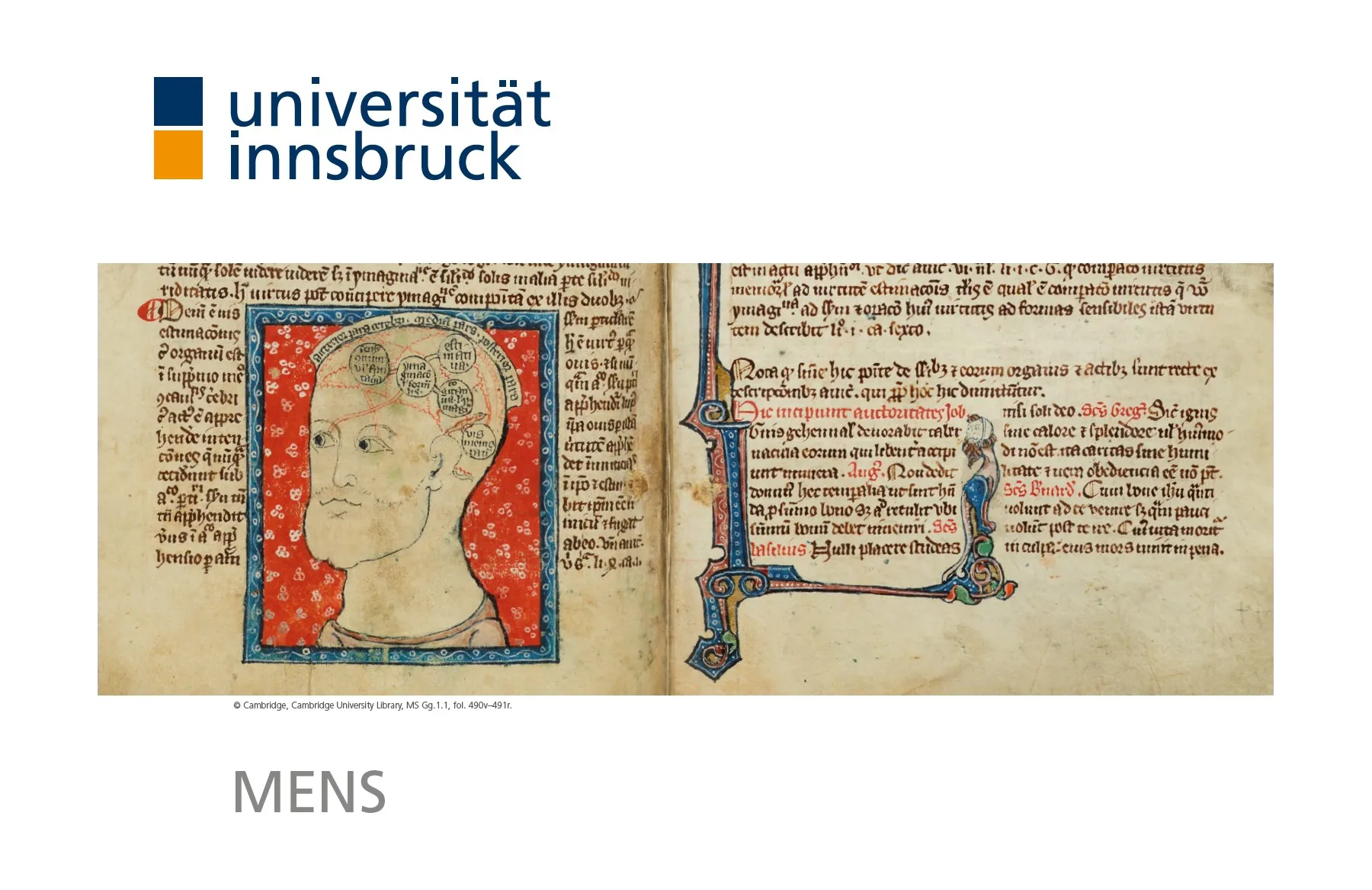
Research project on medieval brain anatomical texts
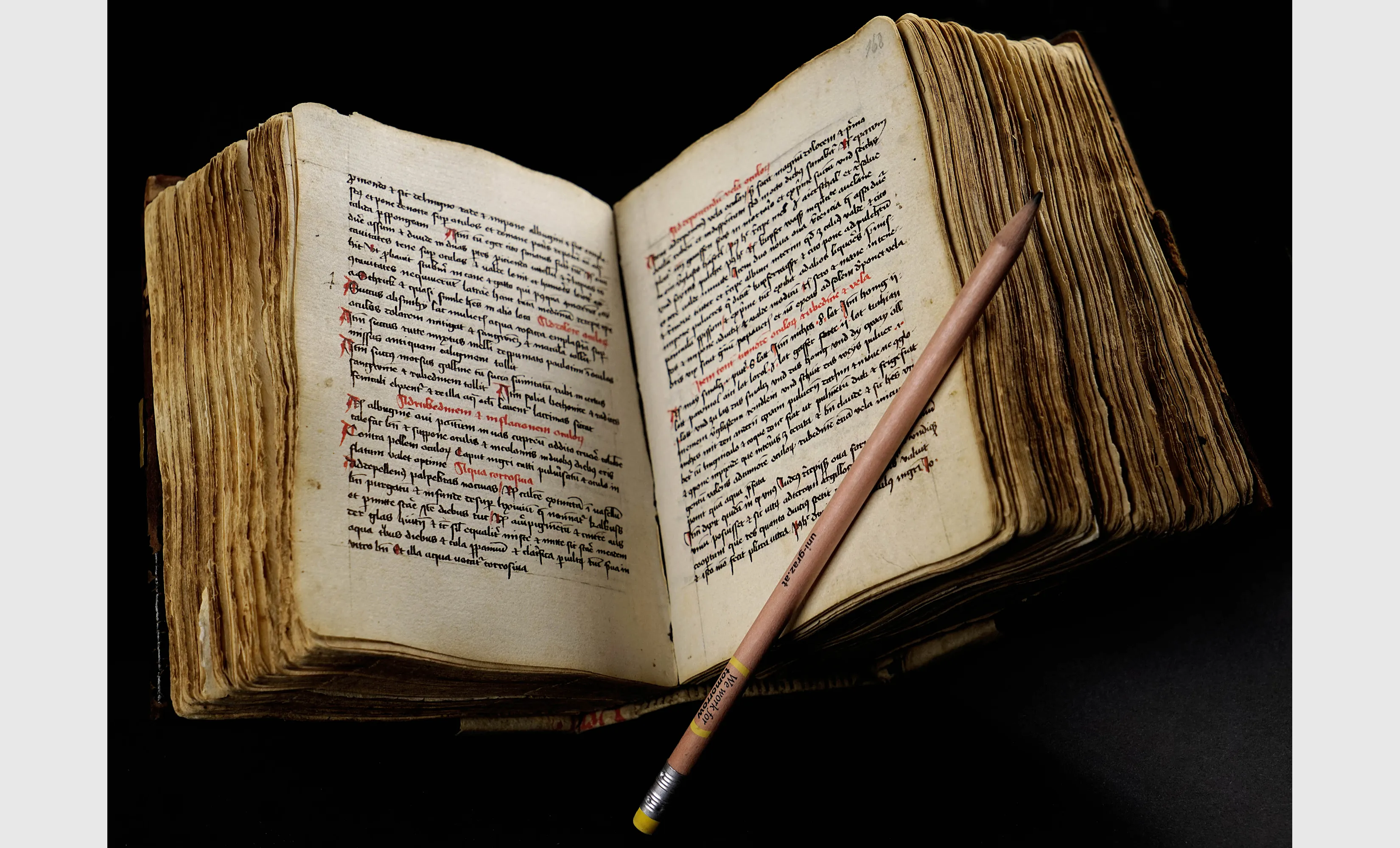
A science communication approach towards the study of the medieval manuscript University of Graz Library, Ms 1609.
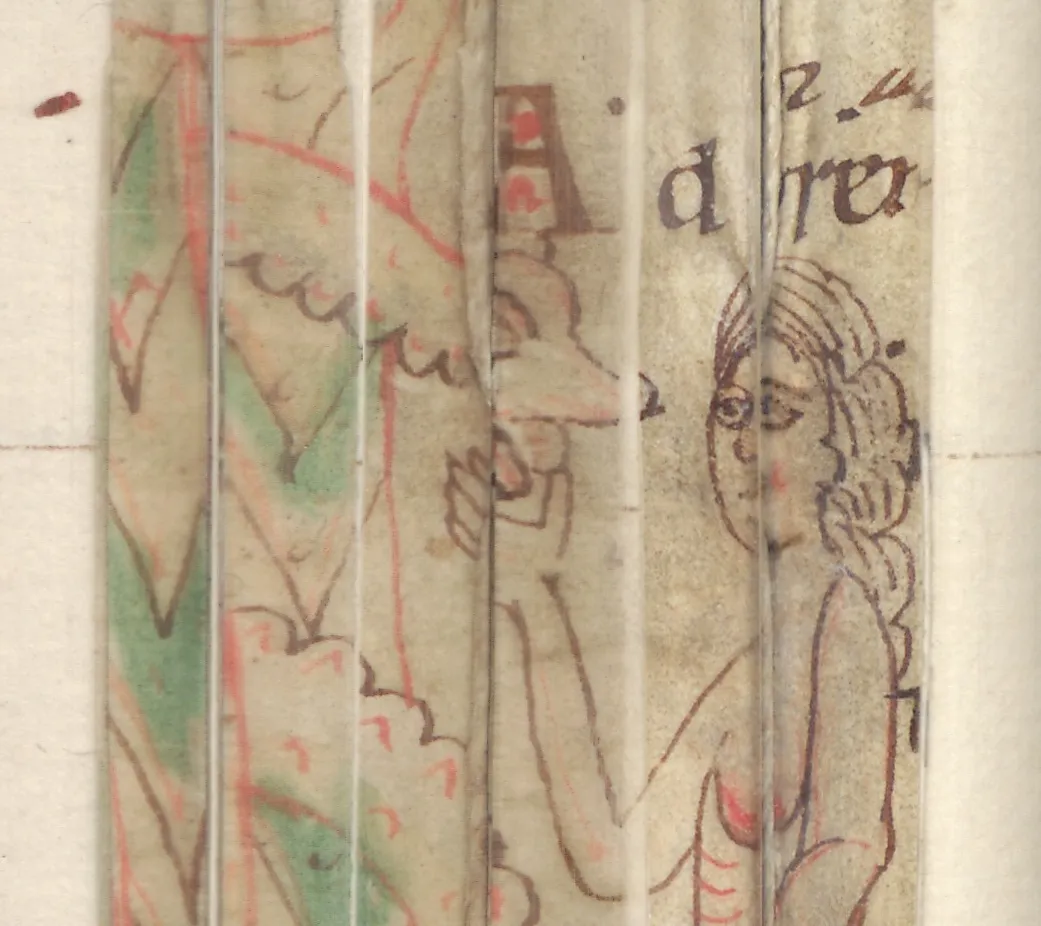
Digitization, catalogization and analysis of medieval manuscript fragments (8-15th century) from the Benedictine monastery of Mondsee
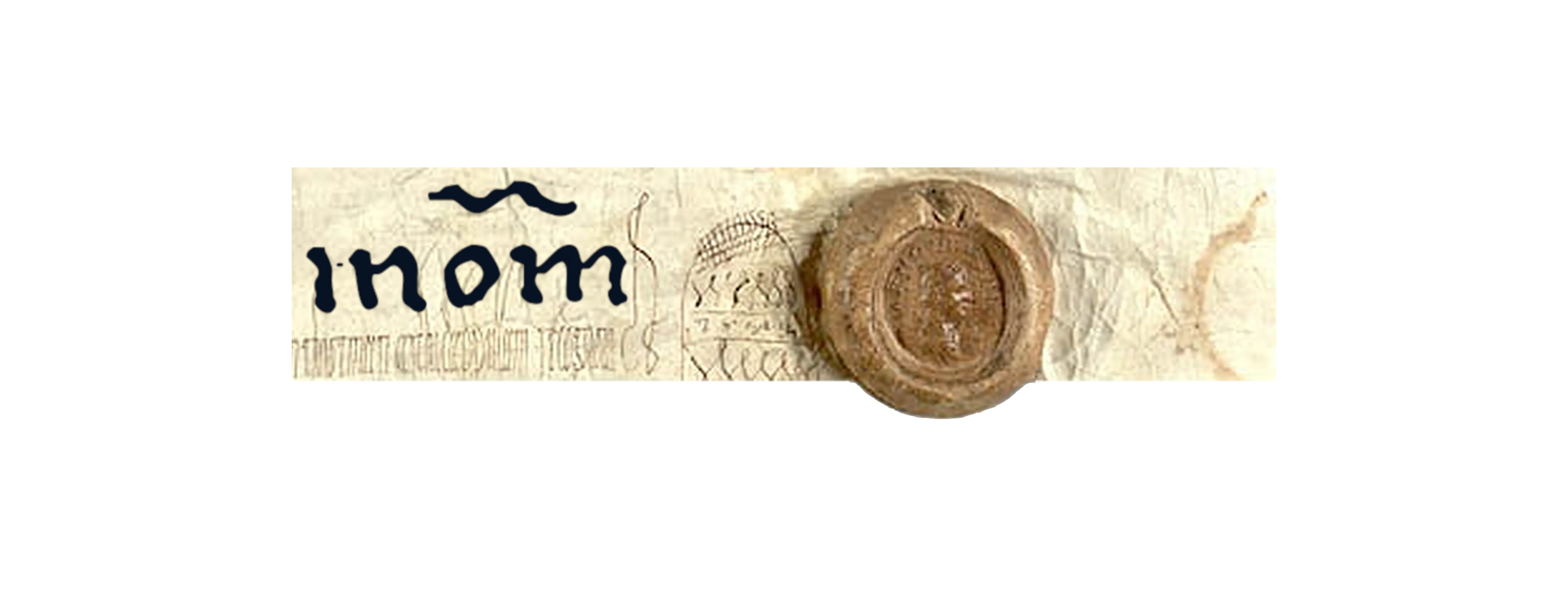
Monasterium.net is a portal and collaborative virtual research environment for medieval and early modern charters.

This digital edition offers the complete correspondence of Wolfgang Amadé Mozart and his family as well as other letters and documents related to Mozart and the Mozarteum Foundation Salzburg.
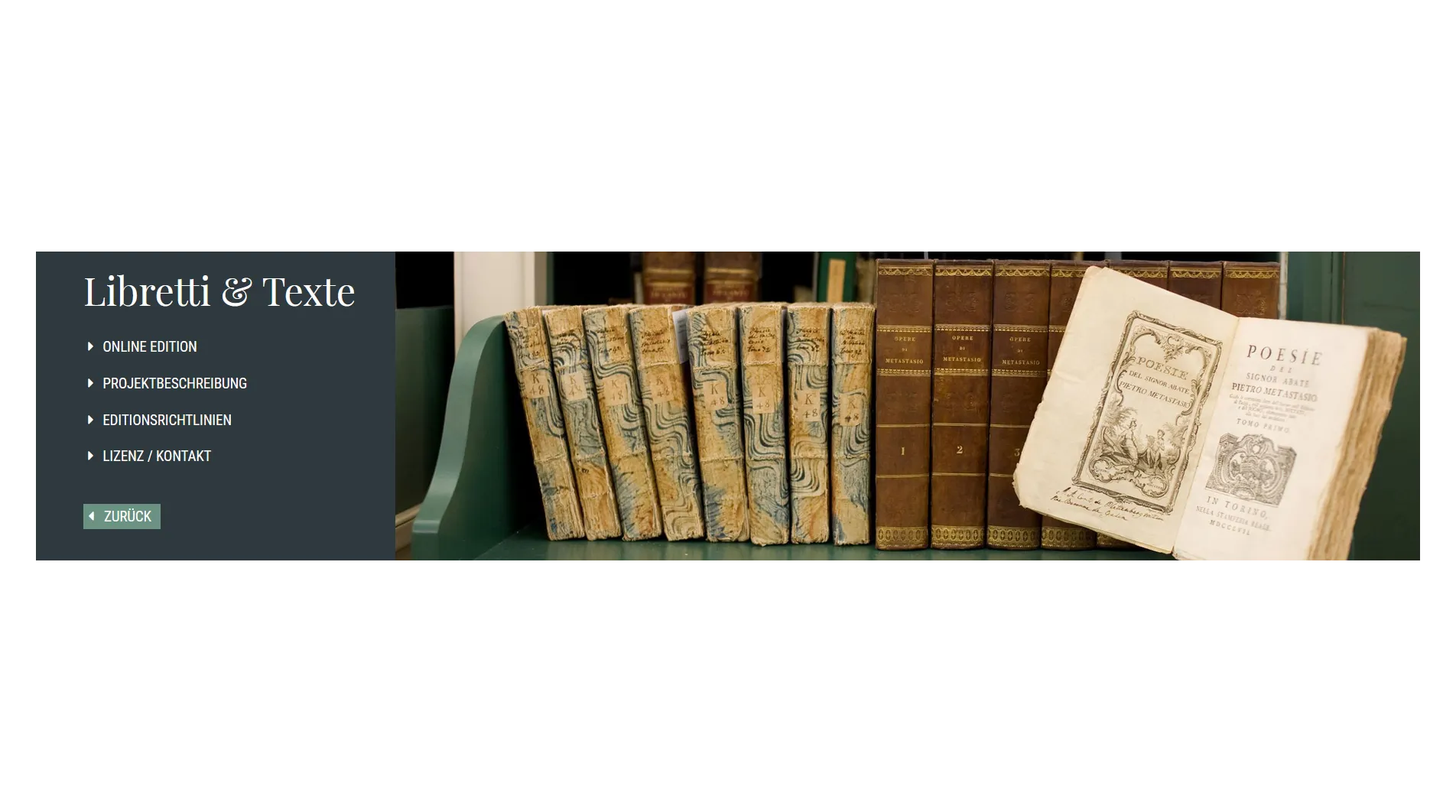
Mozart Libretti – Online Edition offers a digital edition of the textual sources of the vocal works by Wolfgang Amadé Mozart according to academic criteria.
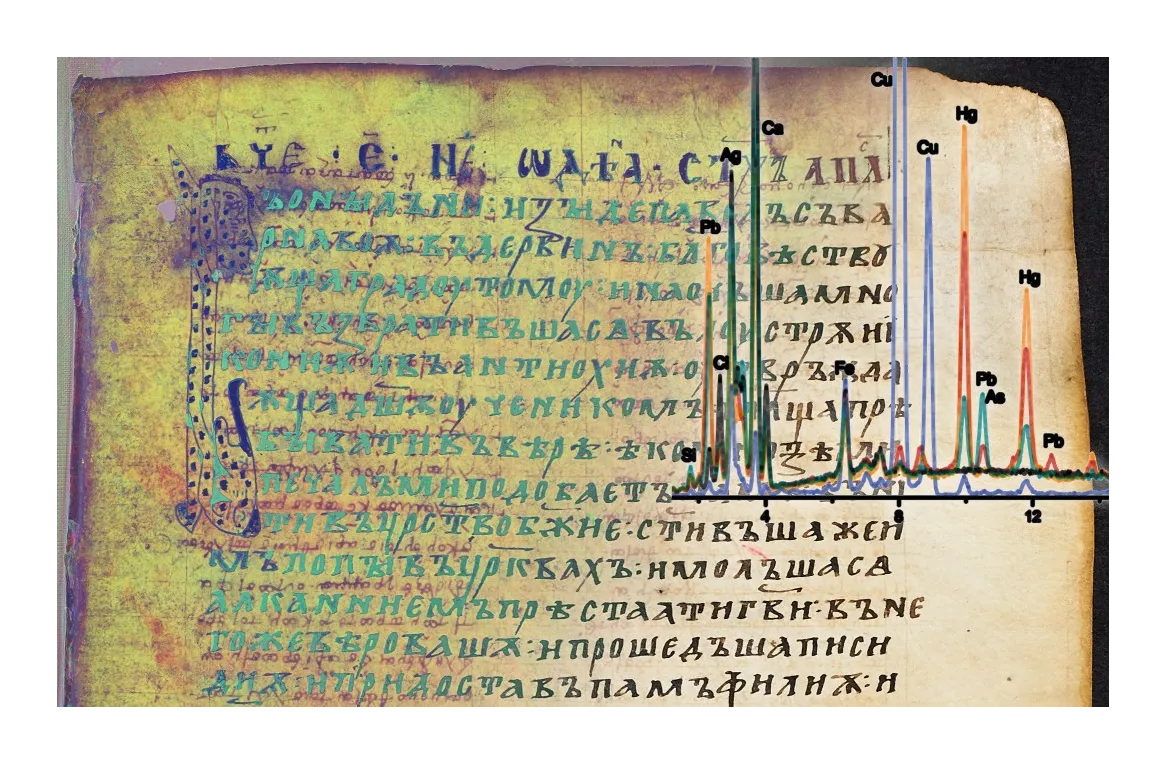
The interdisciplinary analysis of historical manuscripts generates a variety of measuring and descriptive data. A repository relates these data and makes them available for research, education, and the public.
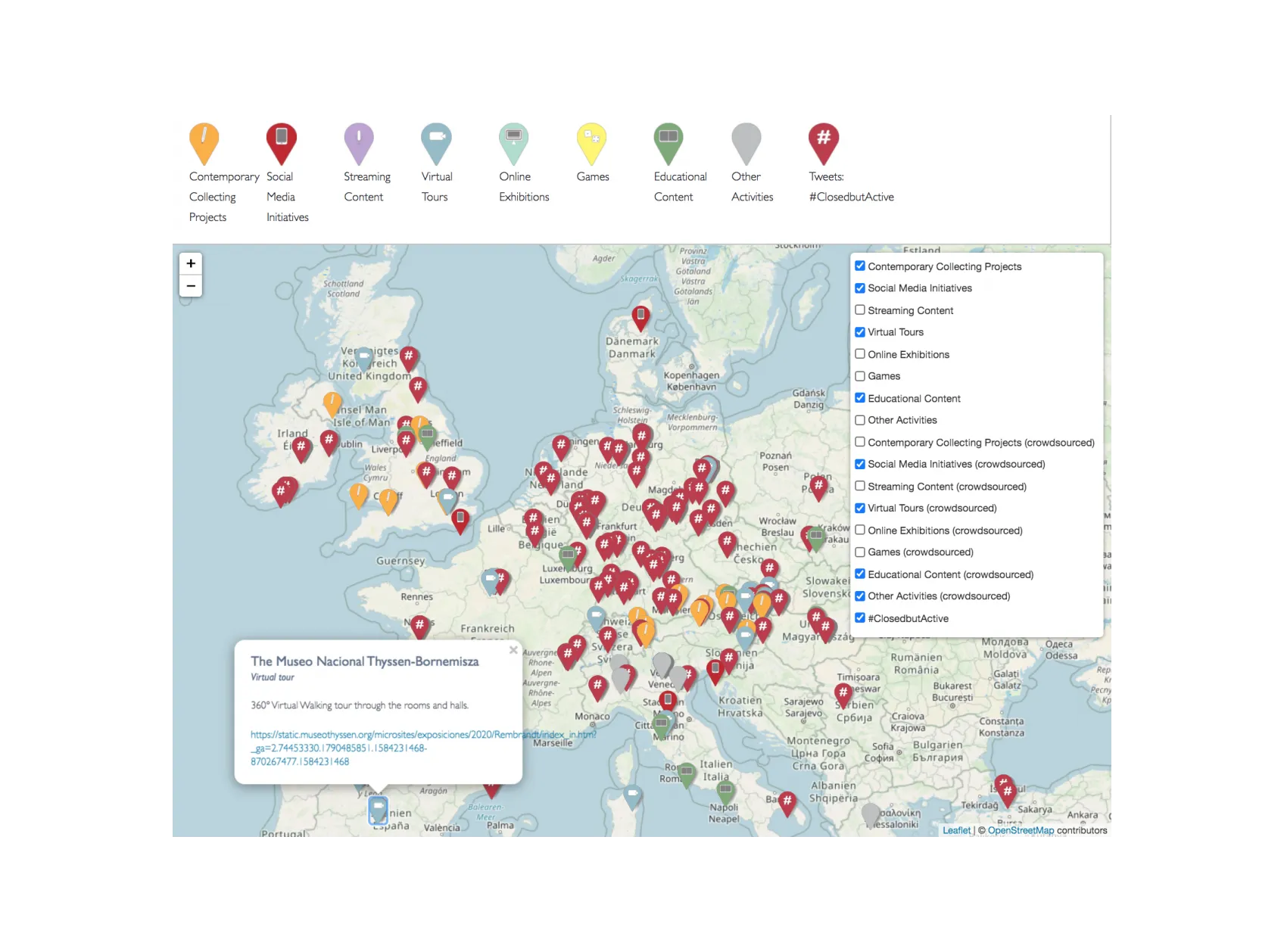
A map aiming to collect and visualise museum digital projects during the COVID-19 pandemic.

A open innovation approach to invent a paticipatory museum of knowledge cultures
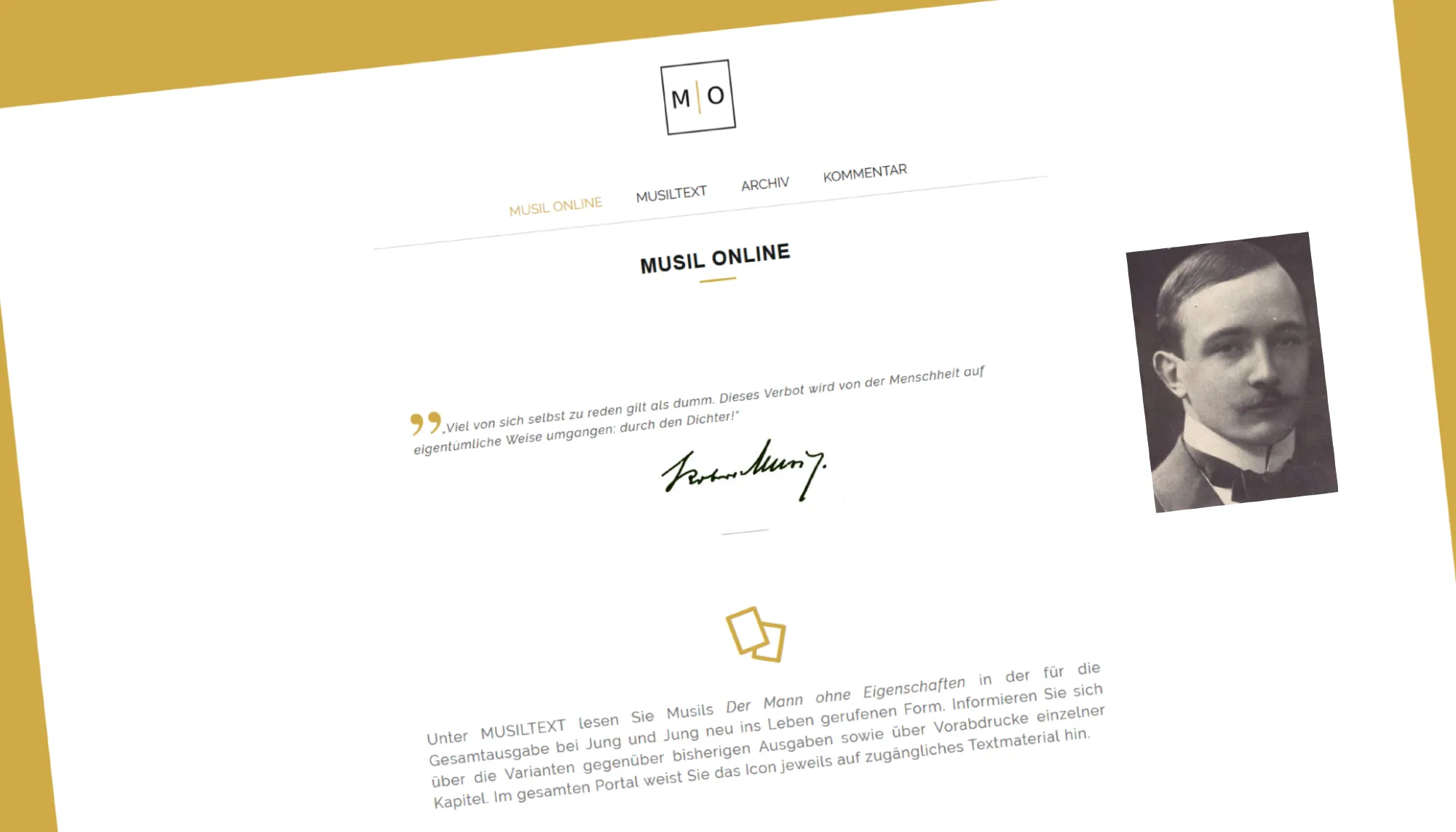
MUSIL ONLINE is the online part of a hybrid digital edition of Robert Musil's (1880-1942) Collected Works.
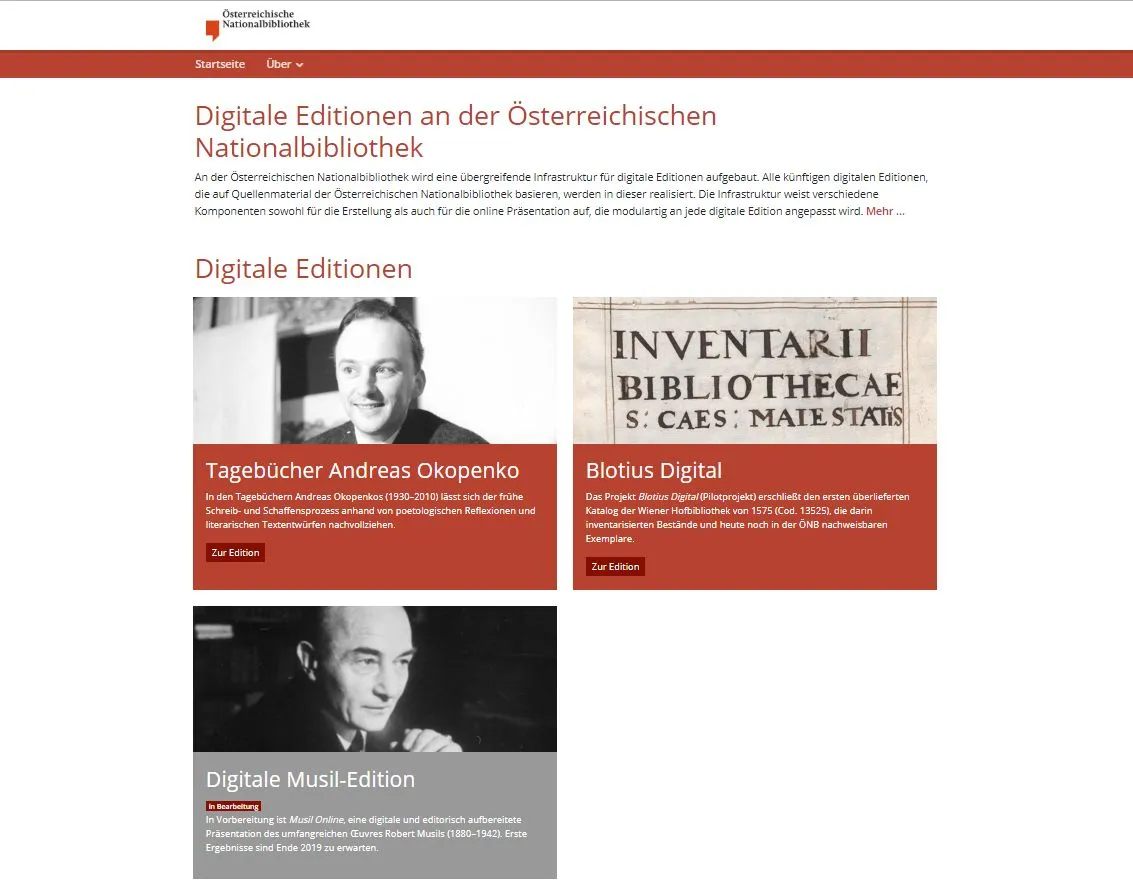
A GAMS-based infrastructure for digital editions based on collections of the Austrian National Library.
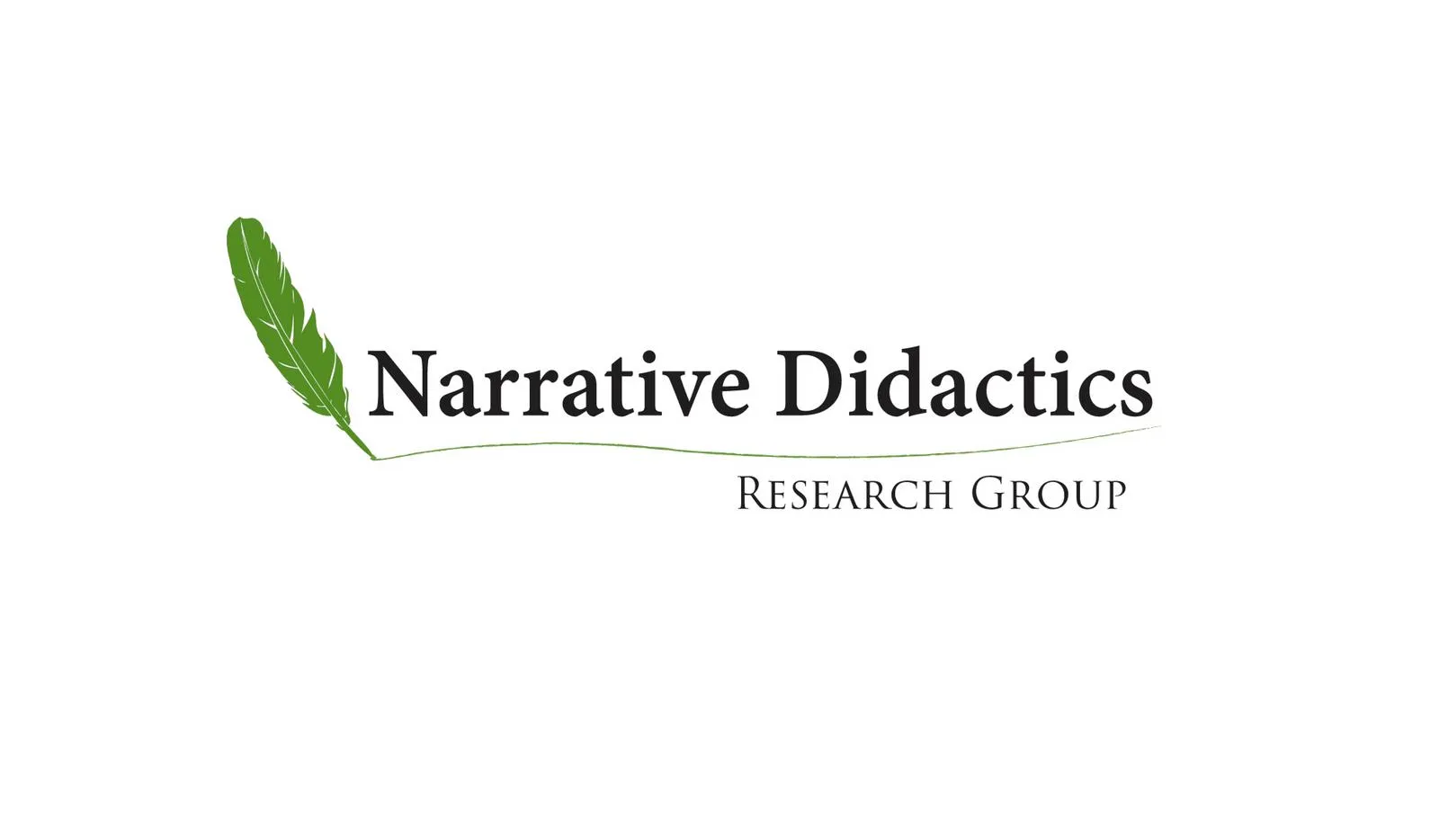
Narrative Didactics is a project at the Center for Inter-American Studies which studies and disseminates innovative approaches and methods that use stories and narrative practices to facilitate learning.

In the project NERDPool data from historical German text corpora and editing projects are used to develop gold standard training material for Named Entity Recognition models.
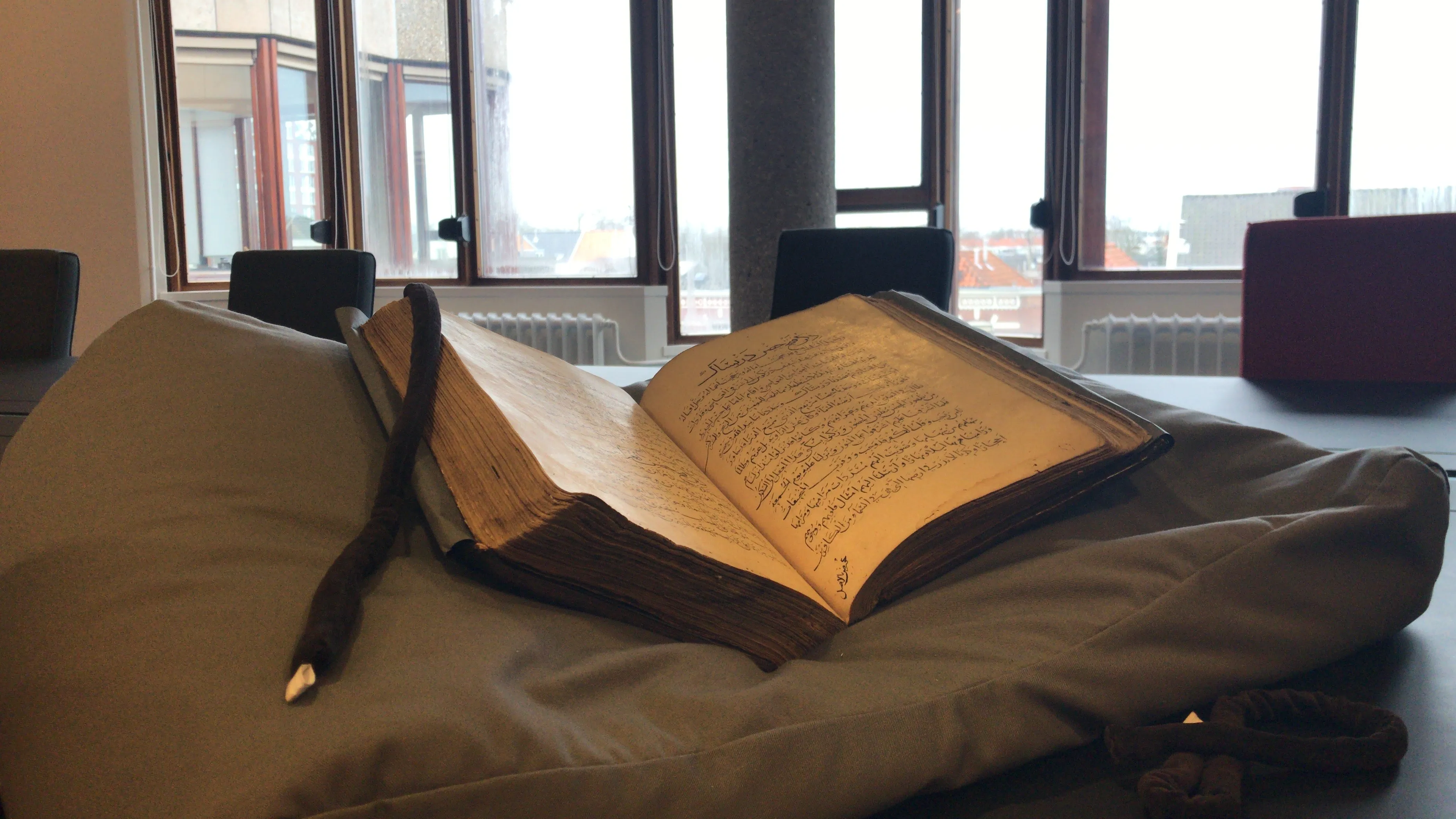
The project investigates Transculturation between nomadic and sedentary societies in medieval Iran and Central Asia by looking at textual and paratextual evidence in surviving Persian and Arabic manuscripts of the period.
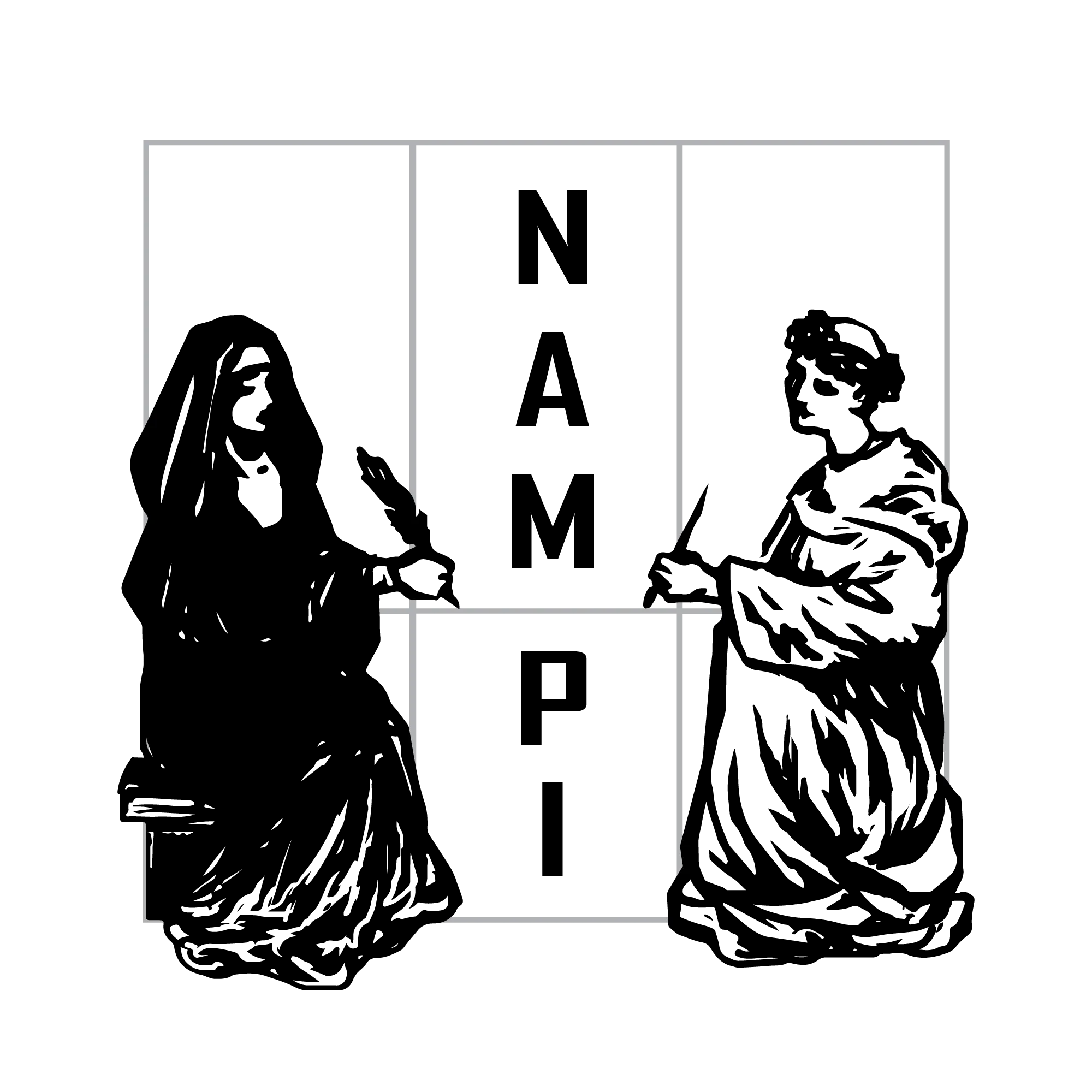
NAMPI gathers various sources available about early modern European Catholic nuns and monks. This allows an accurate portrayal of the lives of early modern nuns and monks.
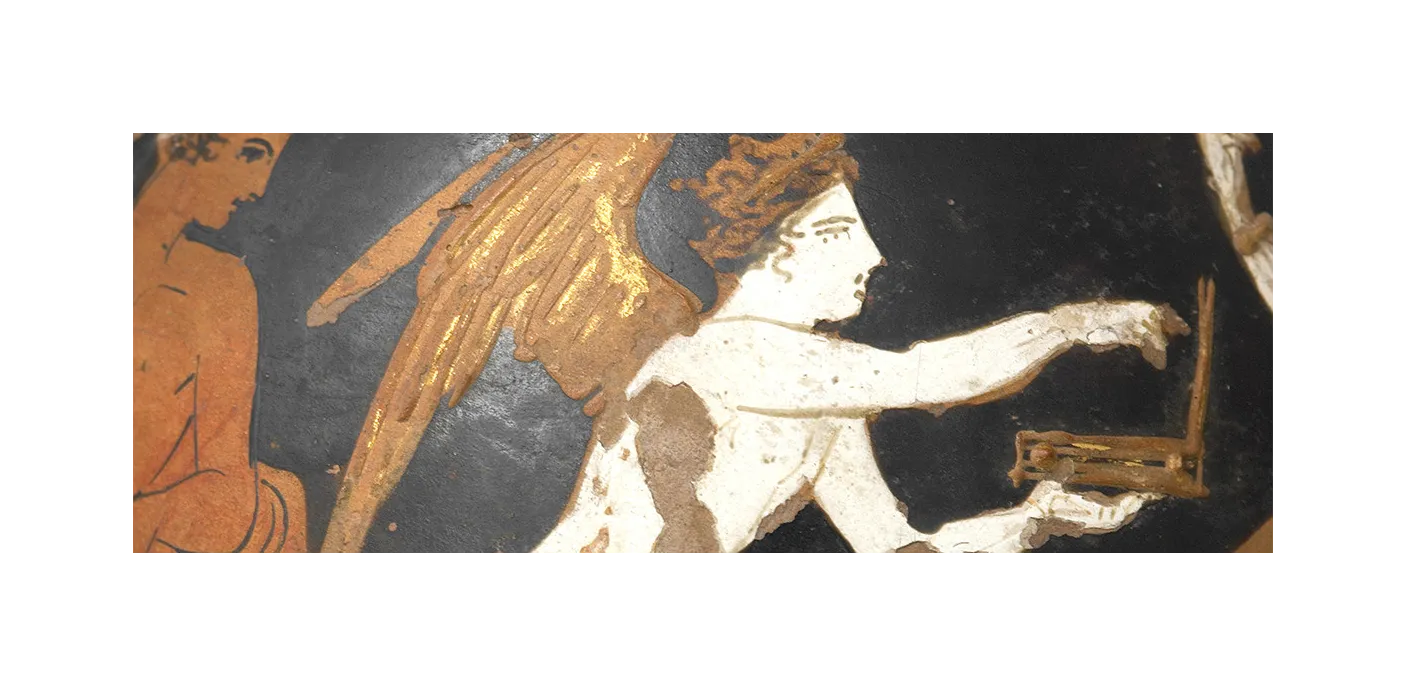
The ODEEG project is connected to the CVA (Corpus Vasorum Antiquorum). Its aims were to digitally document ancient vases in 3D and the long-term digital preservation and open dissemination of the documentation and results.
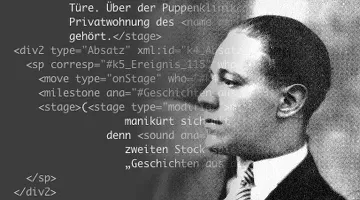
The project provides insights into the historical-critical Edition of Horváth's works and the comprehensive digital scholarly edition of "Geschichten aus dem Wienerwald (Tales from the Vienna Woods)"
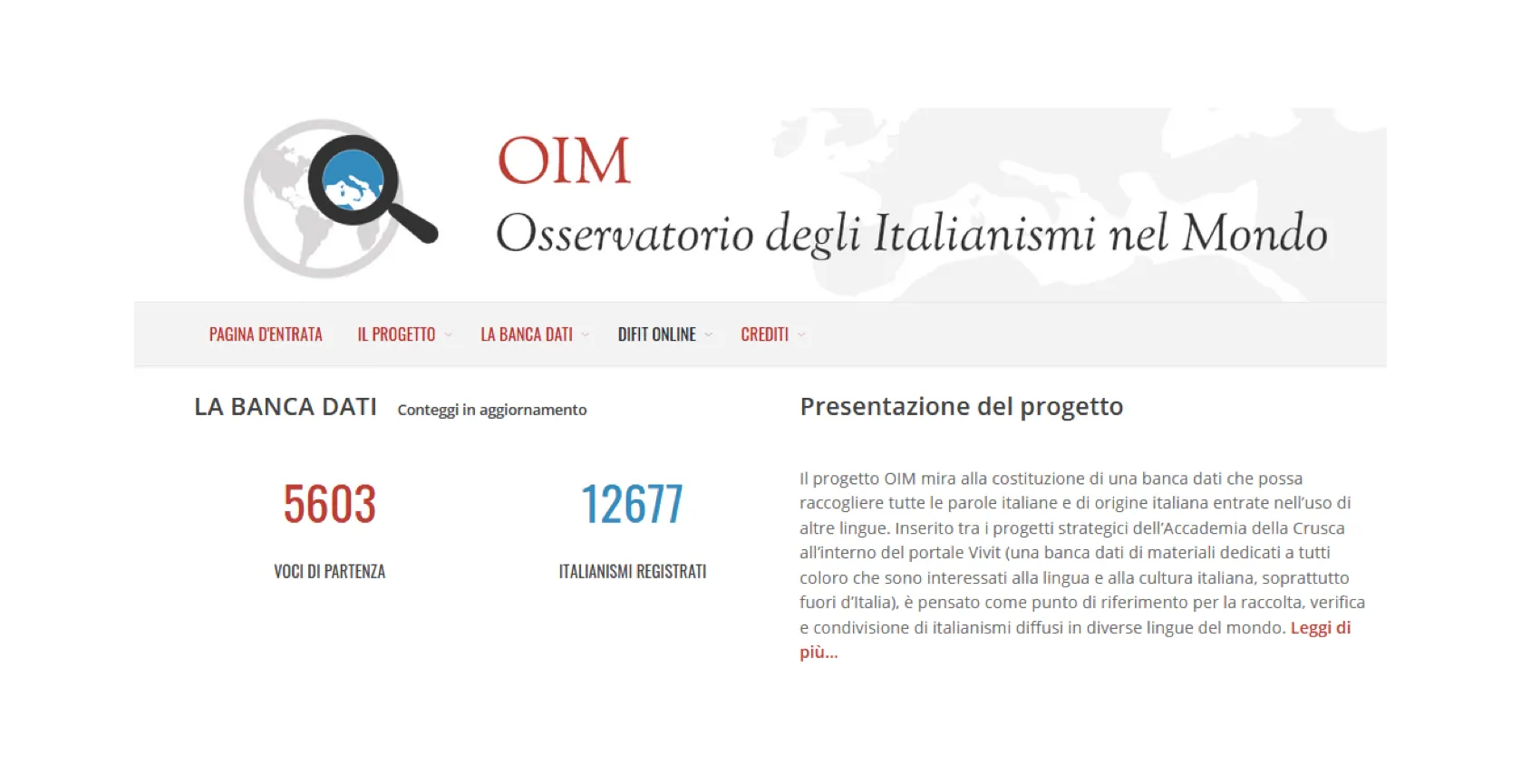
Database of Italian loanwords in a continuously growing number of contact languages worldwide

ONAMA is concerned with the development of a semantic web ontology as a digital tool for the analysis of narratological patterns in medieval literature and images.
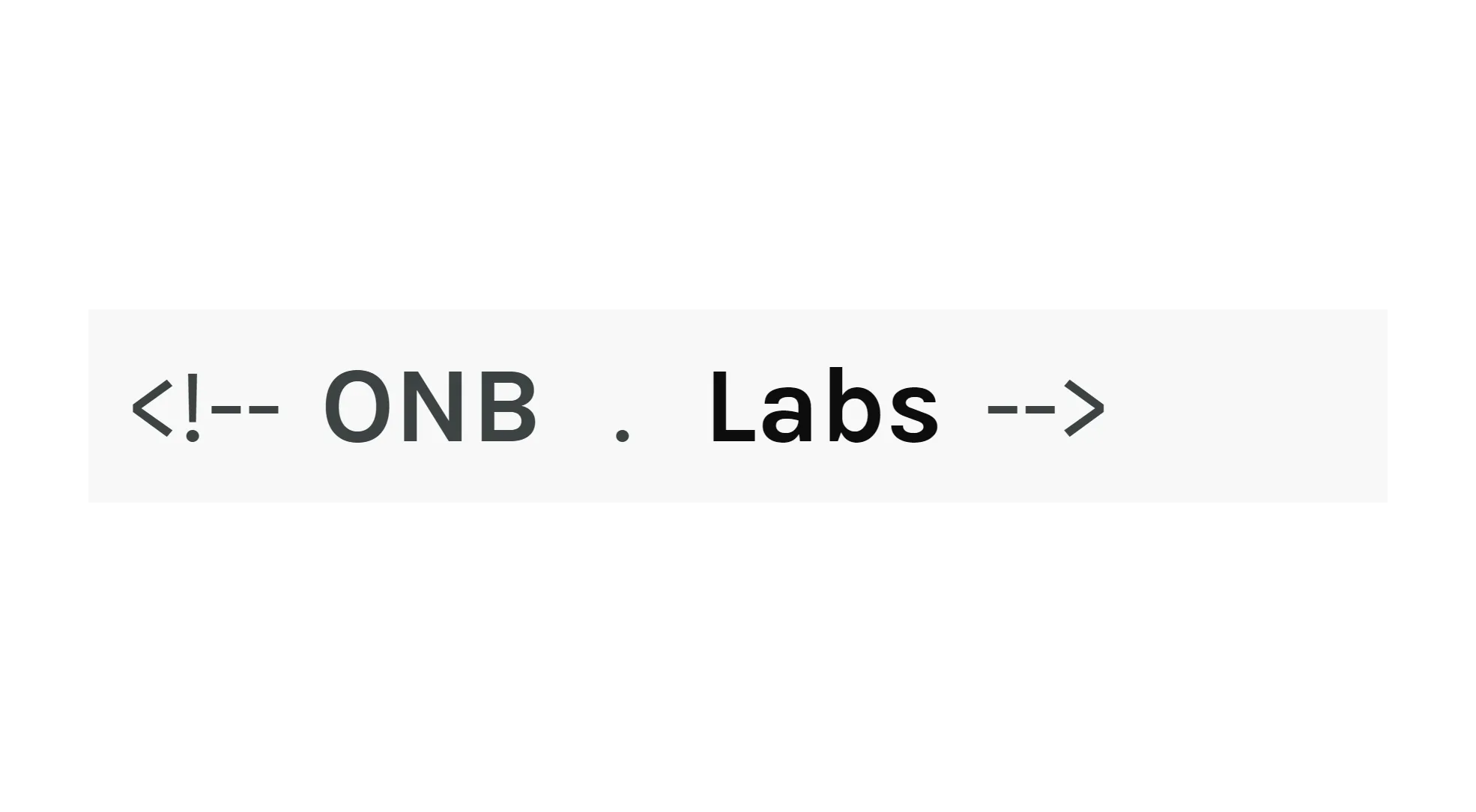
Research, experiment and creative work with digital holdings and metadata from the Austrian National Library
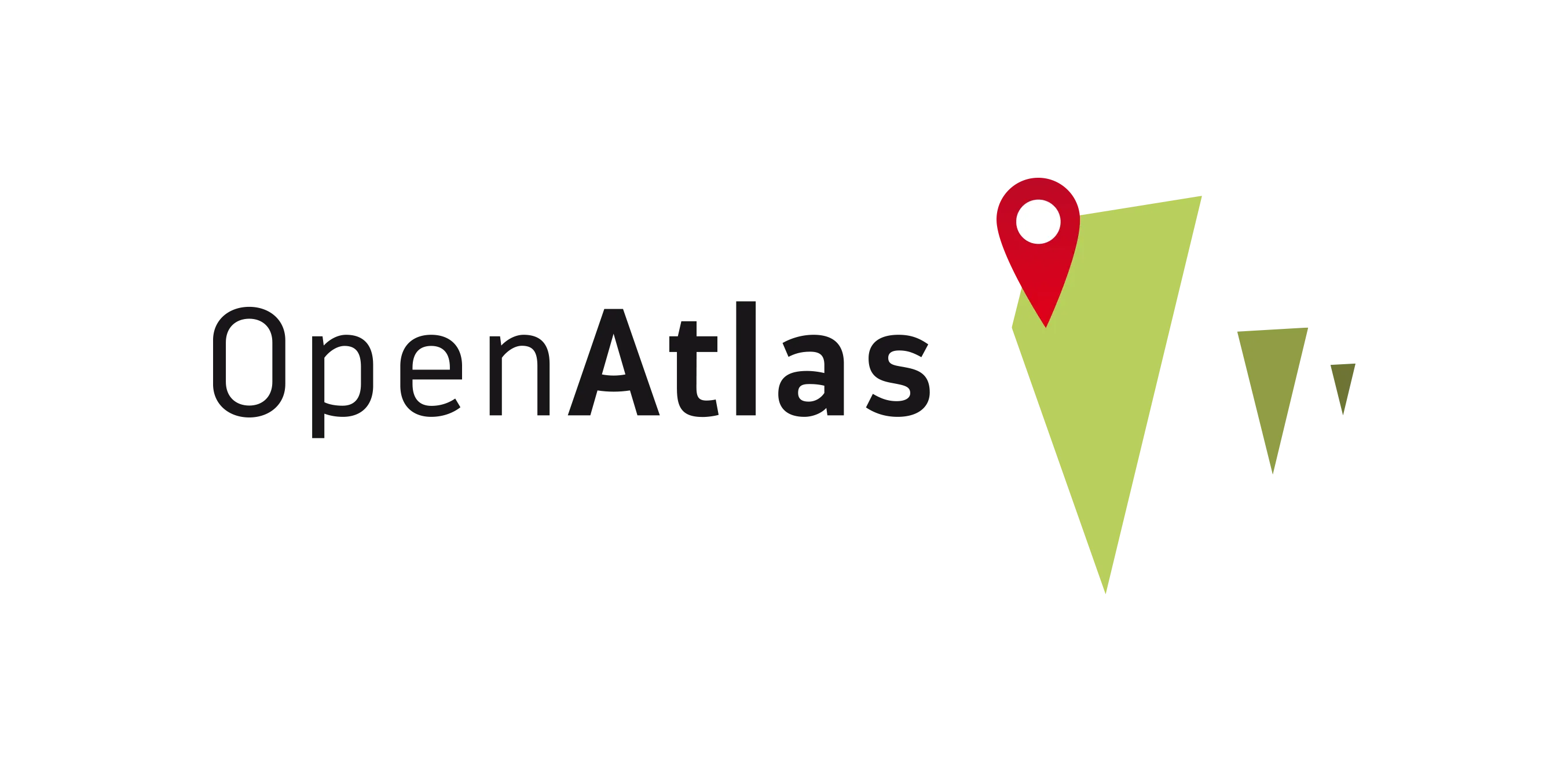
OpenAtlas is an open source, web based database system for complex archaeological, historical and geospatial data.

This interdisciplinary Digital Humanities project analyzes Ottoman "nature" (flora, fauna, landscapes) in travelogues on the Ottoman empire, printed between 1501 and 1850.
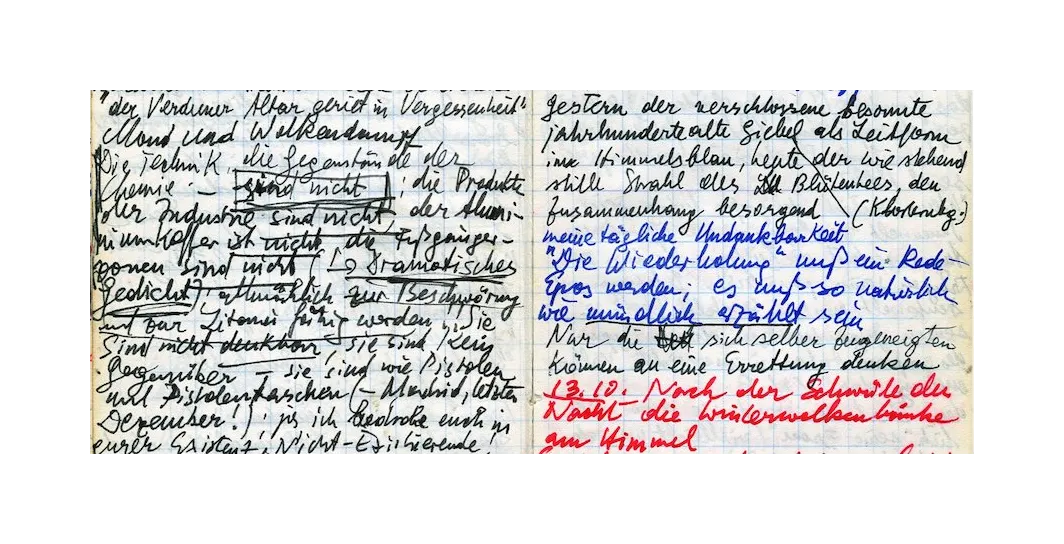
In this cooperation project between the Literary Archive of the Austrian National Library and the German Literature Archive Marbach, 22 notebooks of the Austrian literature Nobel laureate Peter Handke are published in a digital edition.
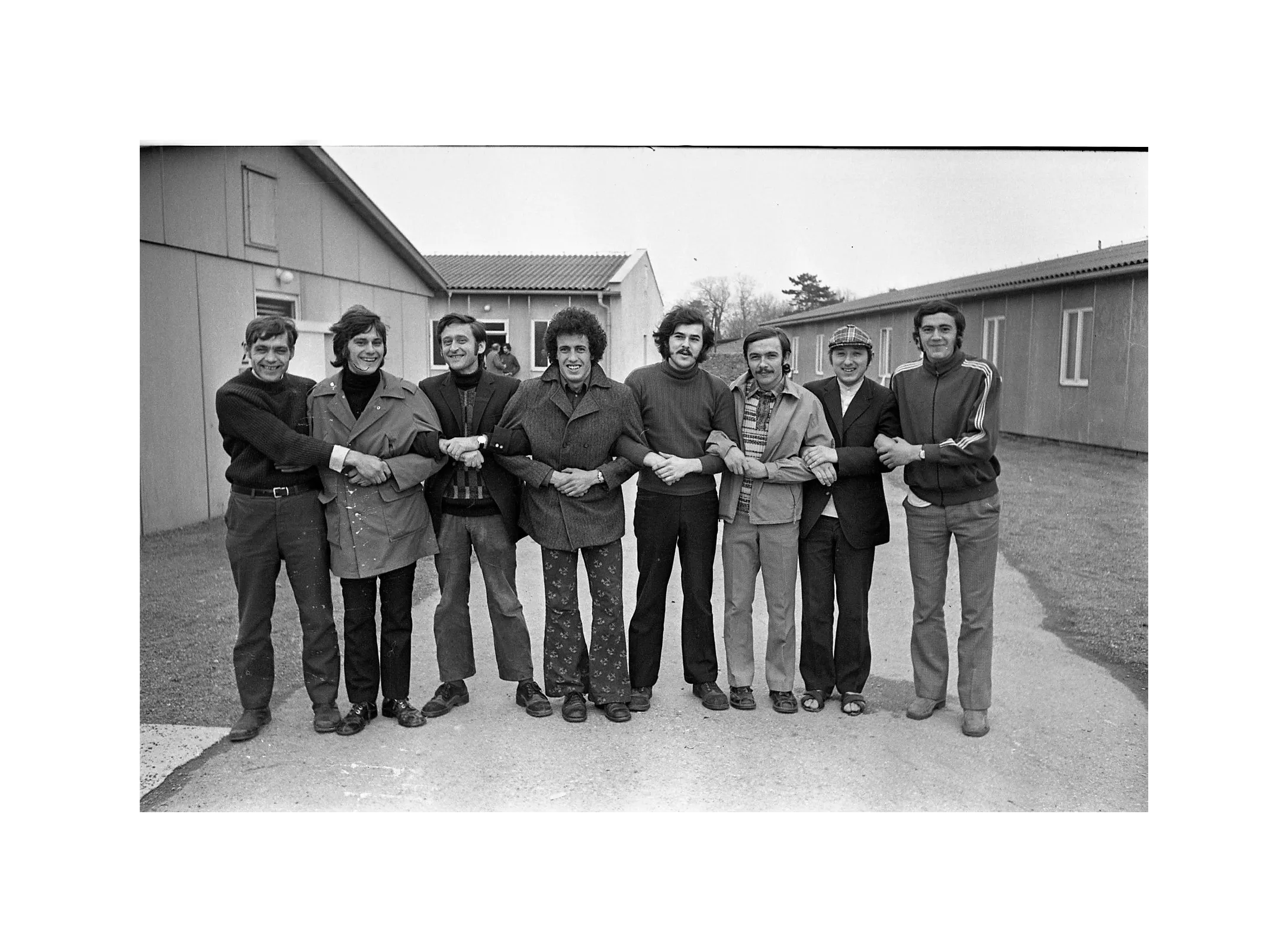
The research project Picturing Migrants' Lives examines photographic representations of Yugoslav labour migrants in Austria of the 1970s and 80s based on the photographic legacy of the Yugoslav photographer Jovan Ritopečki.
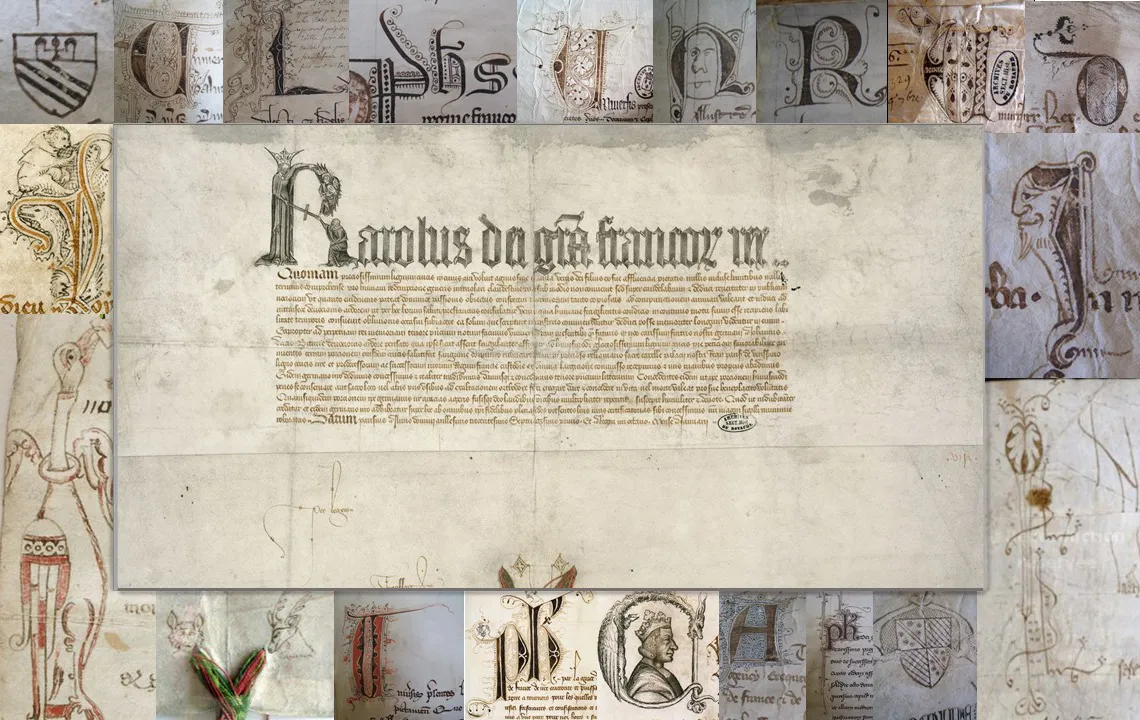
Data base for the research of medieval French charters featuring decoration.
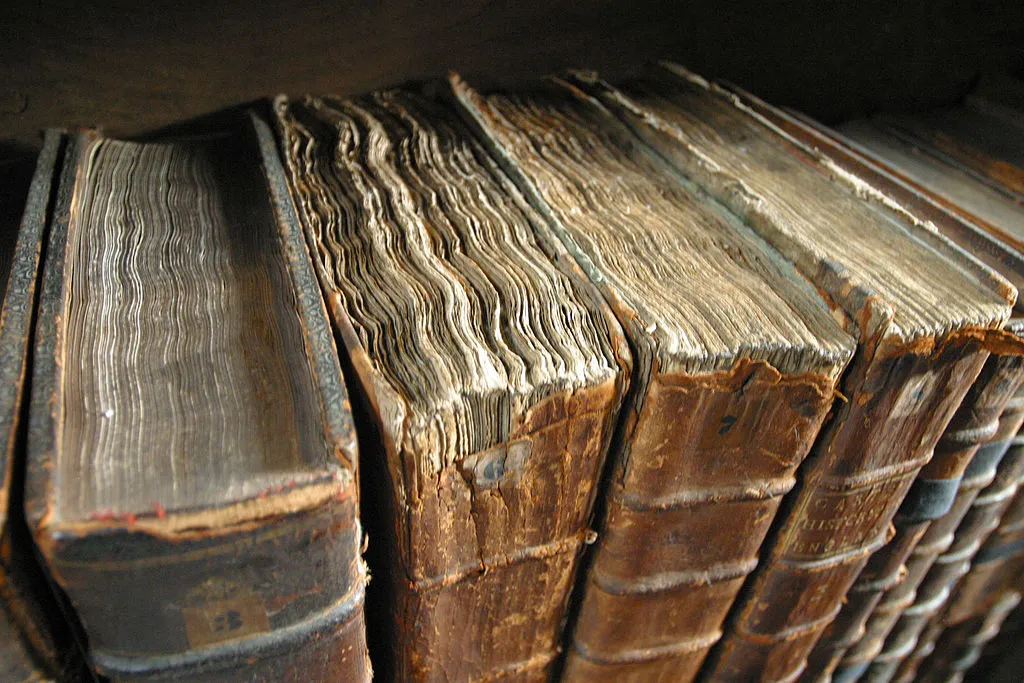
Eine Pilotstudie zu den Möglichkeiten und Grenzen der systematischen Auswertung von Inventaren am Beispiel der Landgerichte Stubai und Steinach.
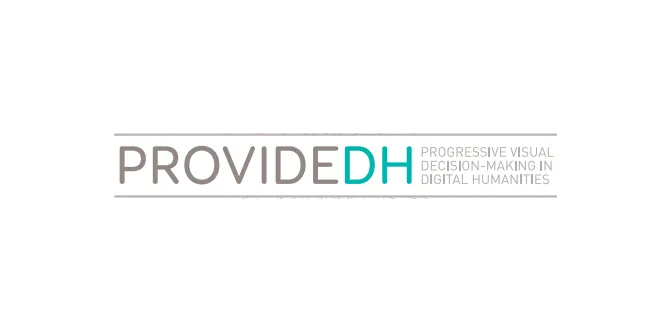
PROVIDEDH analyzes how progressive visualization can contribute to decision-making in the humanities against the background of open innovation.
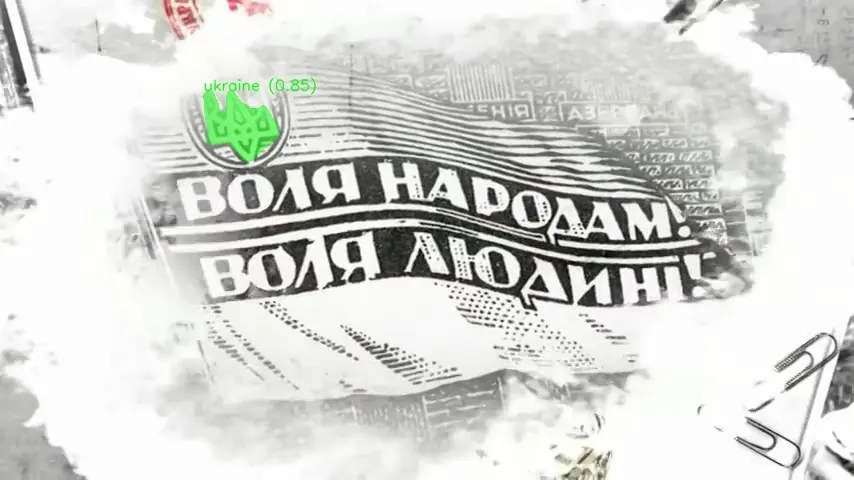
A Deep Learning Approach for visual propaganda discourses from Eastern Europe

The project aims to investigate the feasibility of an RDF-based graph model of a Historical-Critical Edition.
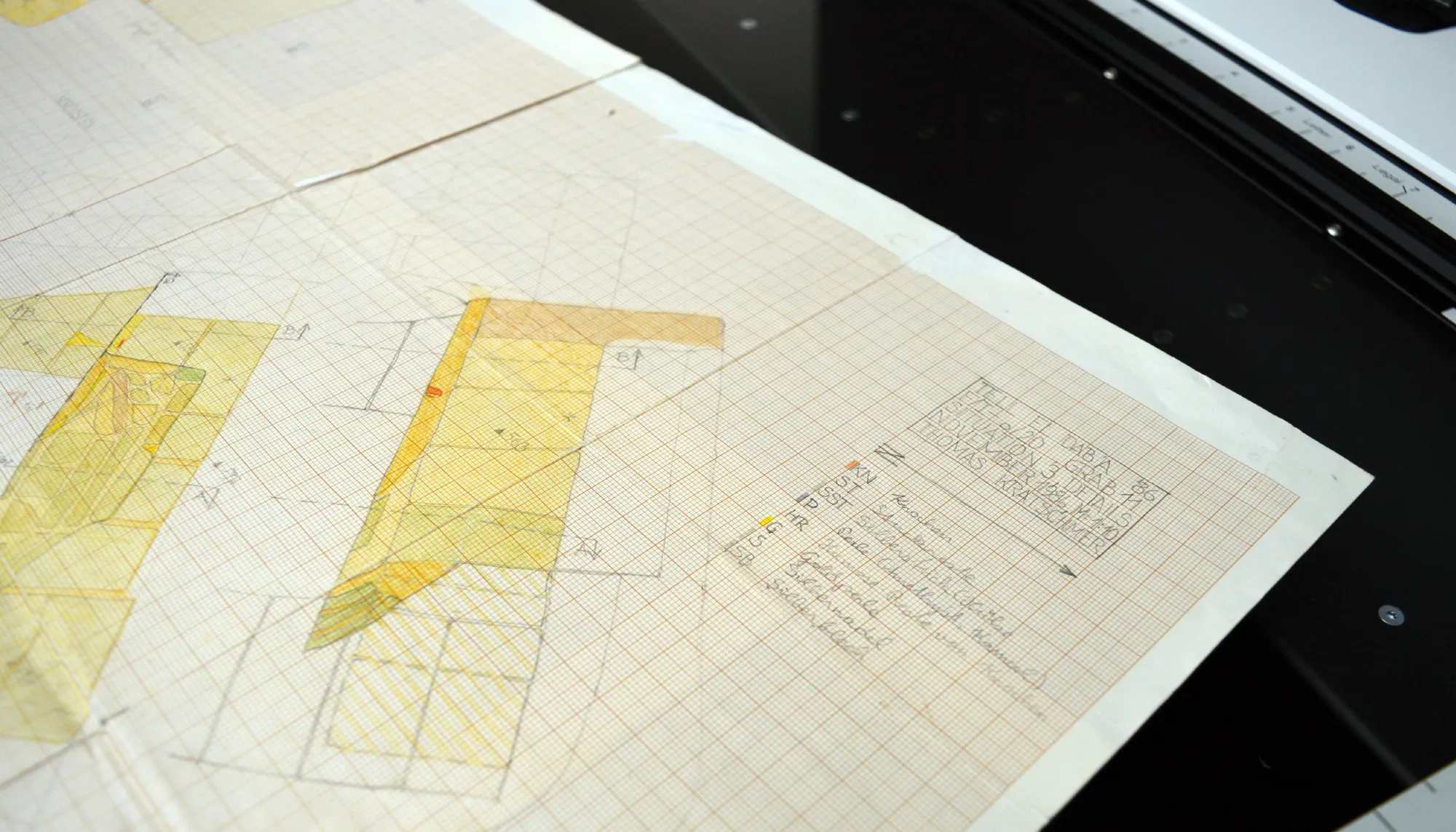
Project on integration of heterogeneous and incomplete digital and non-digital records of archaeological long-term excavations to prepare them for spatio-temporal analysis, long-term archiving based on standards and open-access online publication.
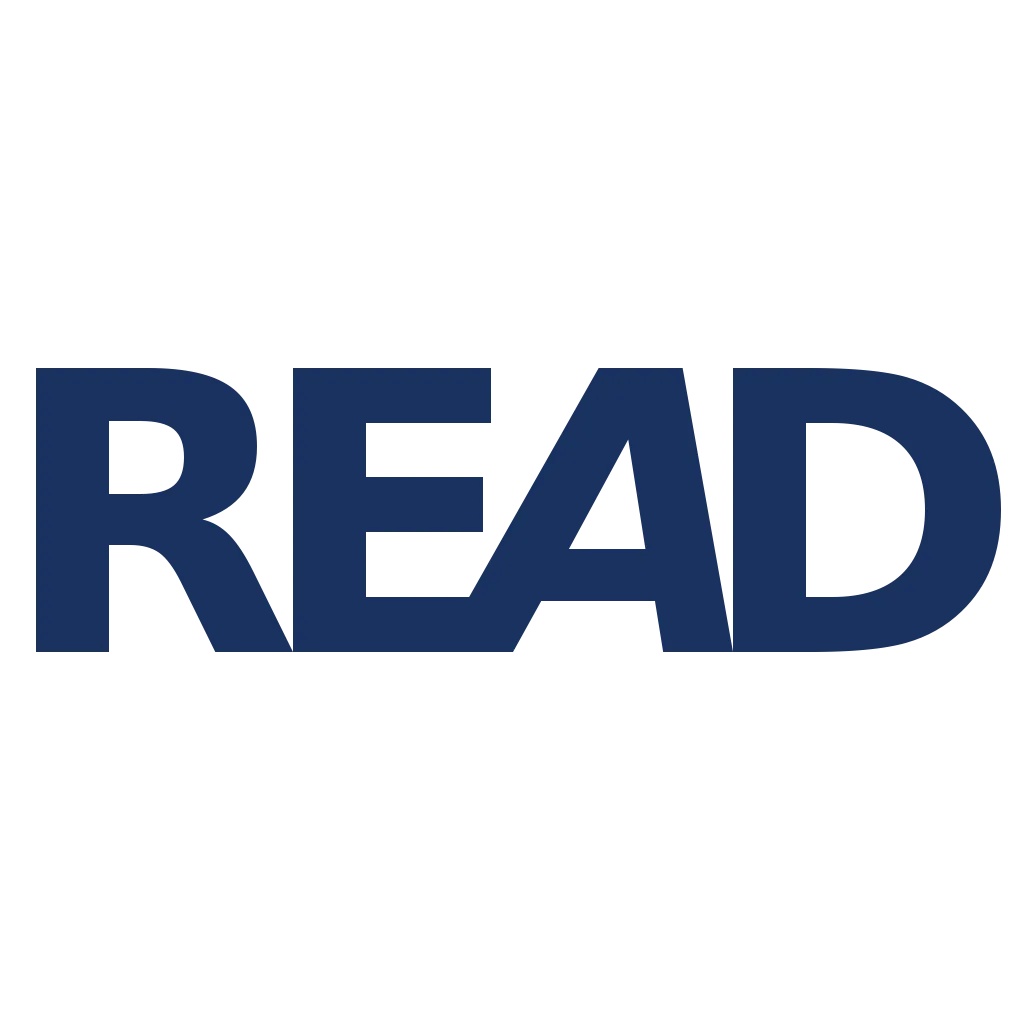
Recognition and Enrichment of Archival Documents
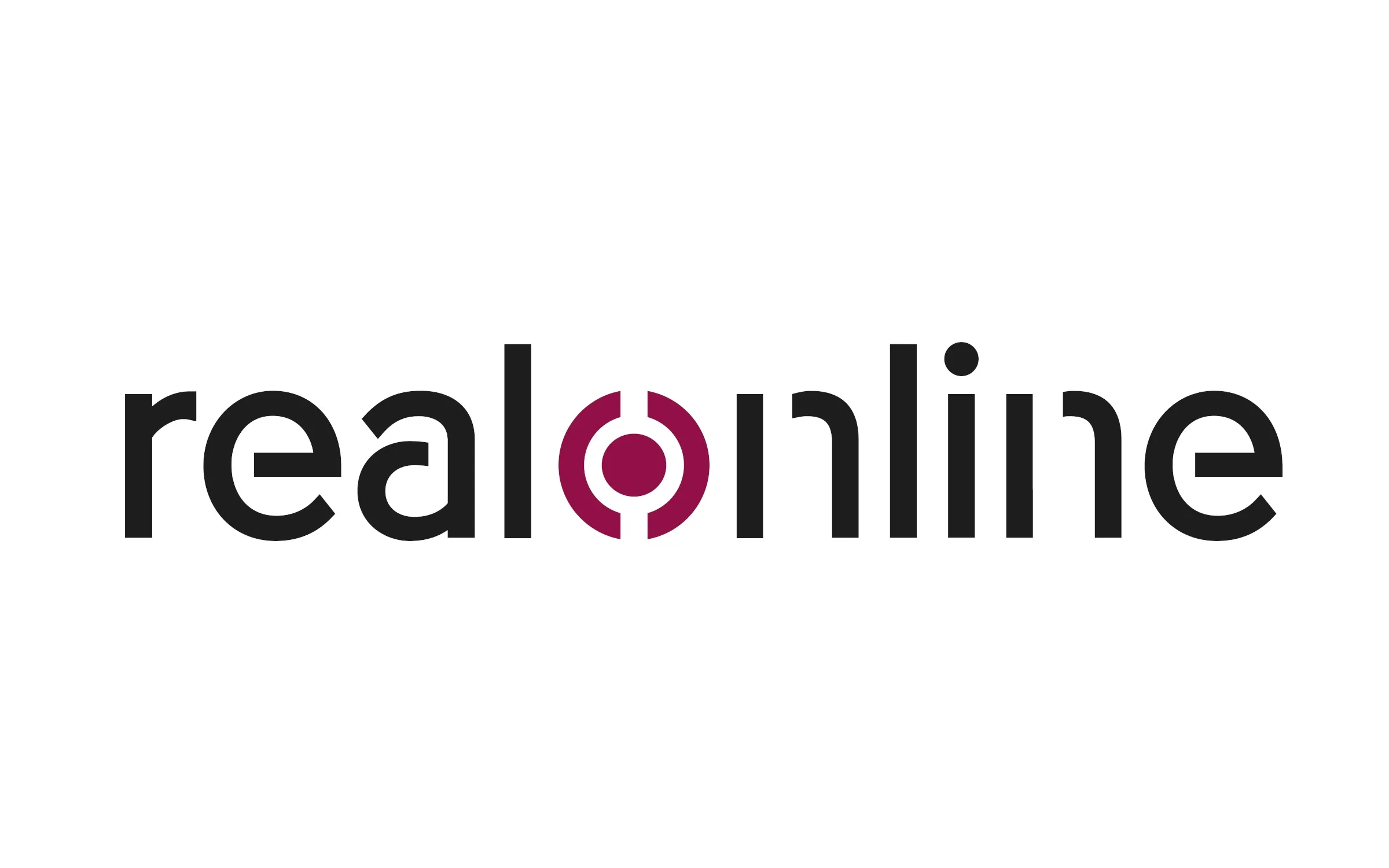
The image database REALonline makes the visual cultural heritage of Austria and the Central European regions available via the Internet with all its details. It forms the basis for research into historical images using digital methods.
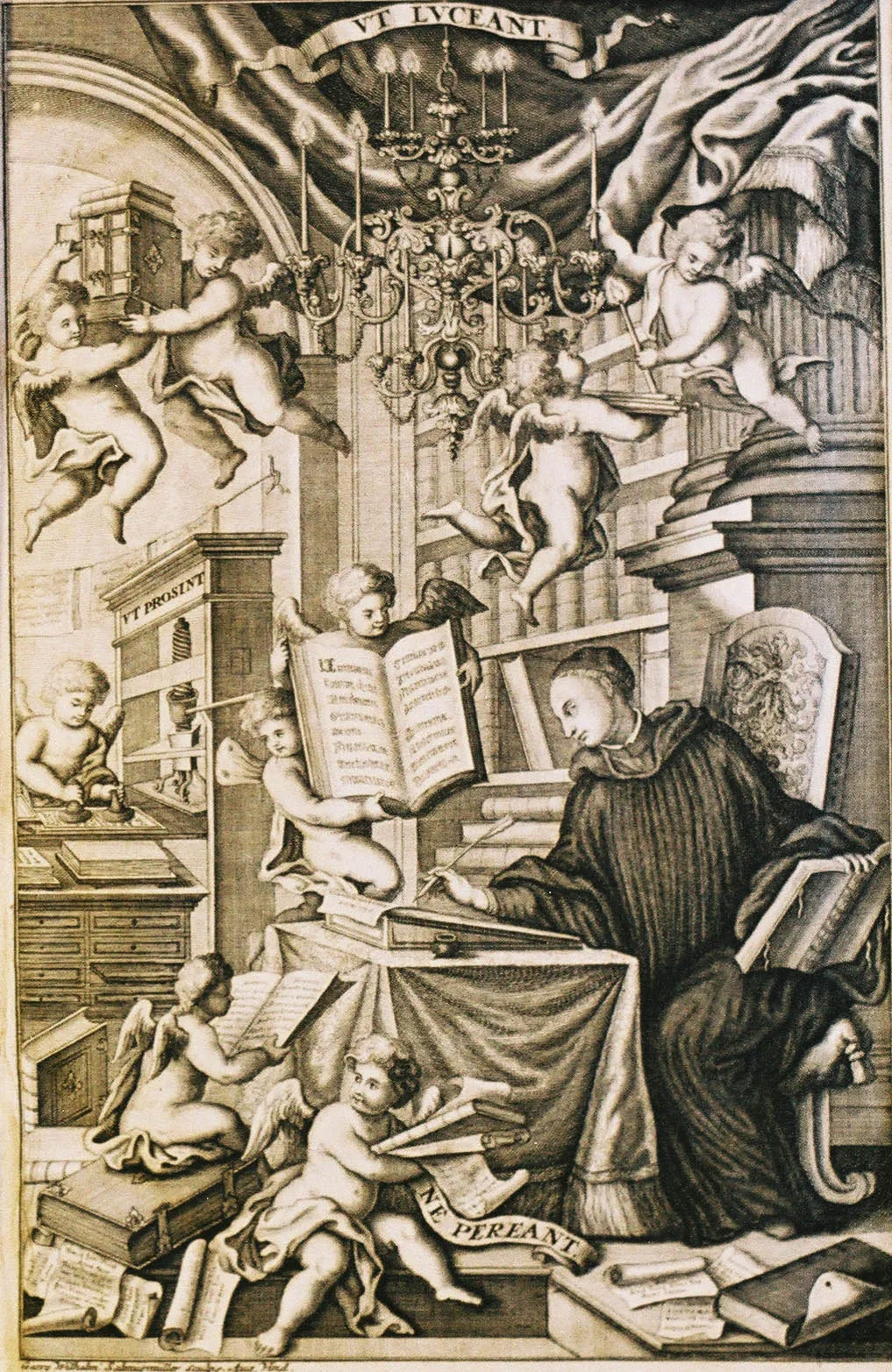
'Reassembling the Republic of Letters' is an EU-funded COST action which will bring together scholars, librarians, IT and Digital Humanities experts.
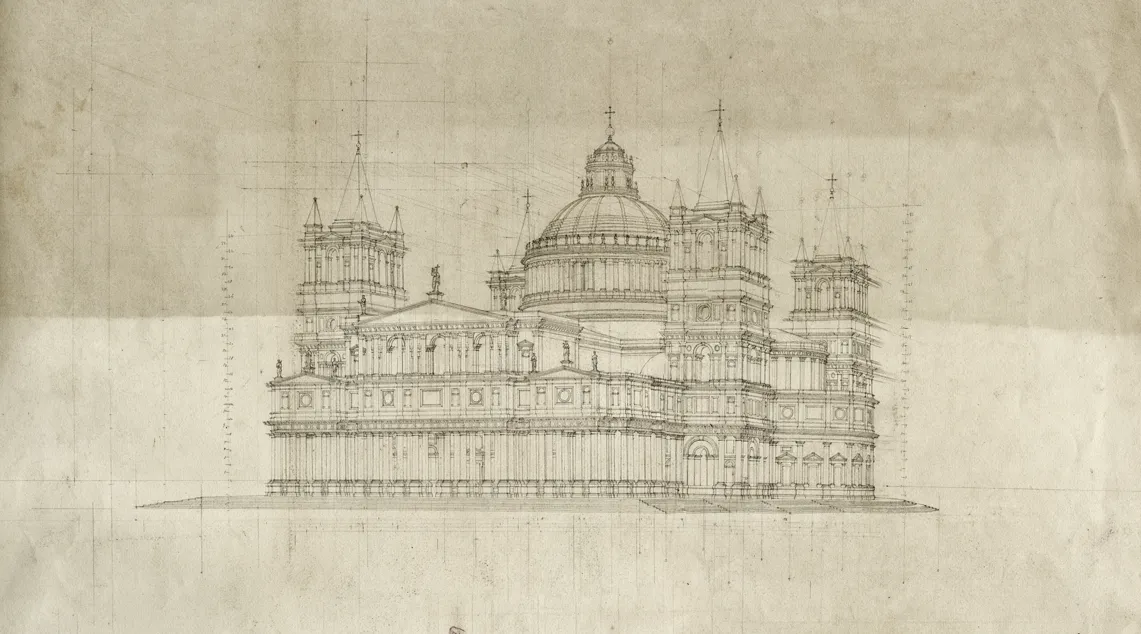
Renaissance Architecture - A Digital Anthology of Heinrich von Geymüller

The Project explores media reporting on automation (robotics, algorithms, artificial intelligence). Using a combination of manual and automated content analysis it investigates the representation of risks and responsibility in the automation debate
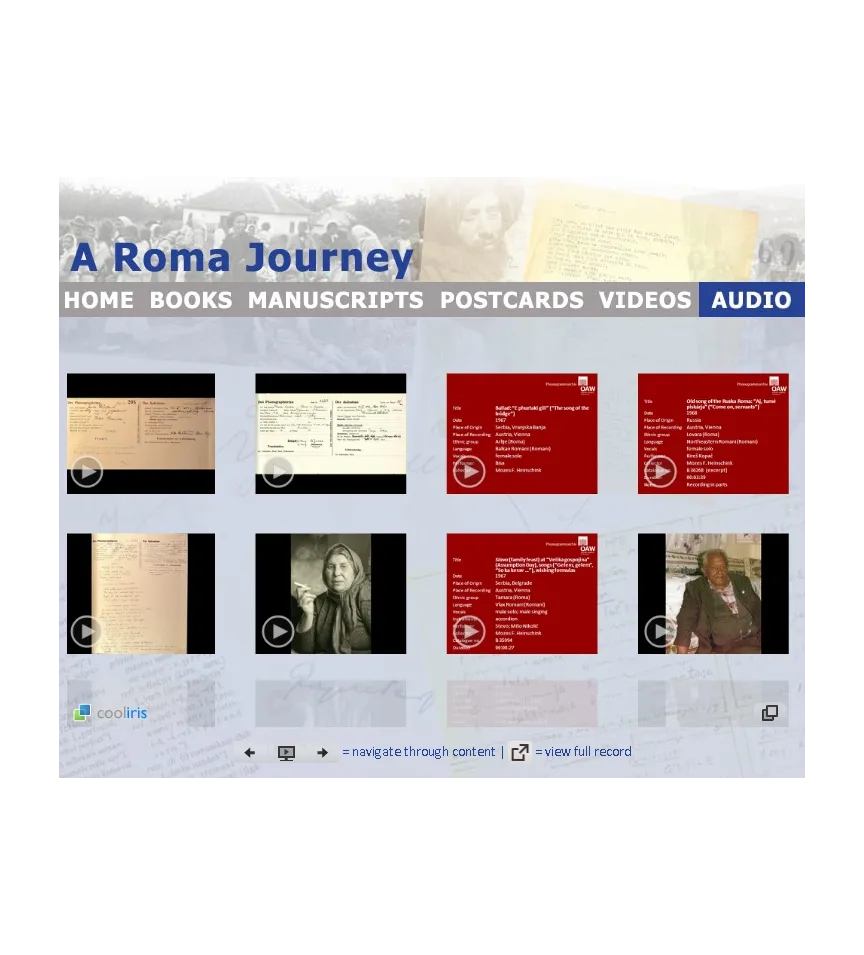
With a selection of its extensive holdings featuring European Romani culture the Phonogrammarchiv contributed to the web exhibition "A Roma Journey".

SARIT lets you read and search Indic texts.

A resource plattform and reference resource on Karl Kraus.

A freely available, adaptable tool chain for creating dictionaries and applying sentiment analysis methods to historical literary texts.
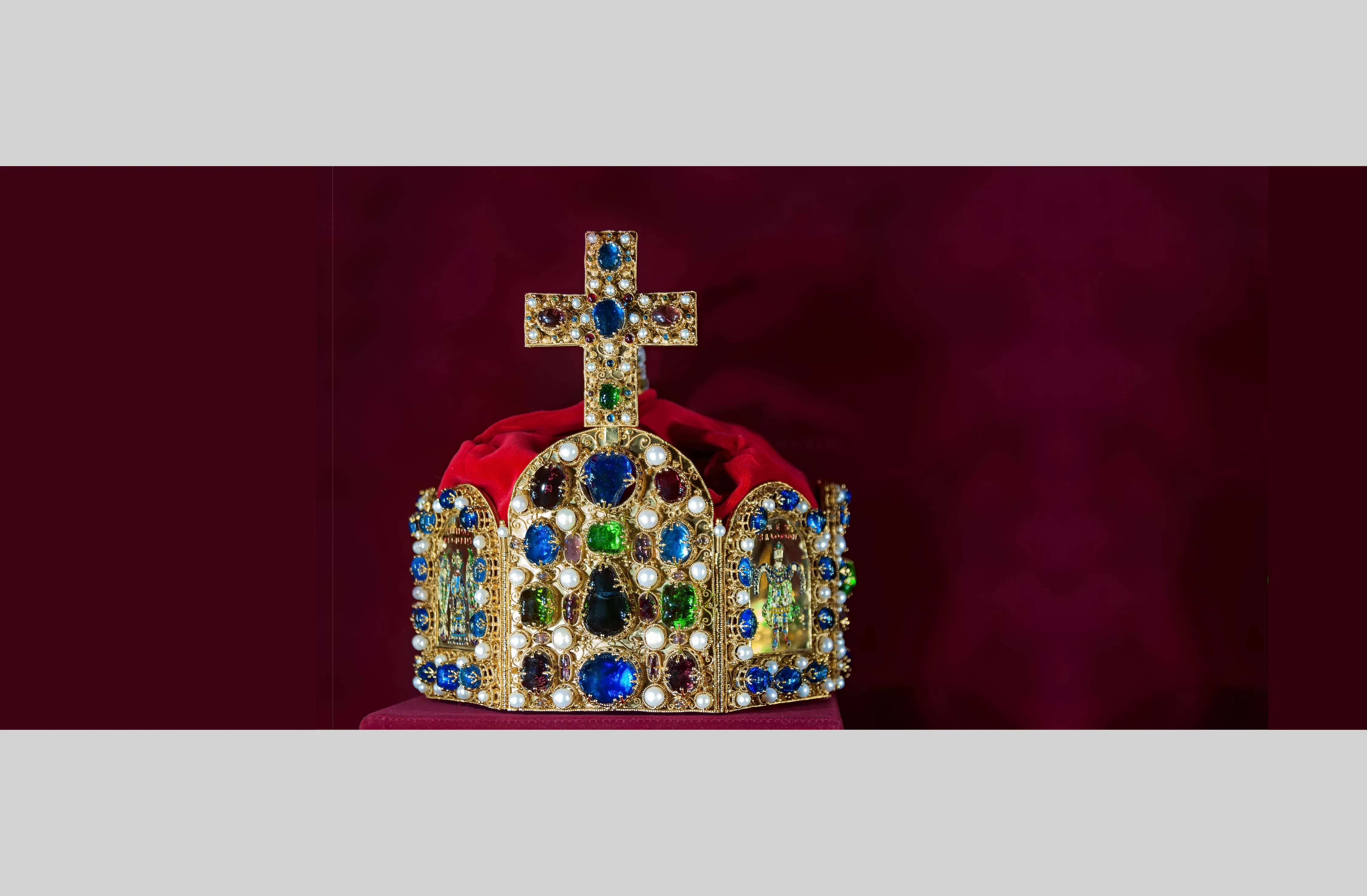
The CROWN project, initiated by the KHM in Vienna, focuses on a comprehensive analysis of the Imperial Crown of the Holy Roman Empire, involving interdisciplinary research on its various components using The Museum System (TMS).
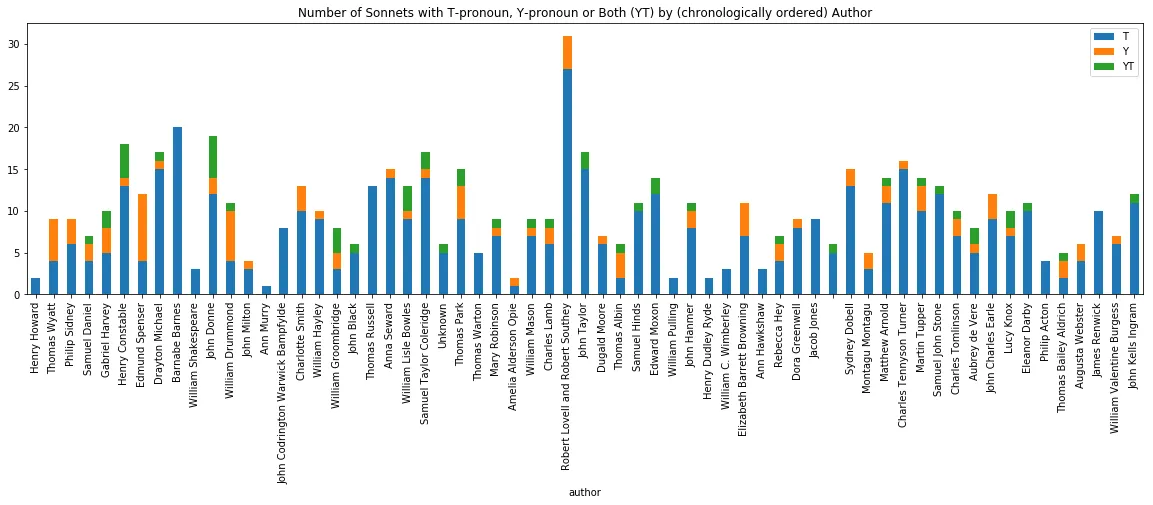
The project tracks patterns of usage for 'you' and 'thou' in the English sonnet until 1910 with the aim of describing semantic differences in its usage.
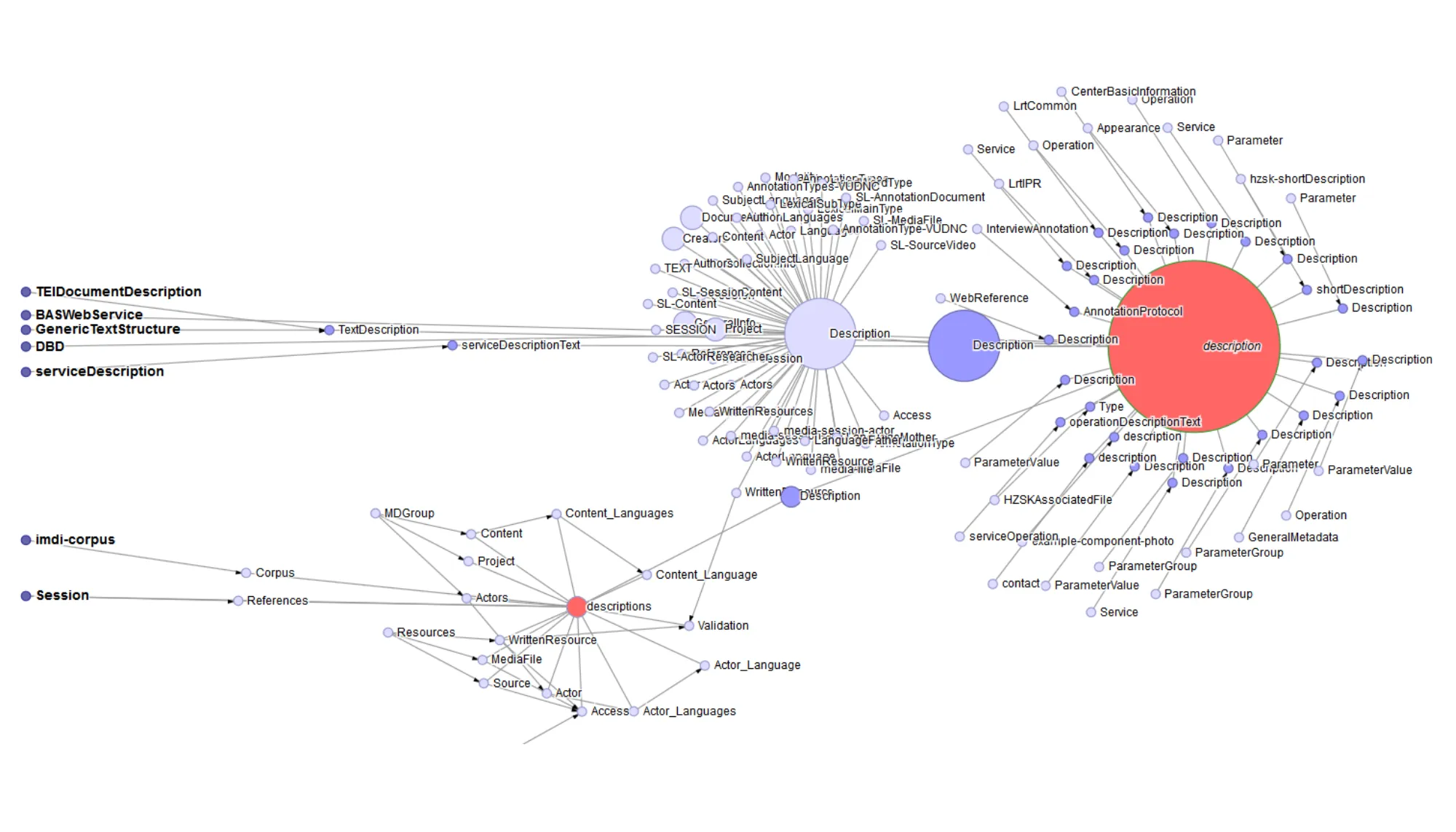
SMC-Browser is a web application developed in the context of CLARIN, which allows to explore the data-space of the Component Metadata Infrastructure.
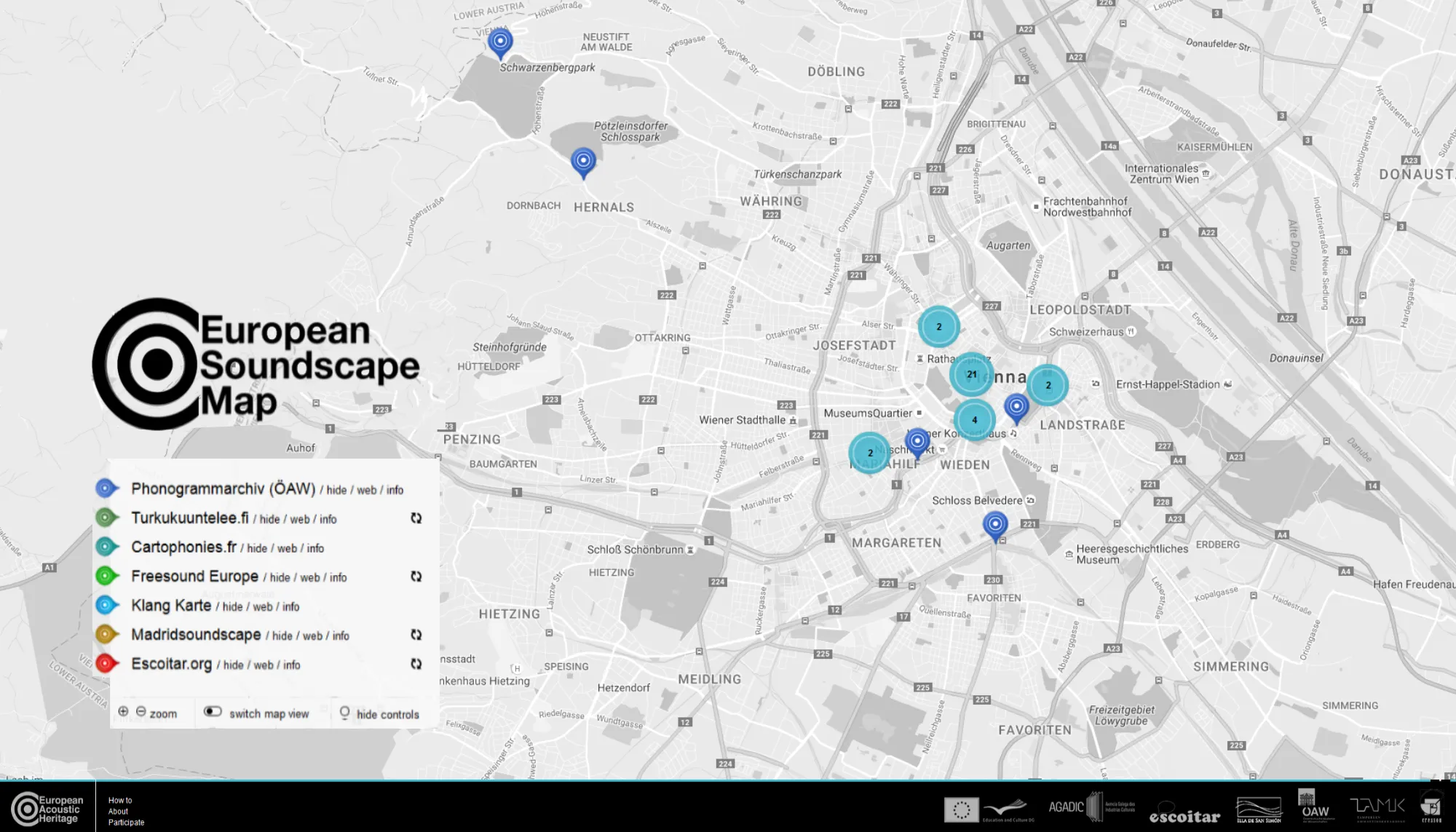
In the project "European Acoustic Heritage" audio recordings of Vienna's urban soundscape were made accessible by the Phonogrammarchiv.

The SFB (FWF F 60) German in Austria deals with the variety and change of the German language in Austria.
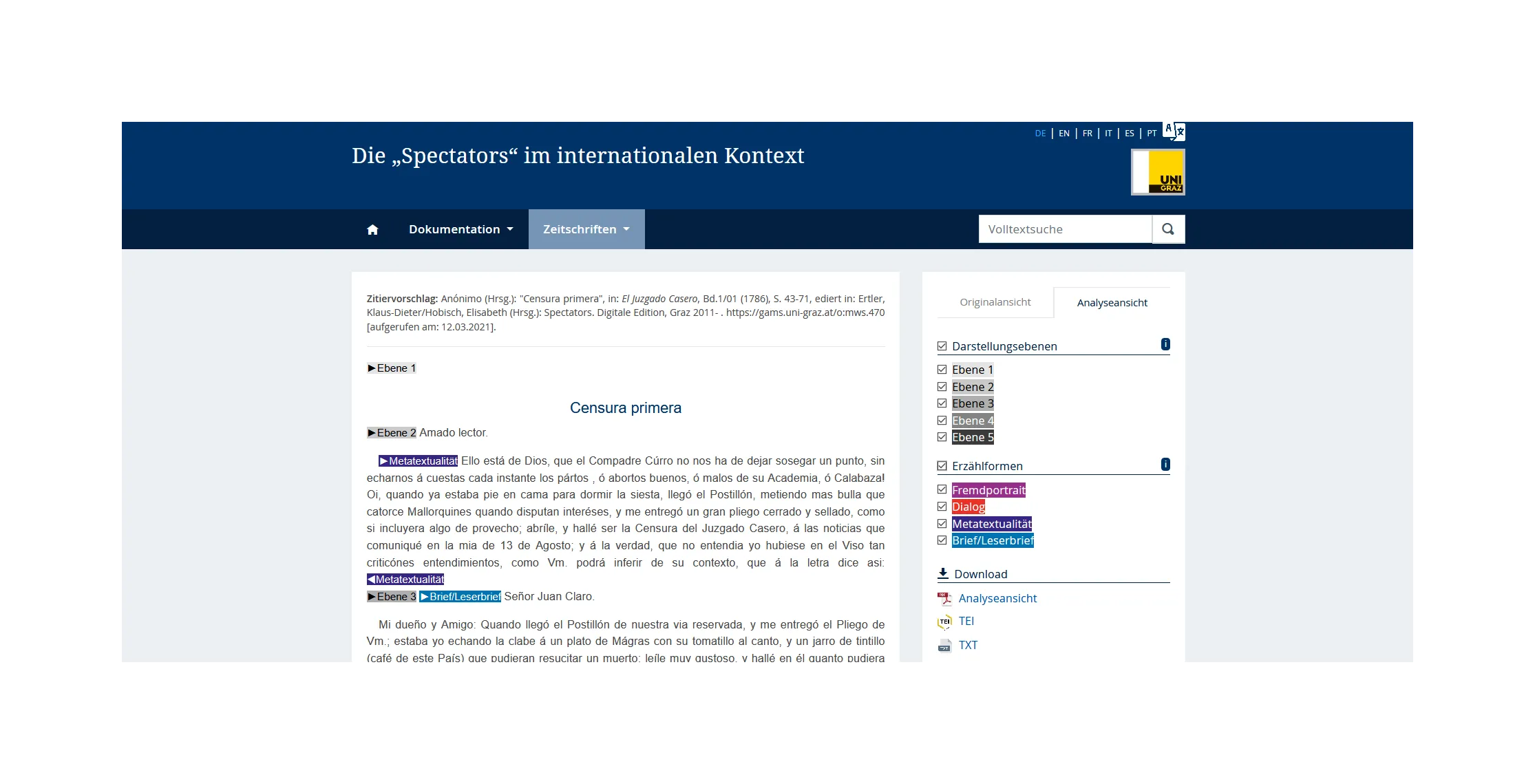
The digital edition of the Spectator periodicals of the 18th century provides insights into the European discourse system of the Enlightenment.
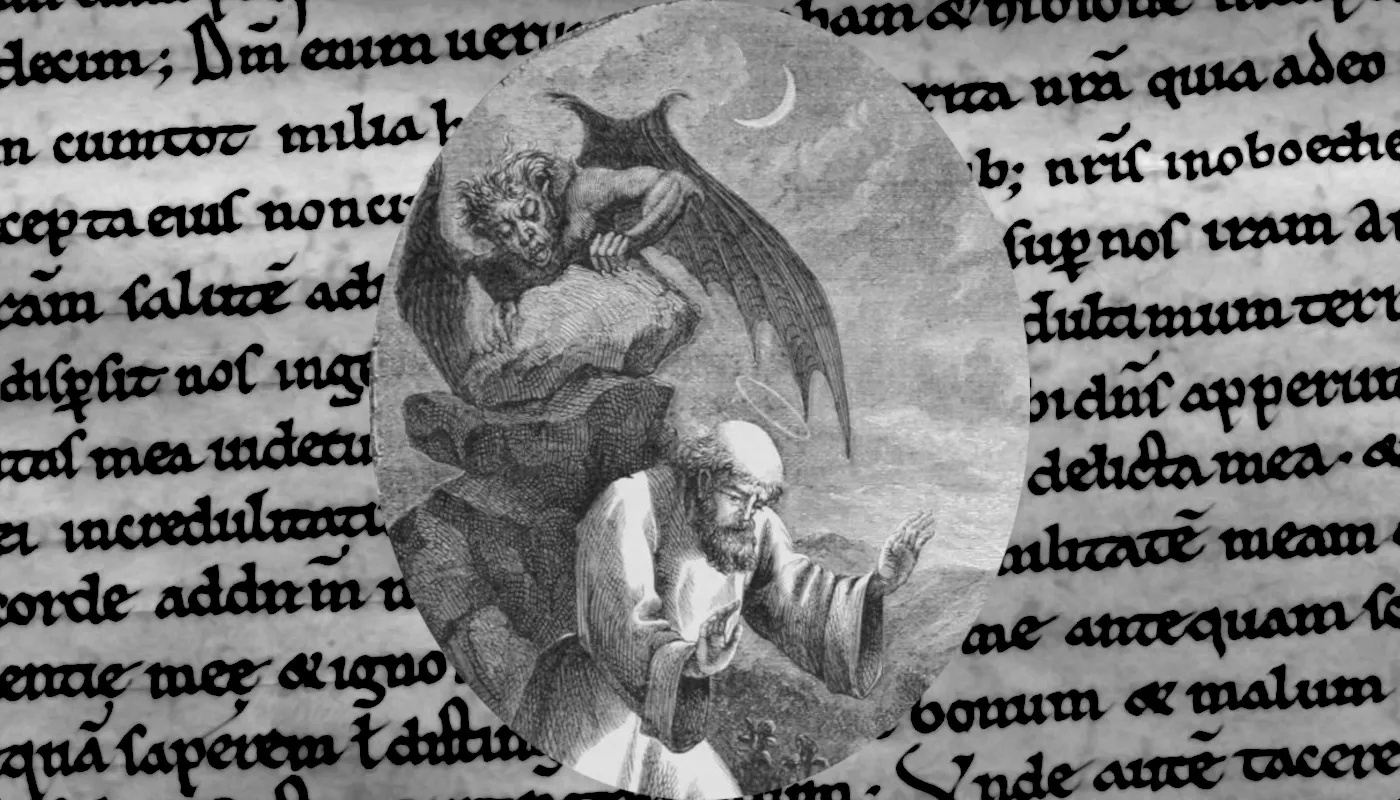
In this digital edition of the two epistles of St Patrick of Ireland transcriptions of the seven medieval manuscript witnesses are published.

The digital scholarly edition Stefan George Digital (StGD)
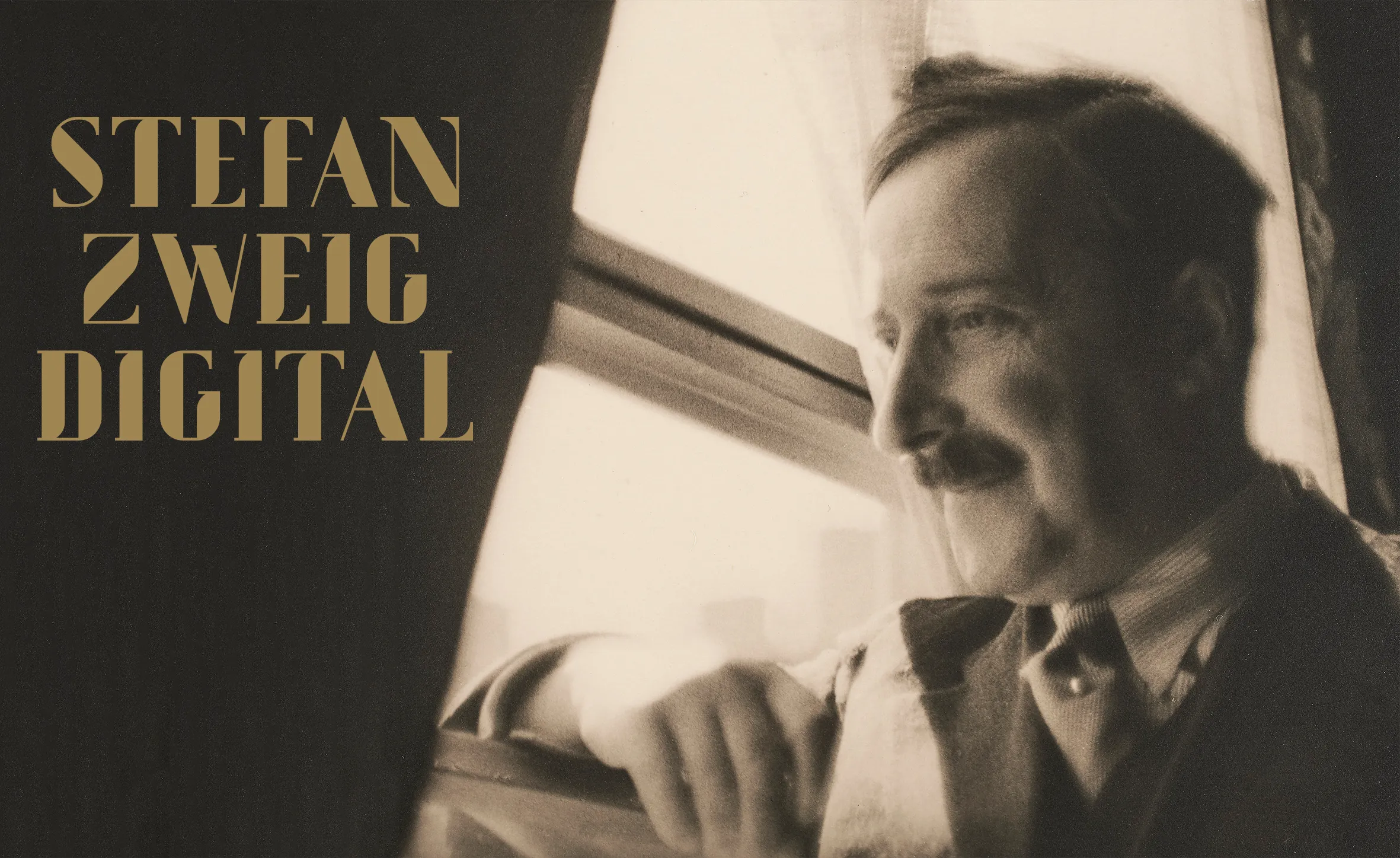
Stefan Zweig digital (SZD) is an information and research portal on the life and work of the Austrian writer Stefan Zweig.
A software for establishing print or e-book editions out of TEI files.
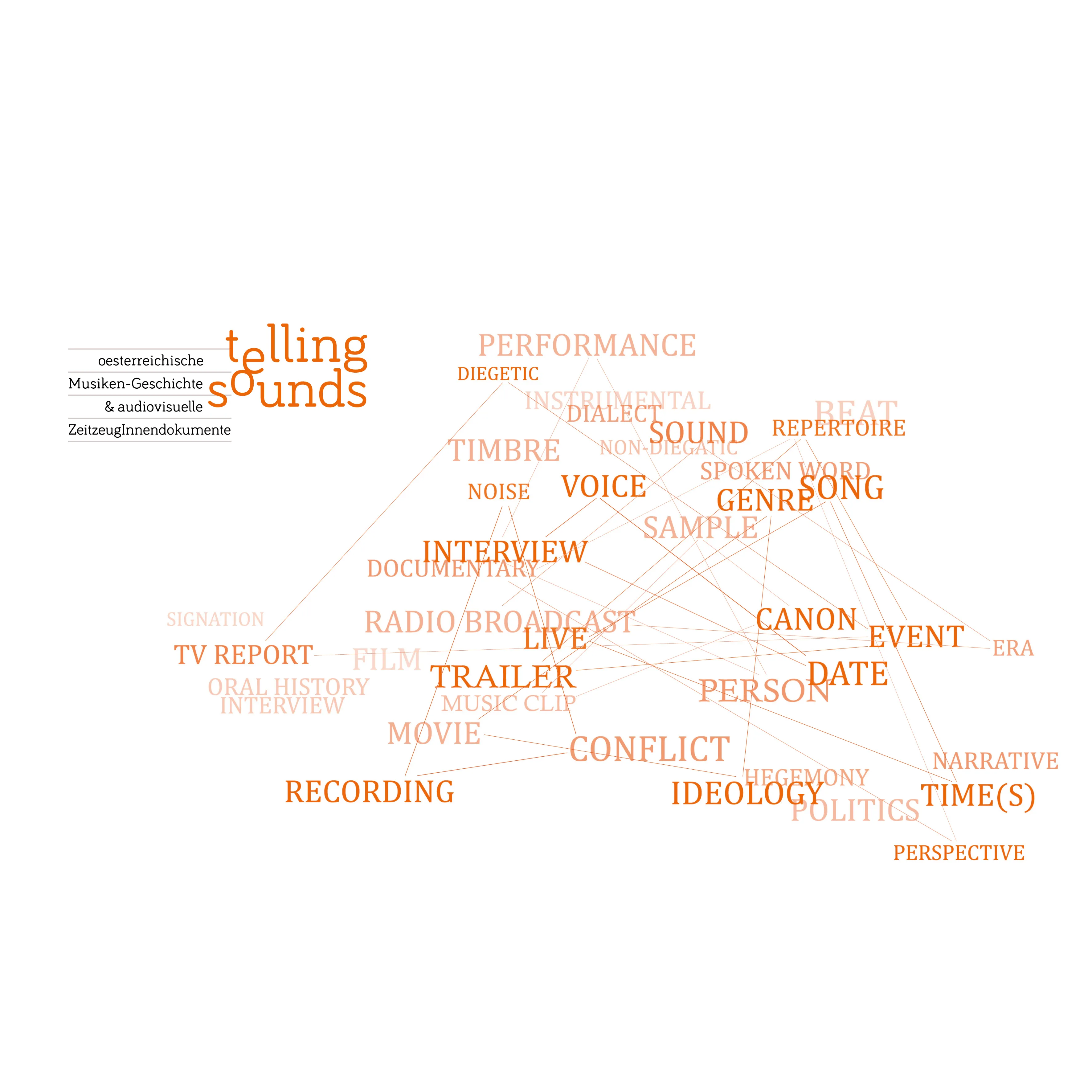
The research project Telling Sounds deals with the importance of audio-visual documents for new approaches in the field of musicology.
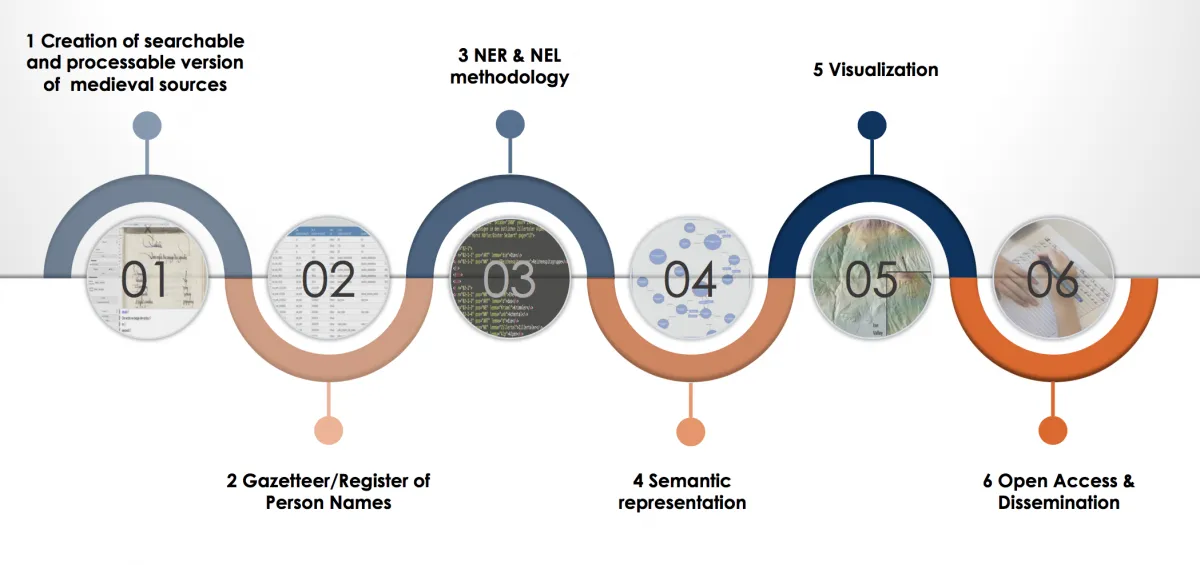
The project "Text Mining Medieval Mining Texts" (T.M.M.M.T.) digitizes and processes two medieval mining sources (15th and 16th century) of the regions Schwaz and Rattenberg-Brixlegg in Tyrol, Austria. One of the two sources is unedited while the oth
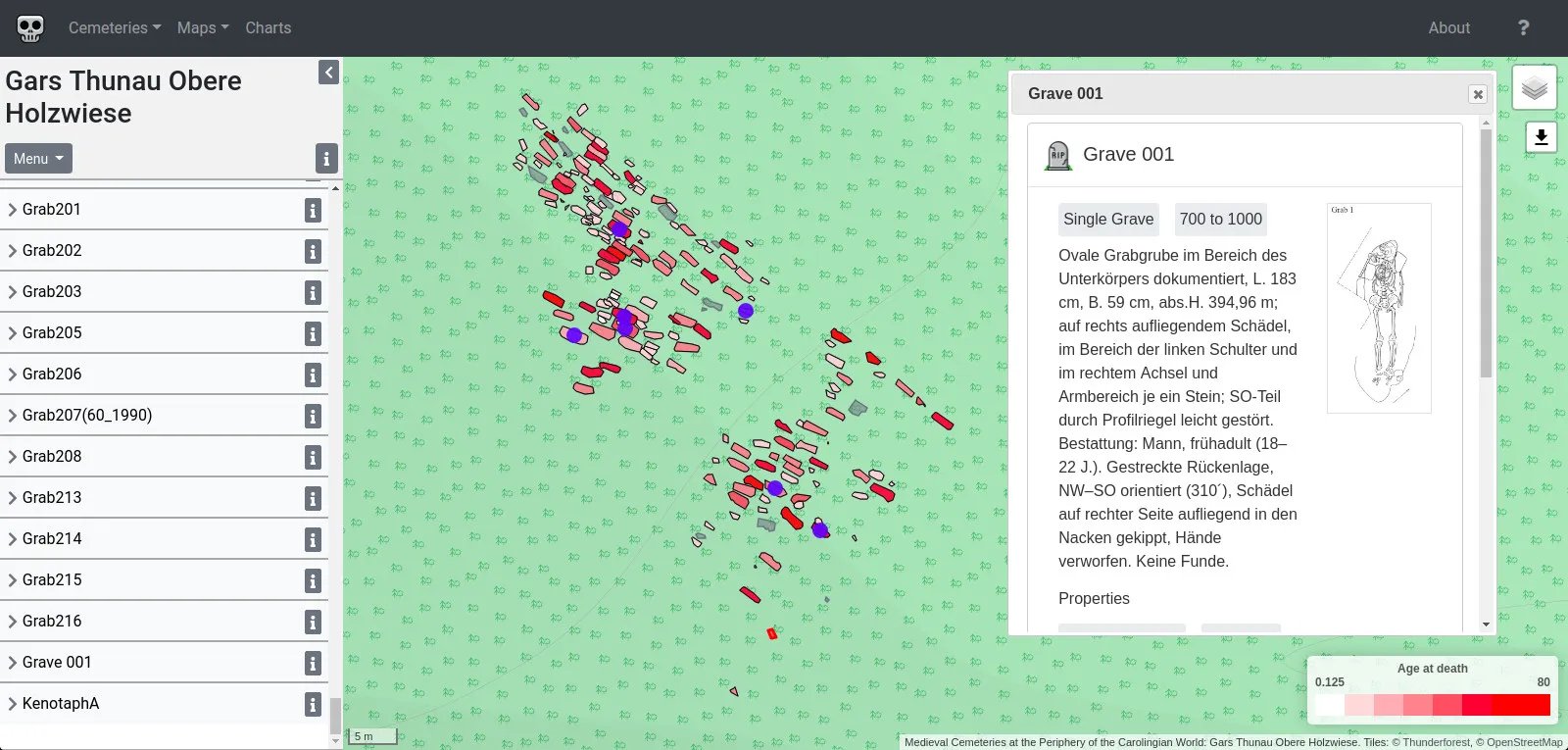
Within the project all published Early Medieval burial sites in Austria will be digitised and provided as an Open Data repository. A web-application will allow for interactive exploration, visualisation and export of the data.

Online Archive for Citizen Scientists in local units
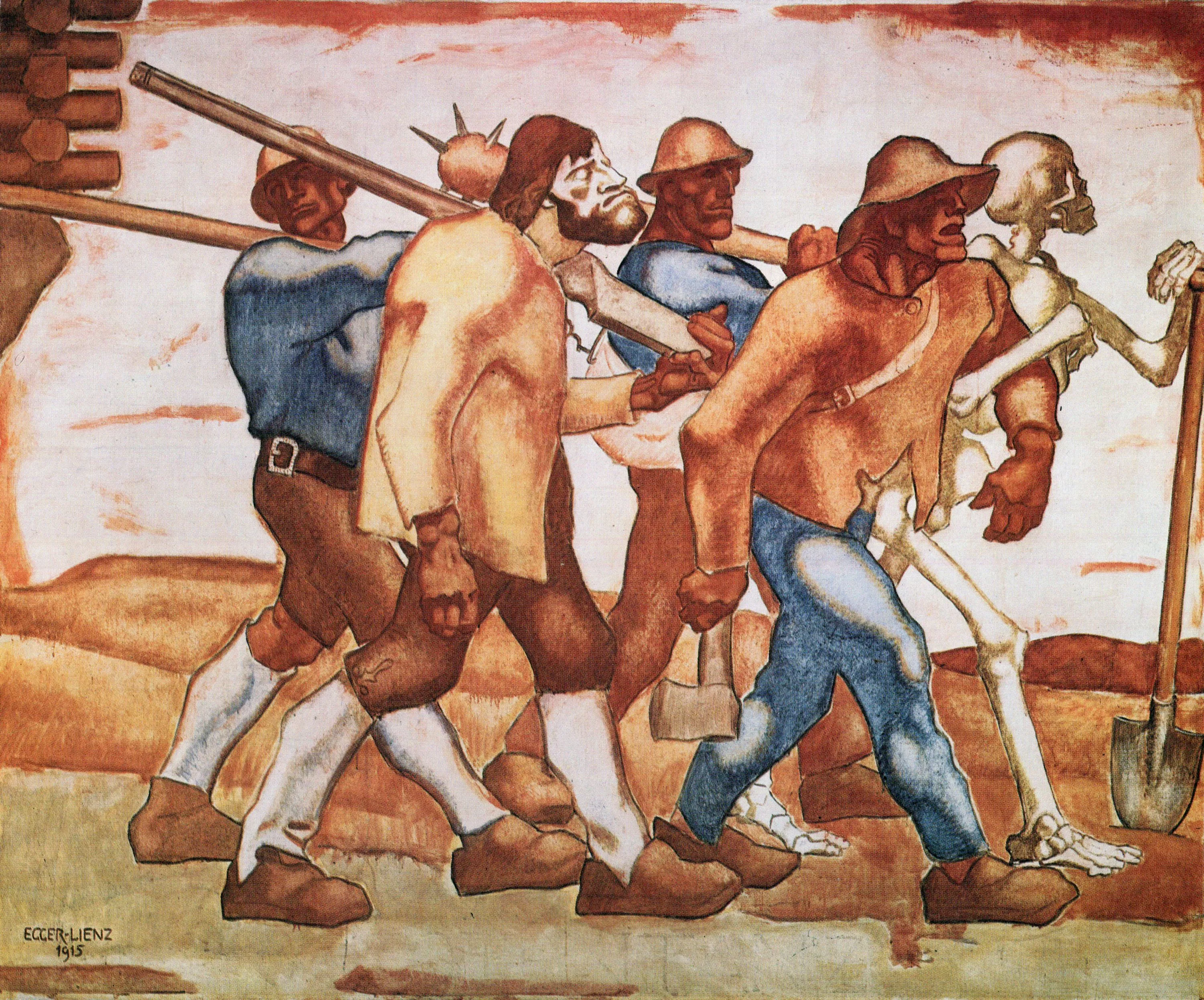
Die Gefallenen des Tiroler Aufstandes von 1809, erfasst in einer online-Datenbank

Transkribus is a comprehensive Transcription and Recognition Platform (TRP) consisting of an expert tool (Transkribus), a web interface and dedicated cloud-based services.

Focusing on a rarely investigated genre, the project conceptualizes a semantic data model for investigating cultural discourses in historical travel guides.
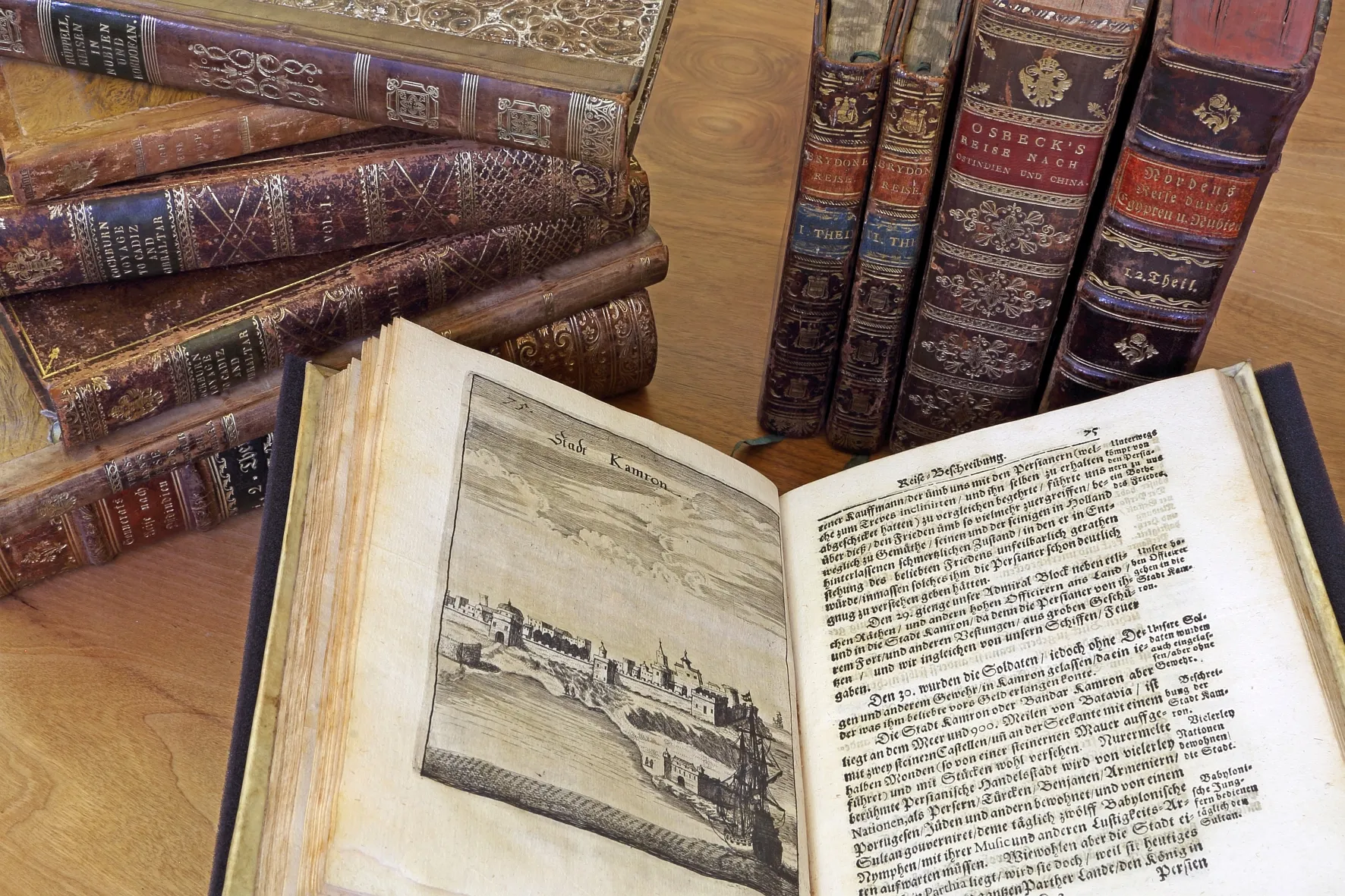
This interdisciplinary and international project focuses on German language travelogues in the collections of the Austrian National Library, covering the period from 1500 to 1876.
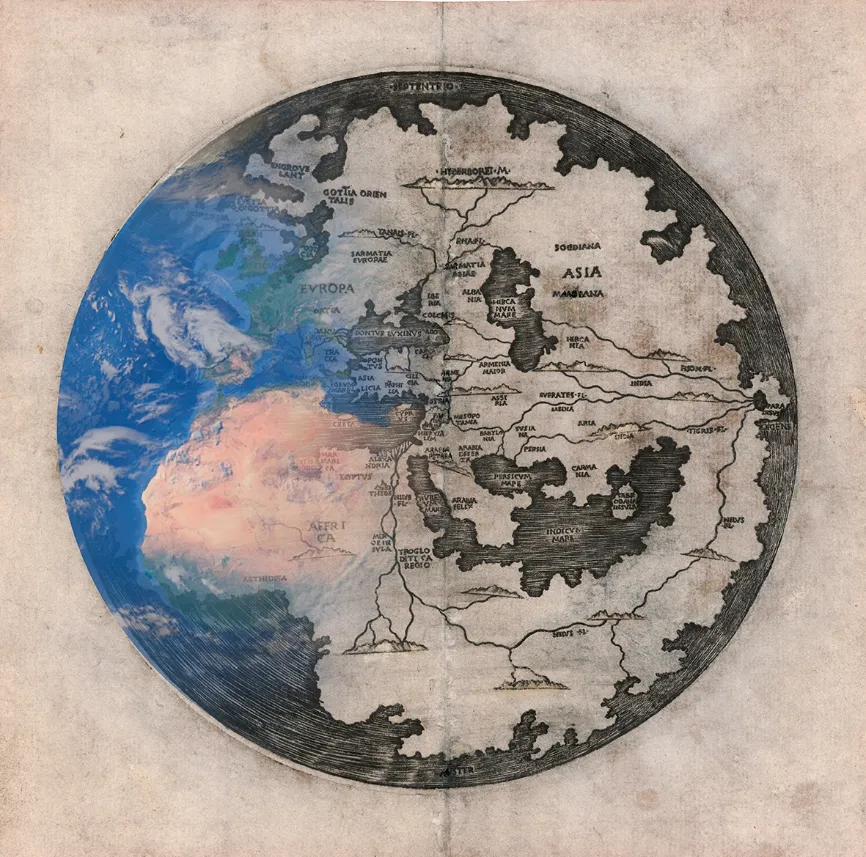
The overall objective is the representation of a cultural heritage collection as geodata in a historical-GIS. This enables a spatial-temporal access on a very detailed and specific level and makes previously hidden content searchable.
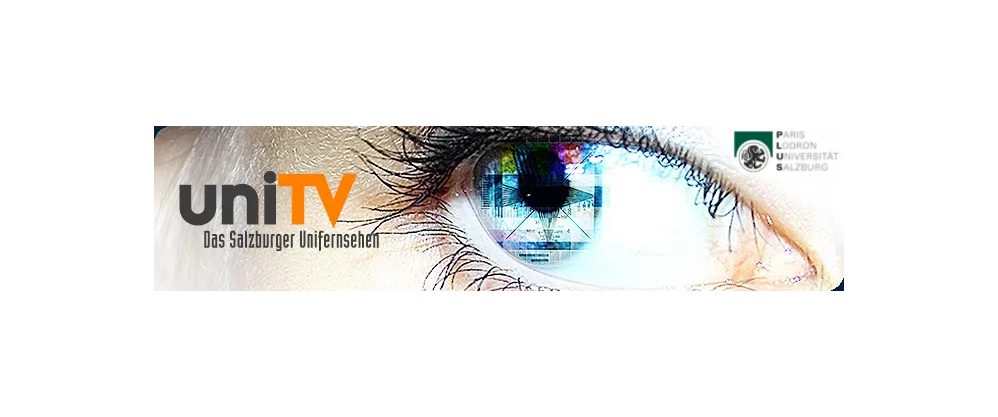
UniTV Salzburg is the scientific video-on-demand project of the University of Salzburg existing since 2004. The main task of UniTV Salzburg is the publication of outstanding scientific events at the University of Salzburg.
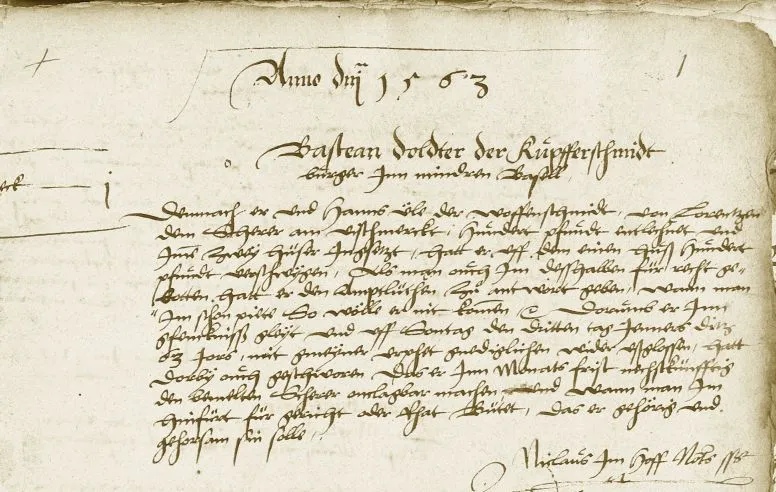
The digital edition of the Basler Urfehdebuch X from 1563 to 1569 represents a legal-historic source.
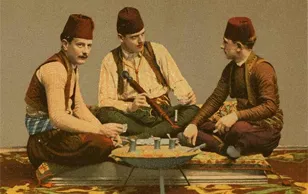
The Visual Archive South Eastern Europe of the Institute for Southeast European History collects and analyses photographs and postcards from the Balkans (1860-1950).
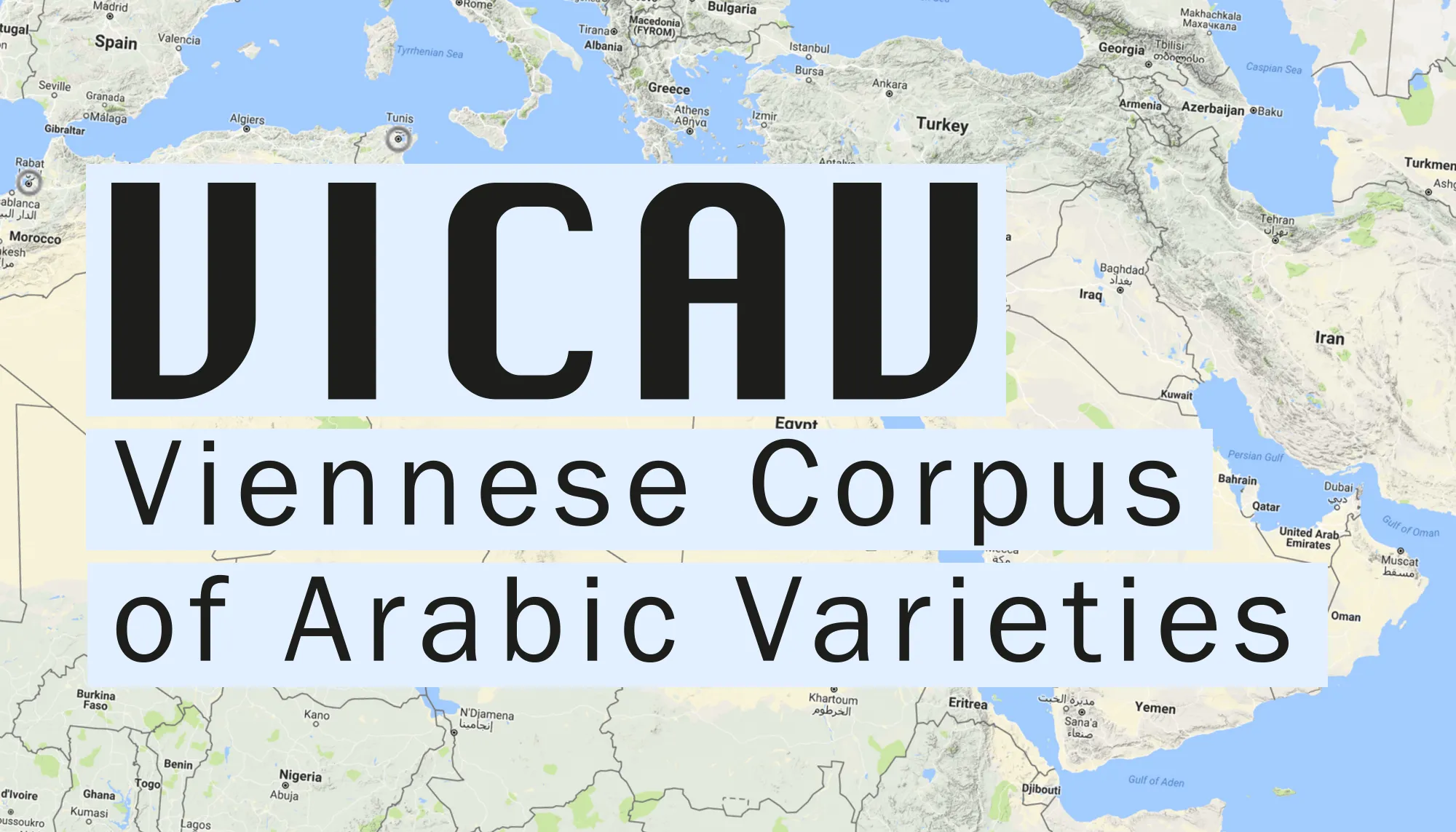
The Vienna Corpus of Arabic Varieties is a collection of materials documenting a wide range of spoken varieties of Arabic.
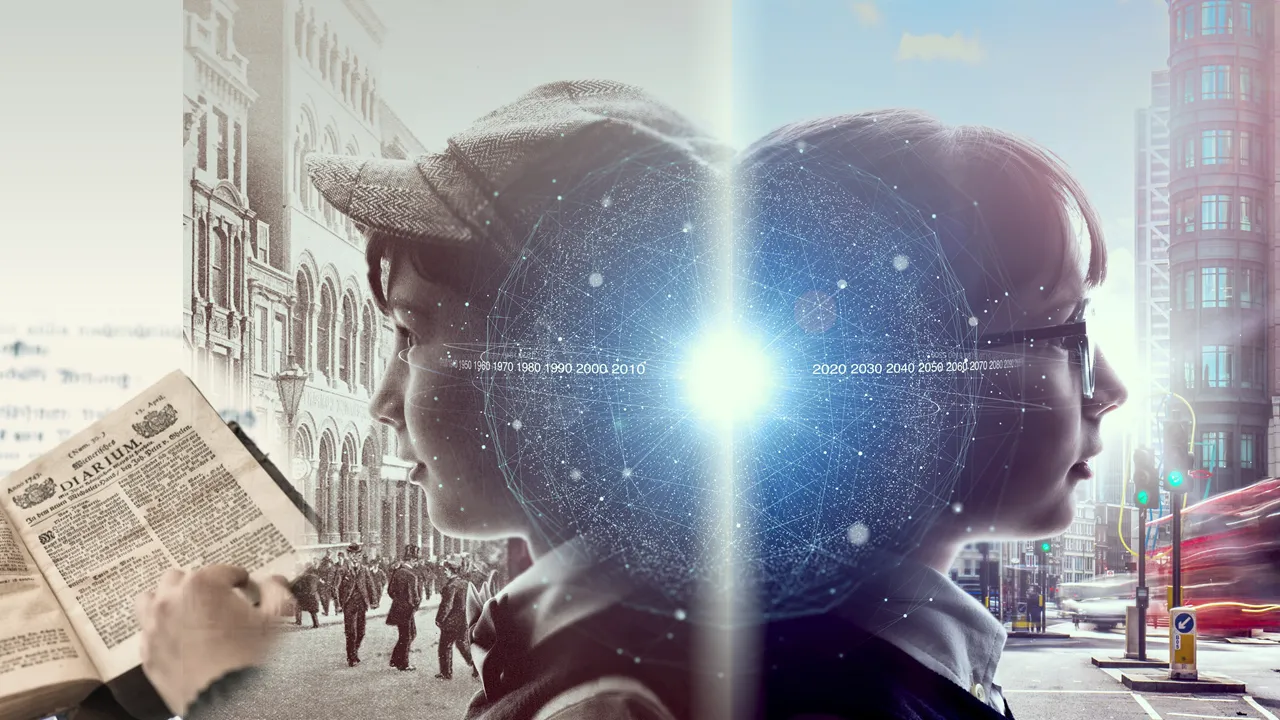
Corresponding digital data treasures and knowledge resources (Wienerisches DIGITARIUM & Wien Geschichte WIKI)

'Visually Reading the Pandemic' is a transnational project of exploration space with the Ars Electronica Research Institute 'knowledge for humanity', metalab (at) Harvard (US), MIT (US) and the company NAMSOR (FR) exploring COVID19 related datasets.
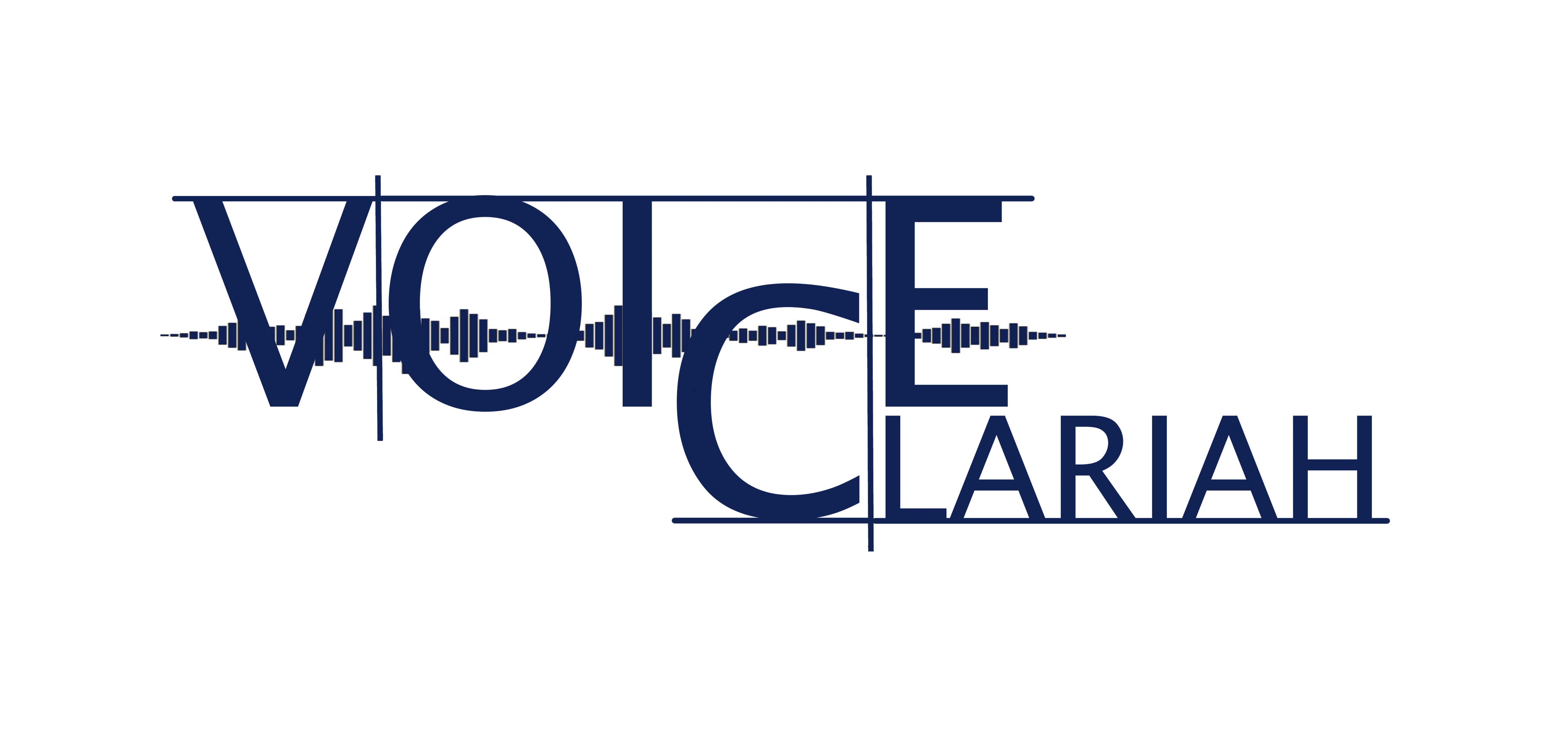
The project integrates the Vienna-Oxford International Corpus of English into CLARIAH-AT and builds a new, enhanced web interface for VOICE Online to provide continued open access to this English as a lingua franca (ELF) corpus.

Open Access Publication of the complete research data of an archaeological project on pottery in Upper Egypt through the »Levantine Ceramics Project« and long term archiving in ARCHE
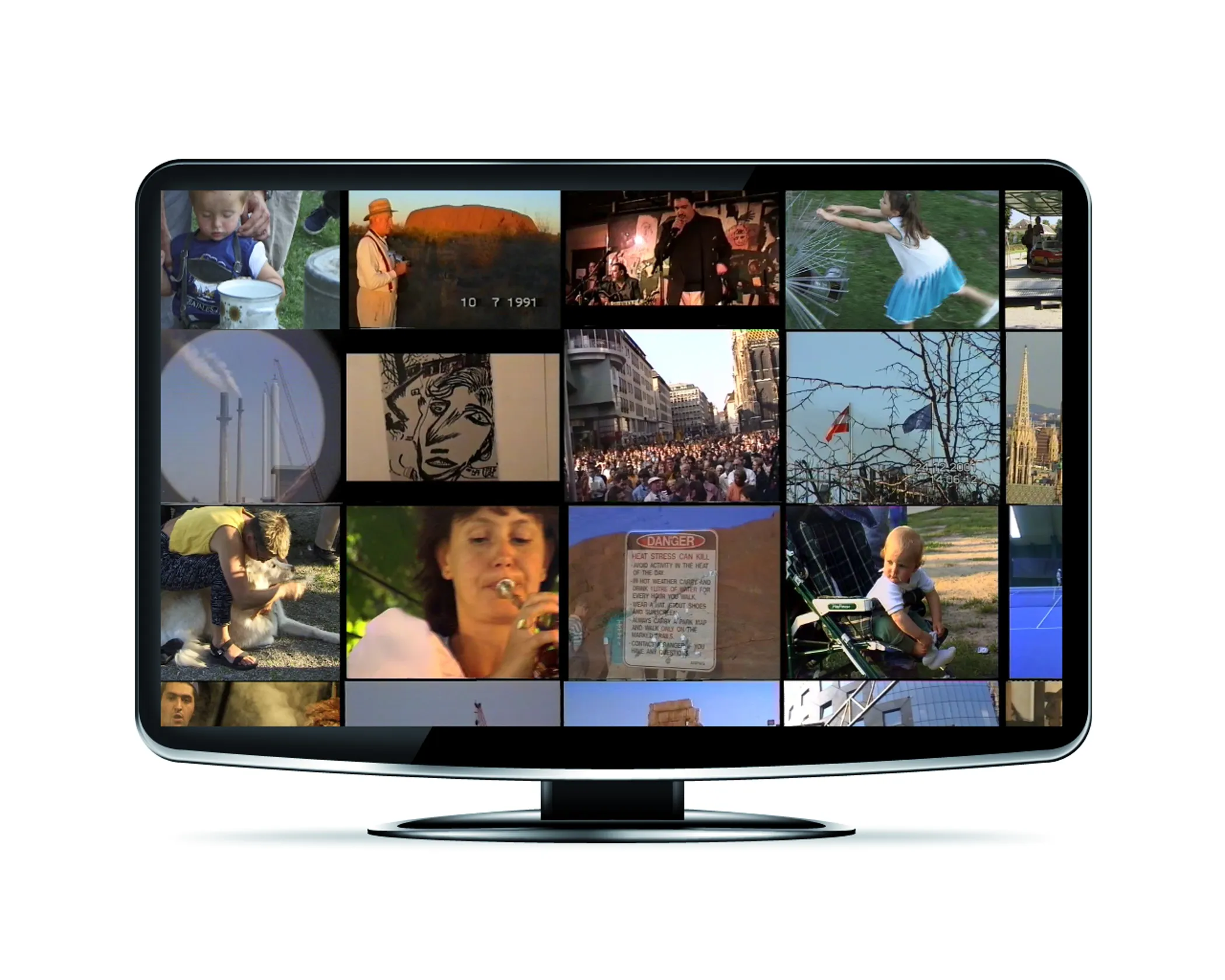
A collection of private everyday videorecordings from the 1980s and the 1990s.
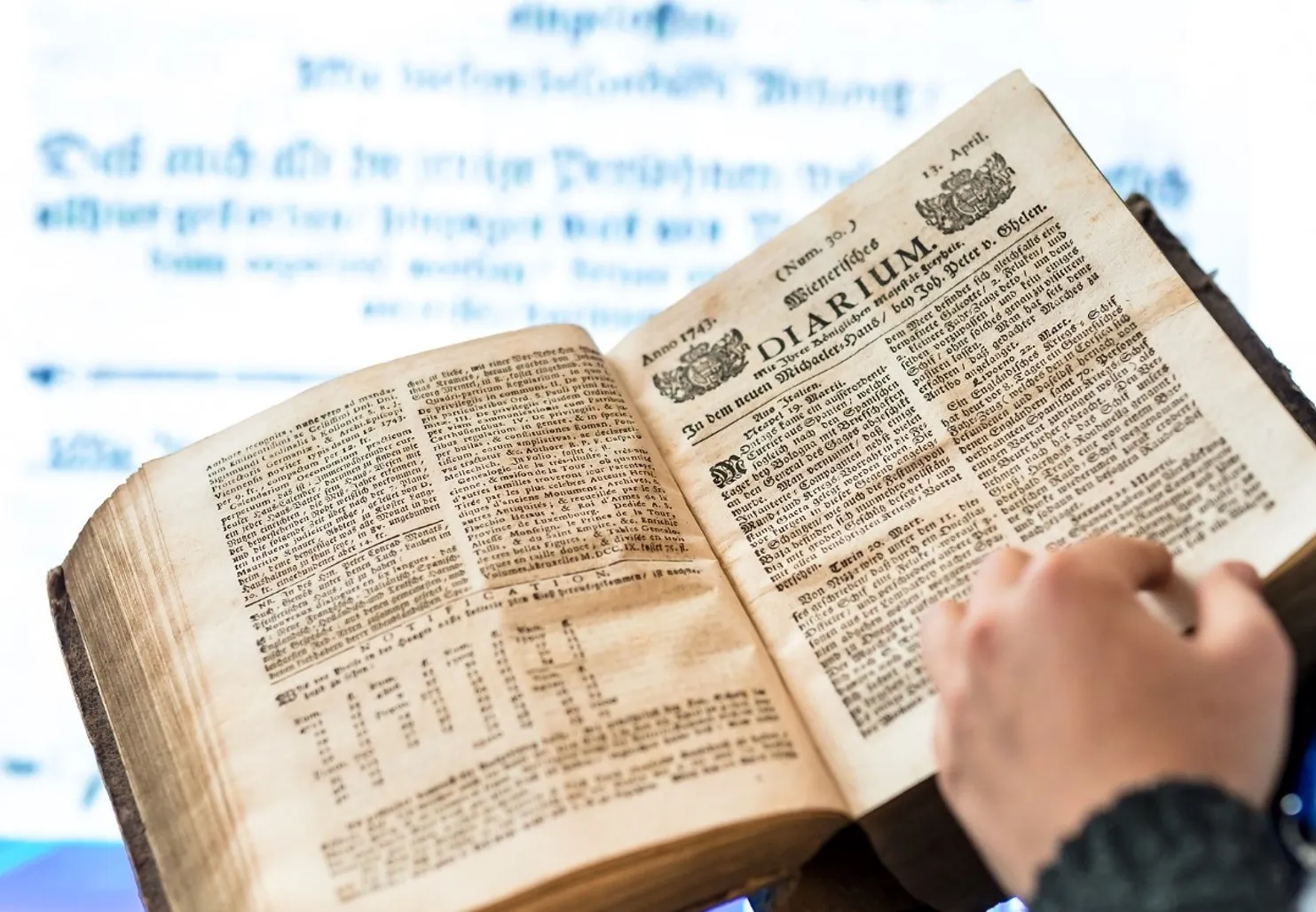
Digital edition of a representative reference corpus of the Wien[n]erisches Diarium / Wiener Zeitung in the 18th century.
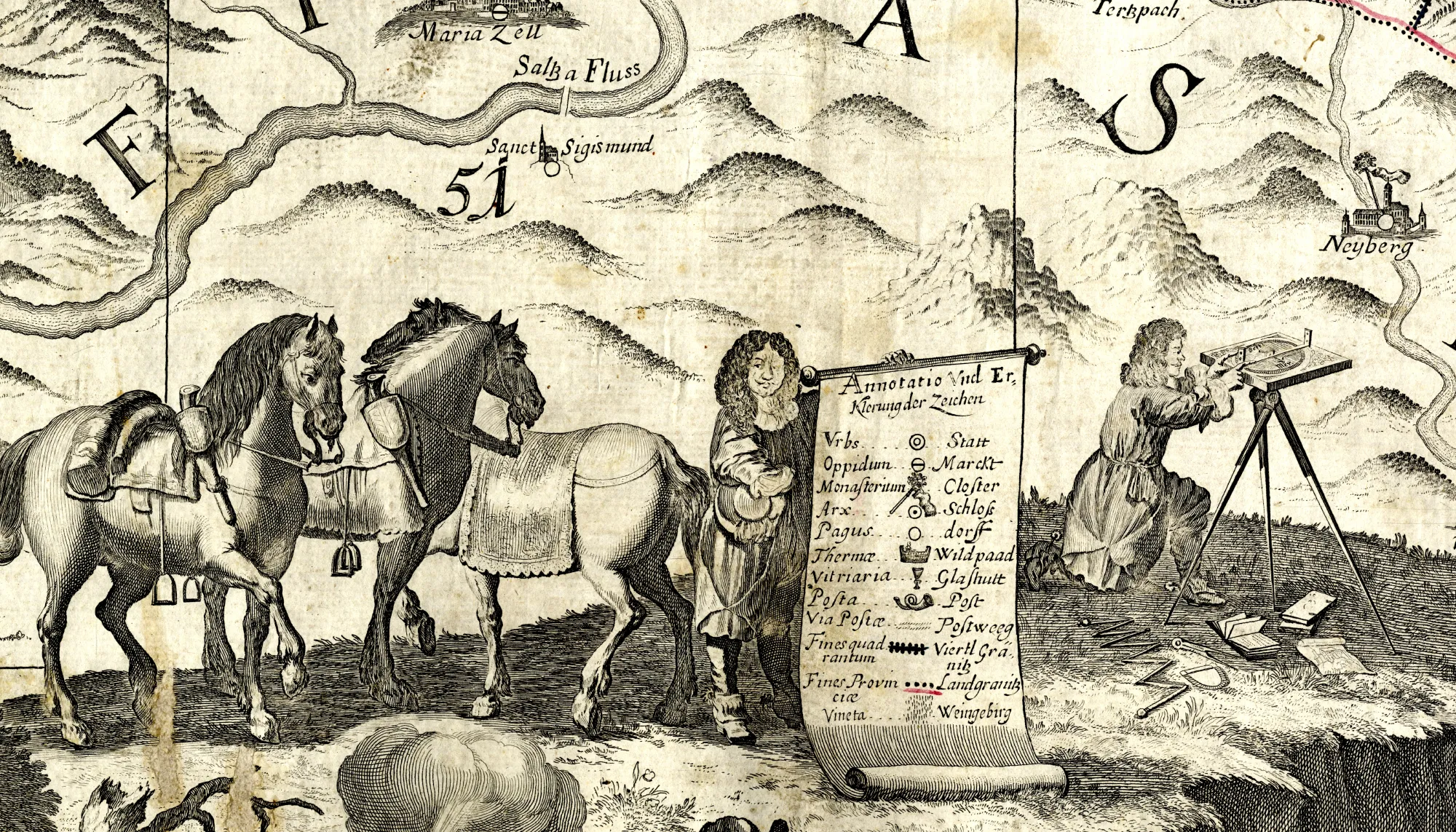
The collection of the Viennese private scholar Erich Woldan (1901-1989) was during his lifetime probably the most comprehensive private compilation of old geographic books and maps in Austria.